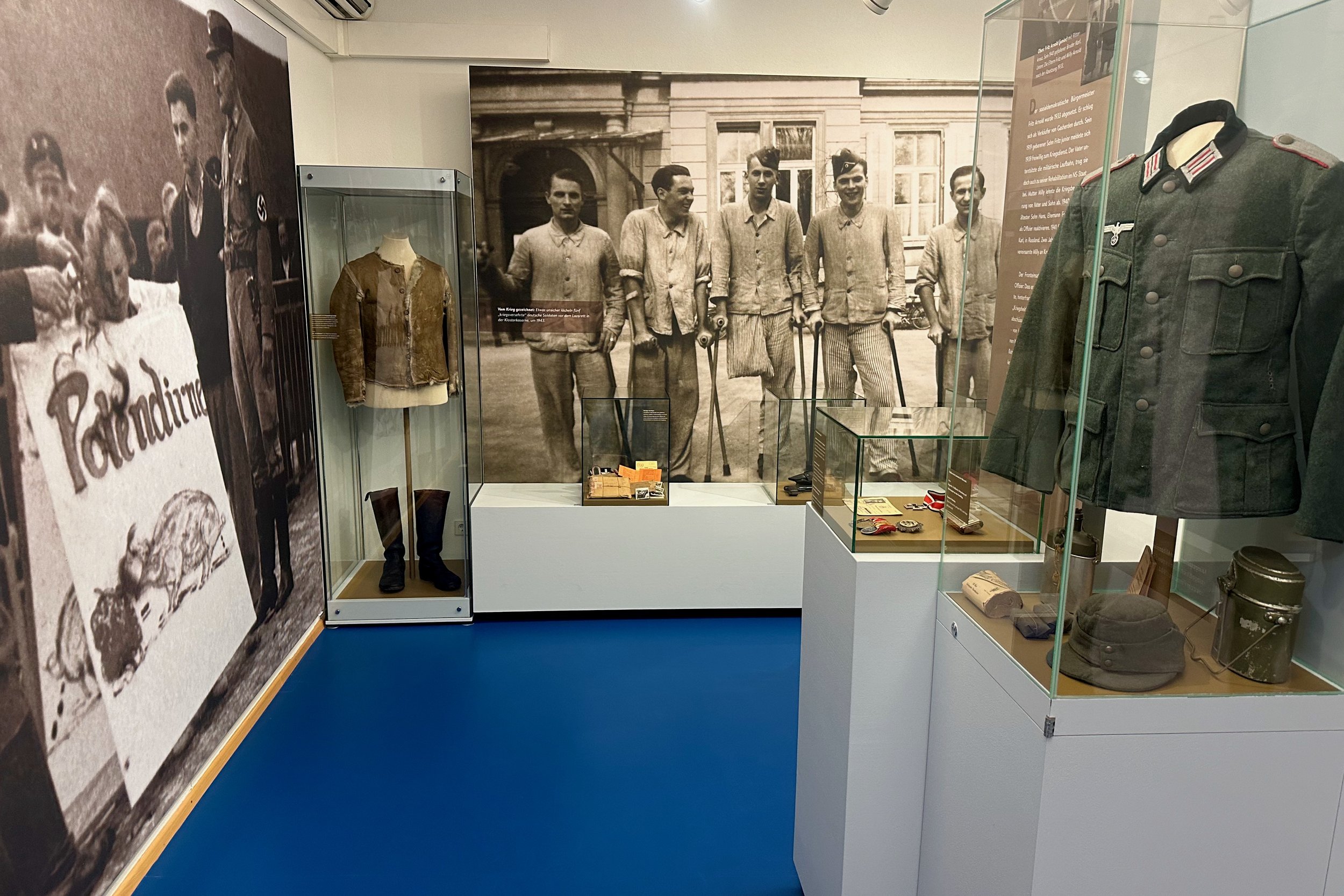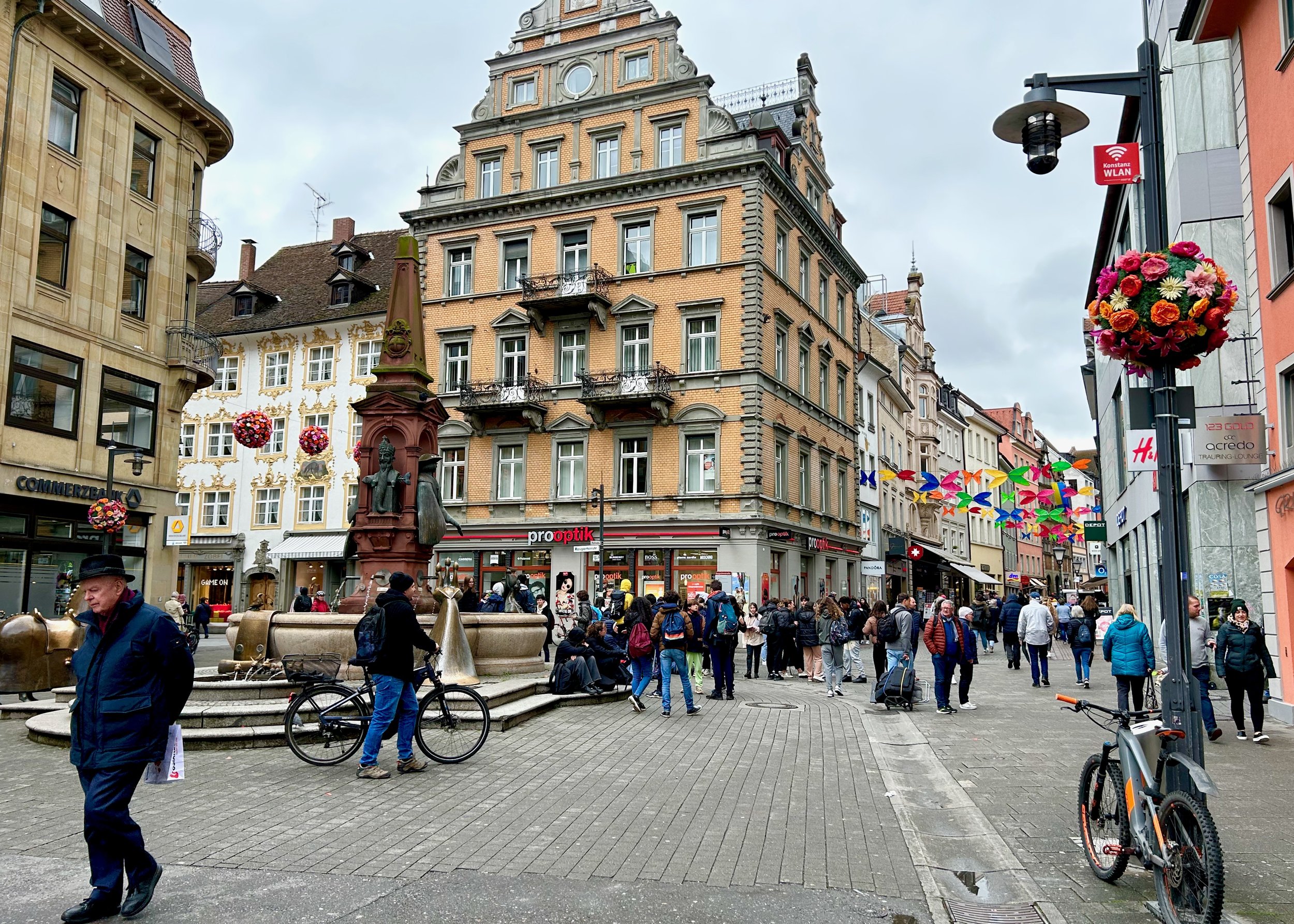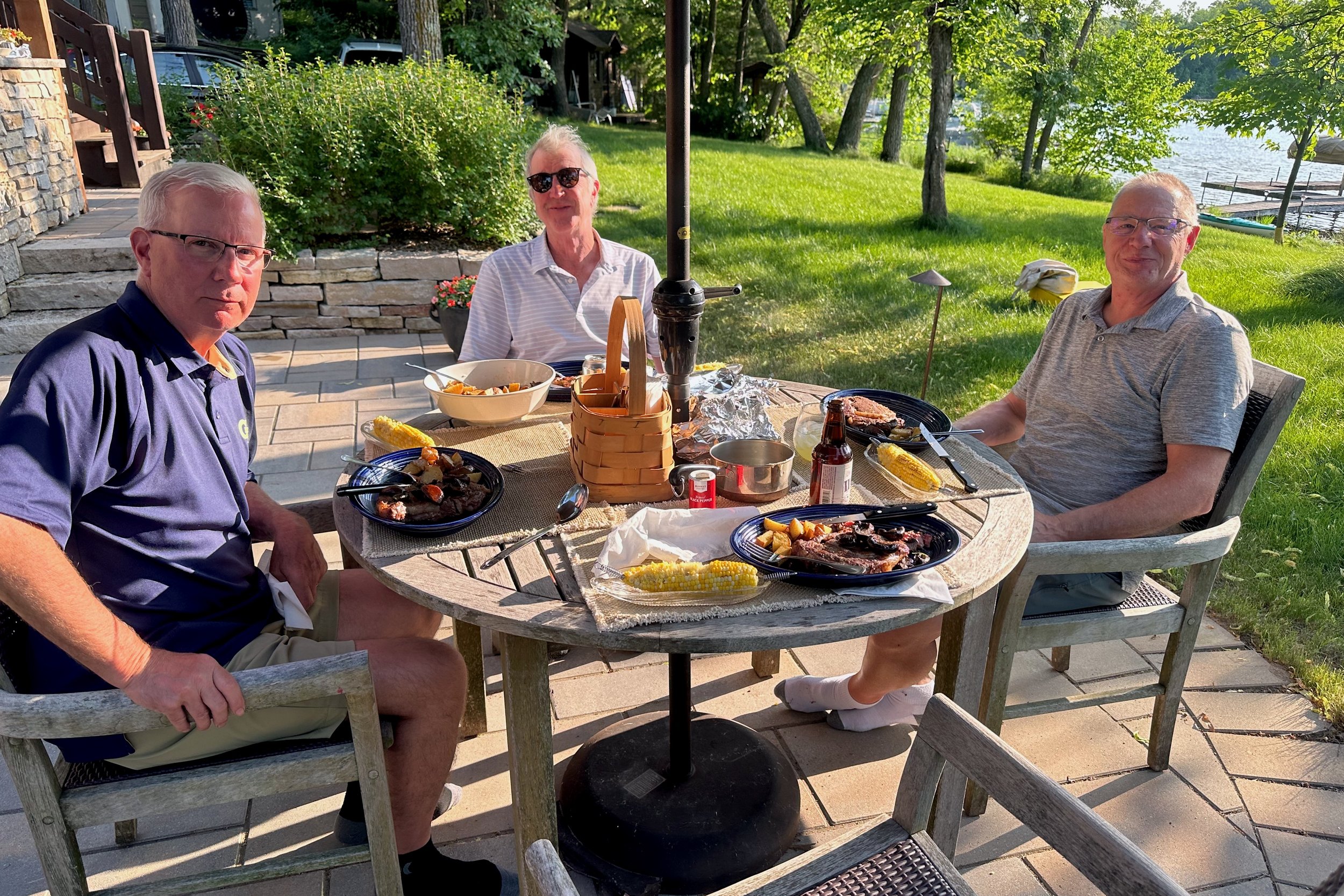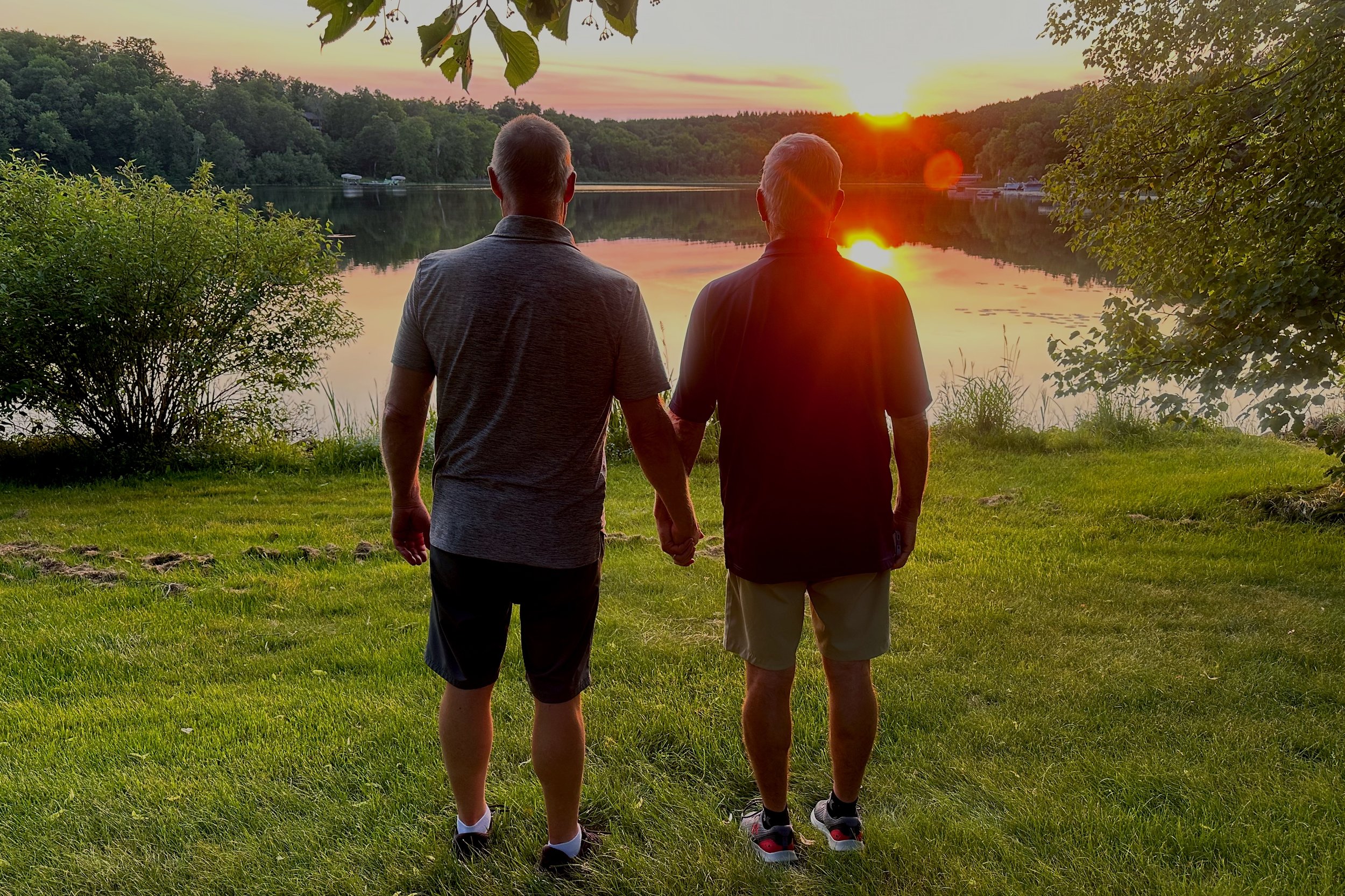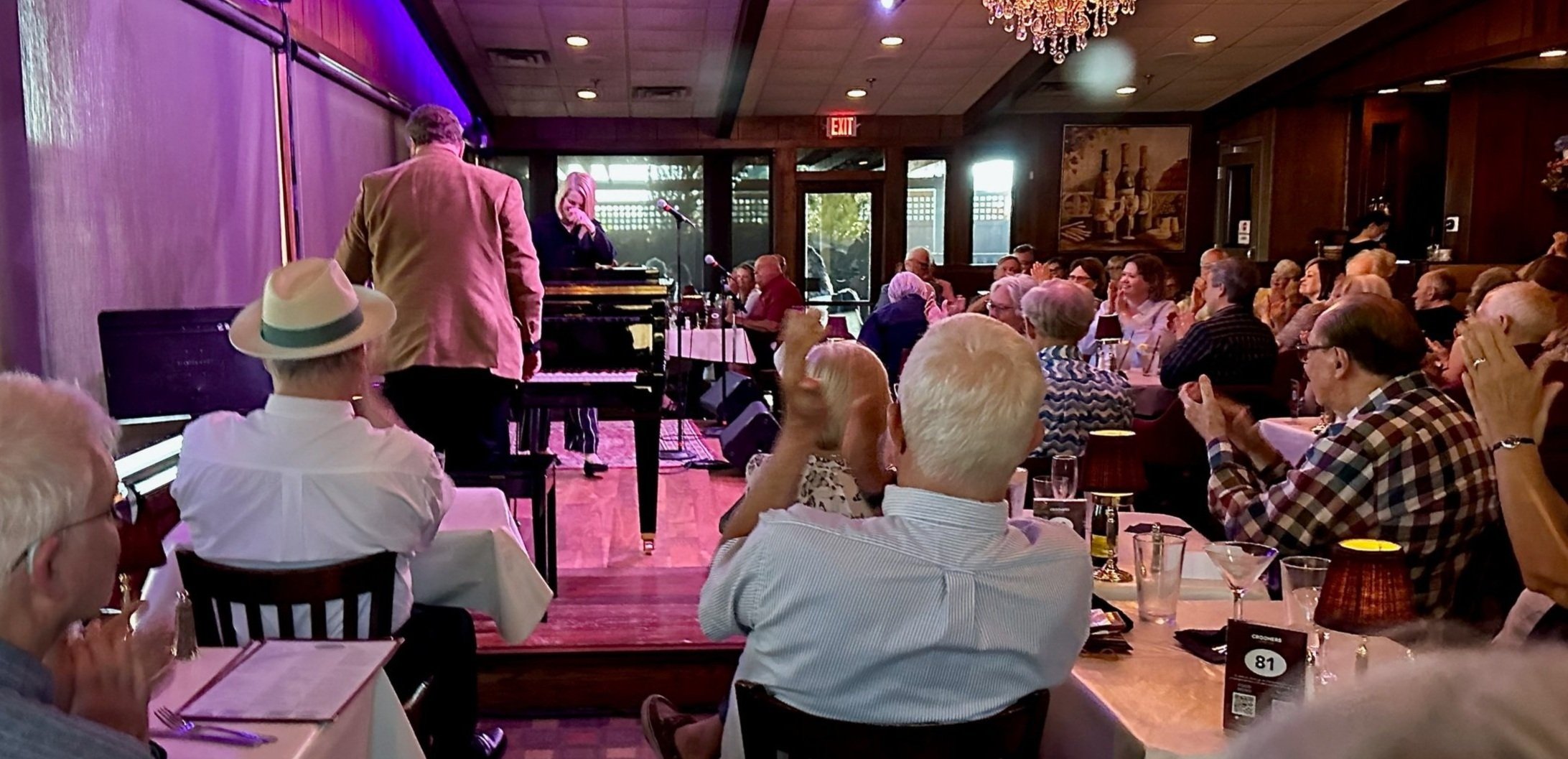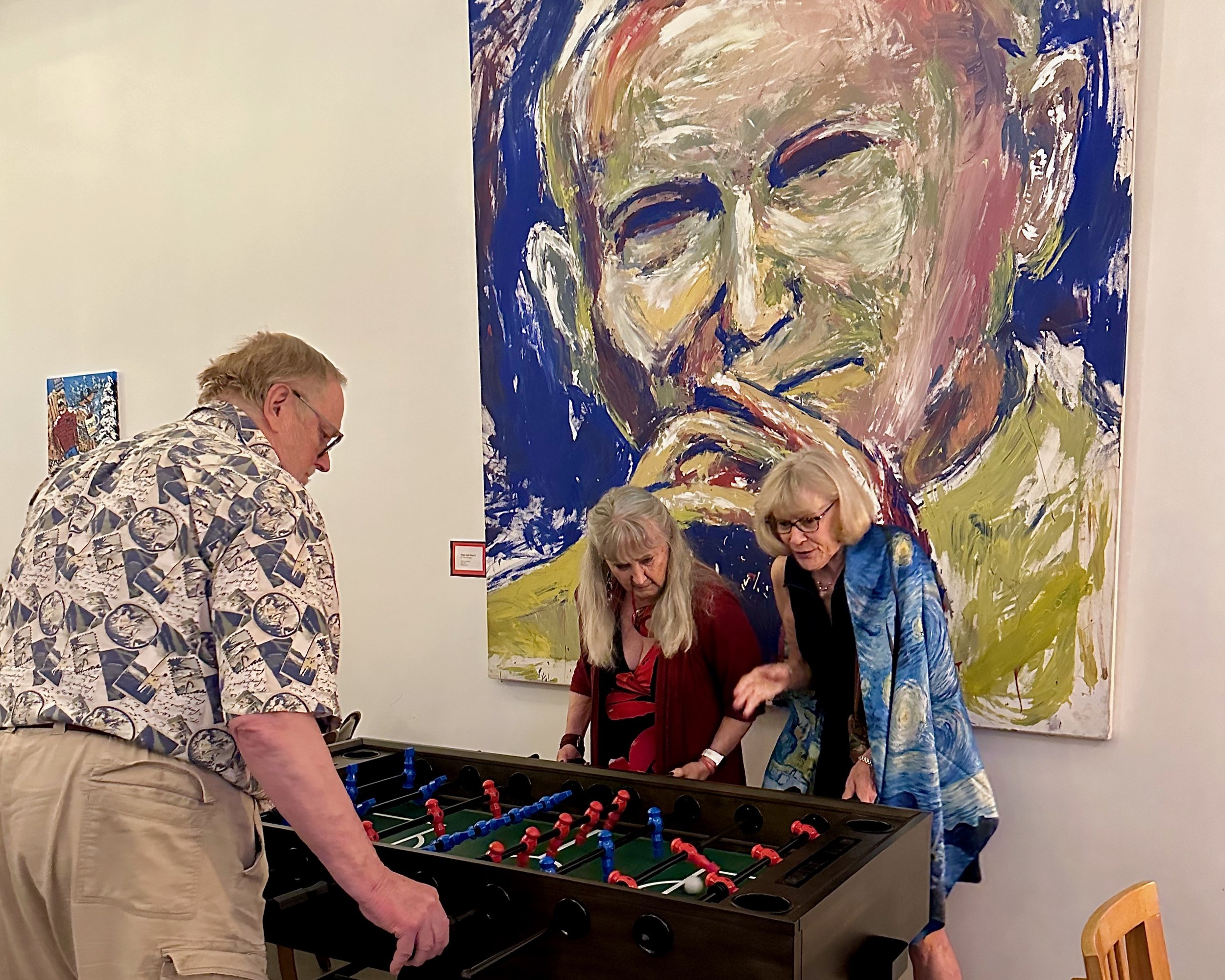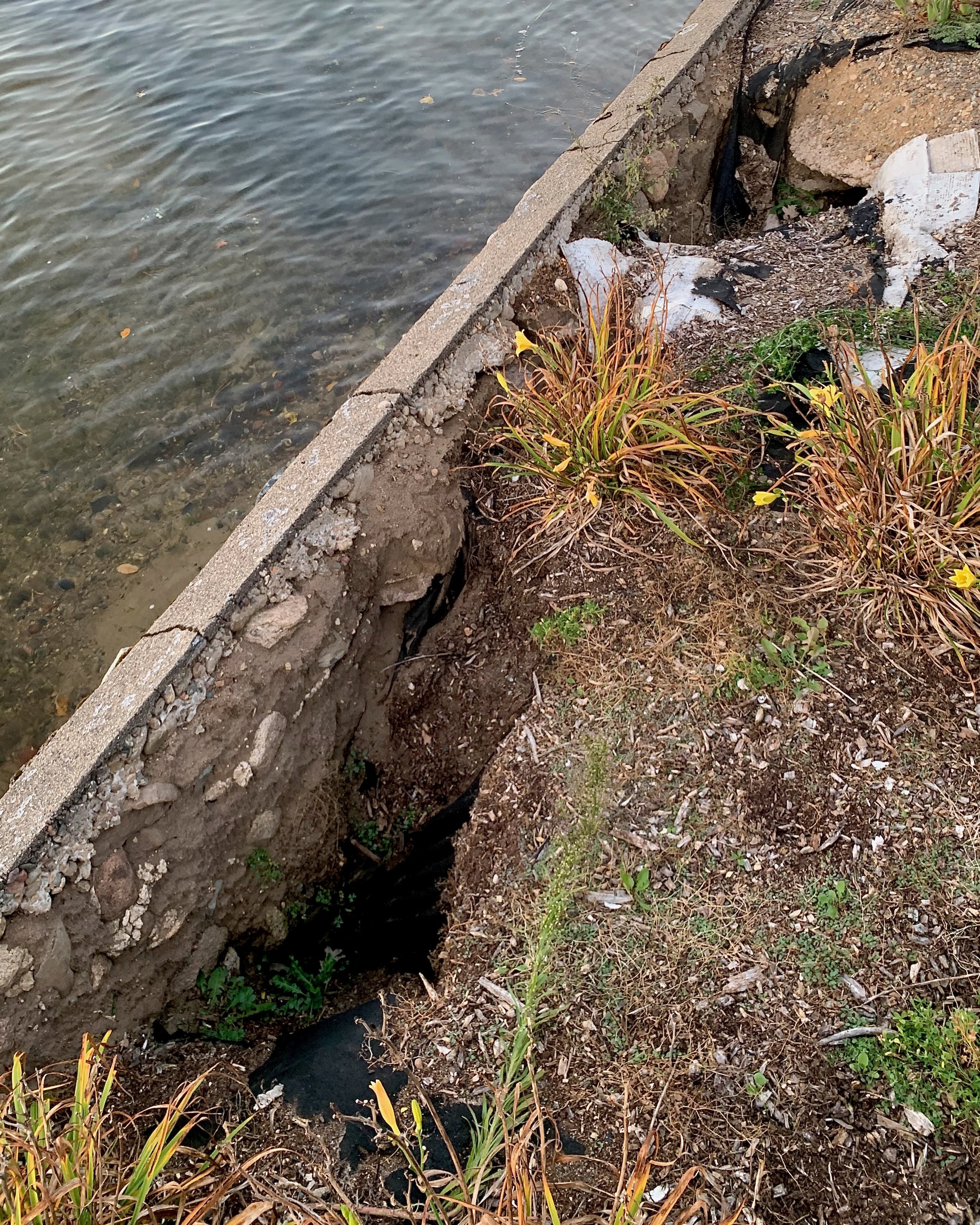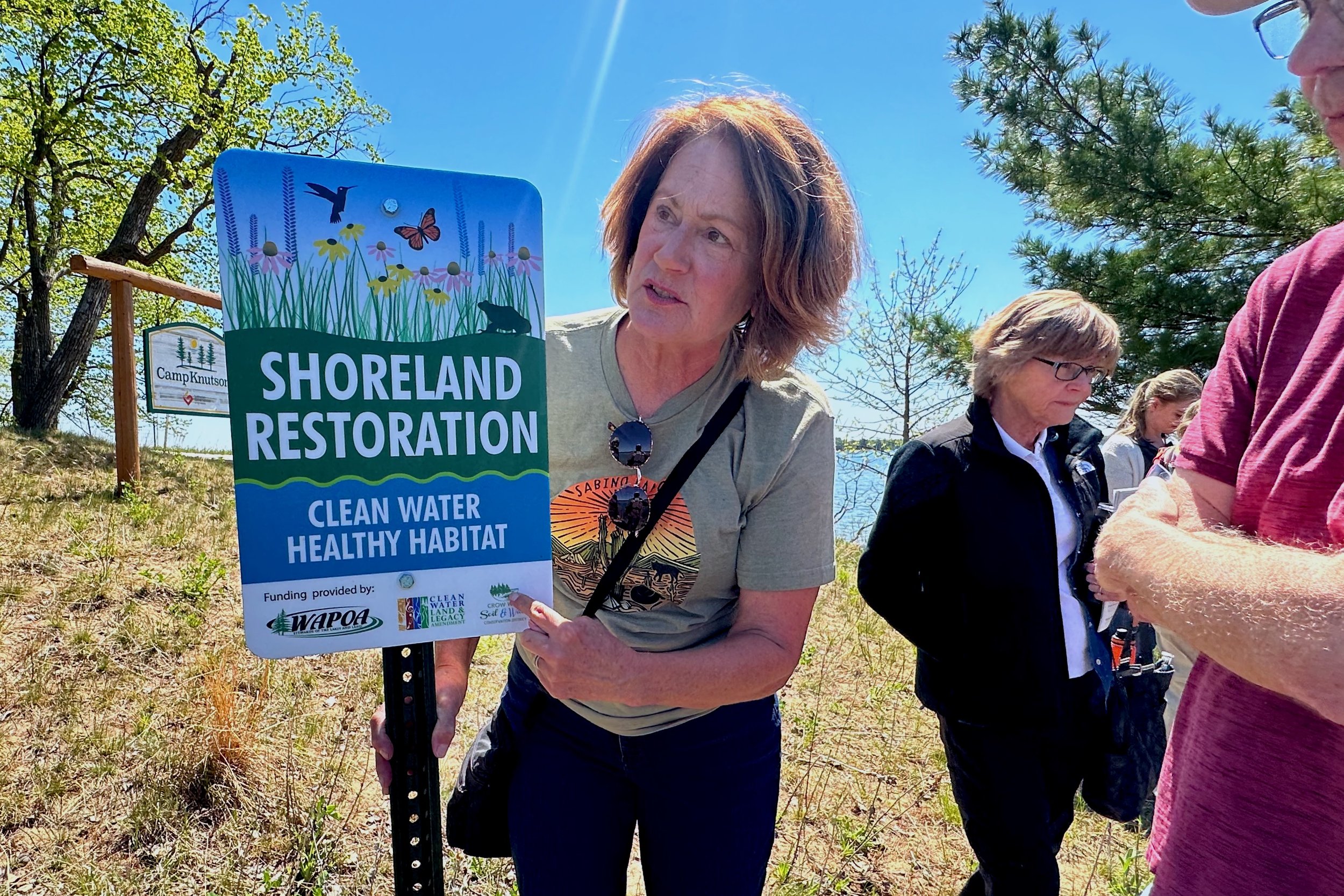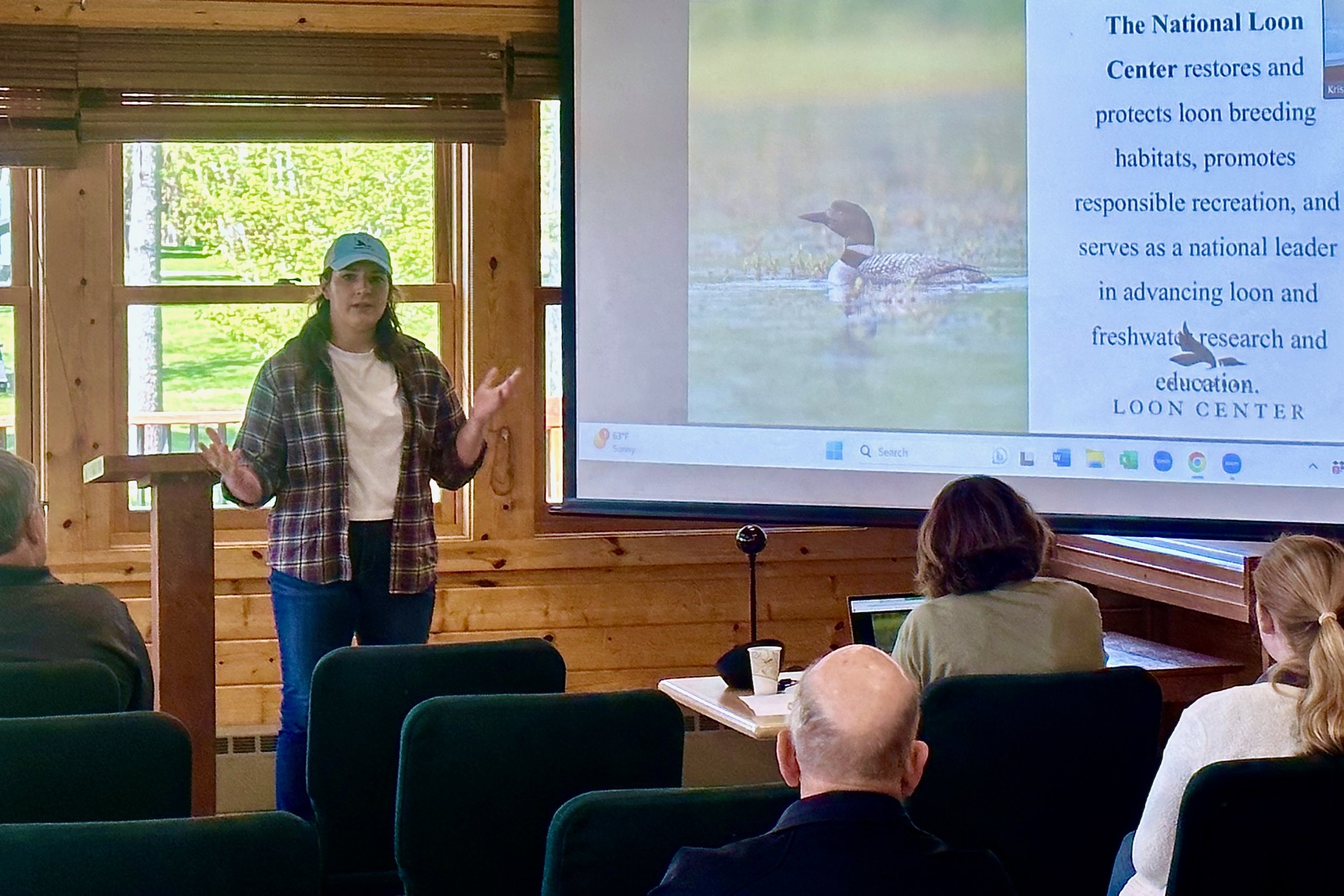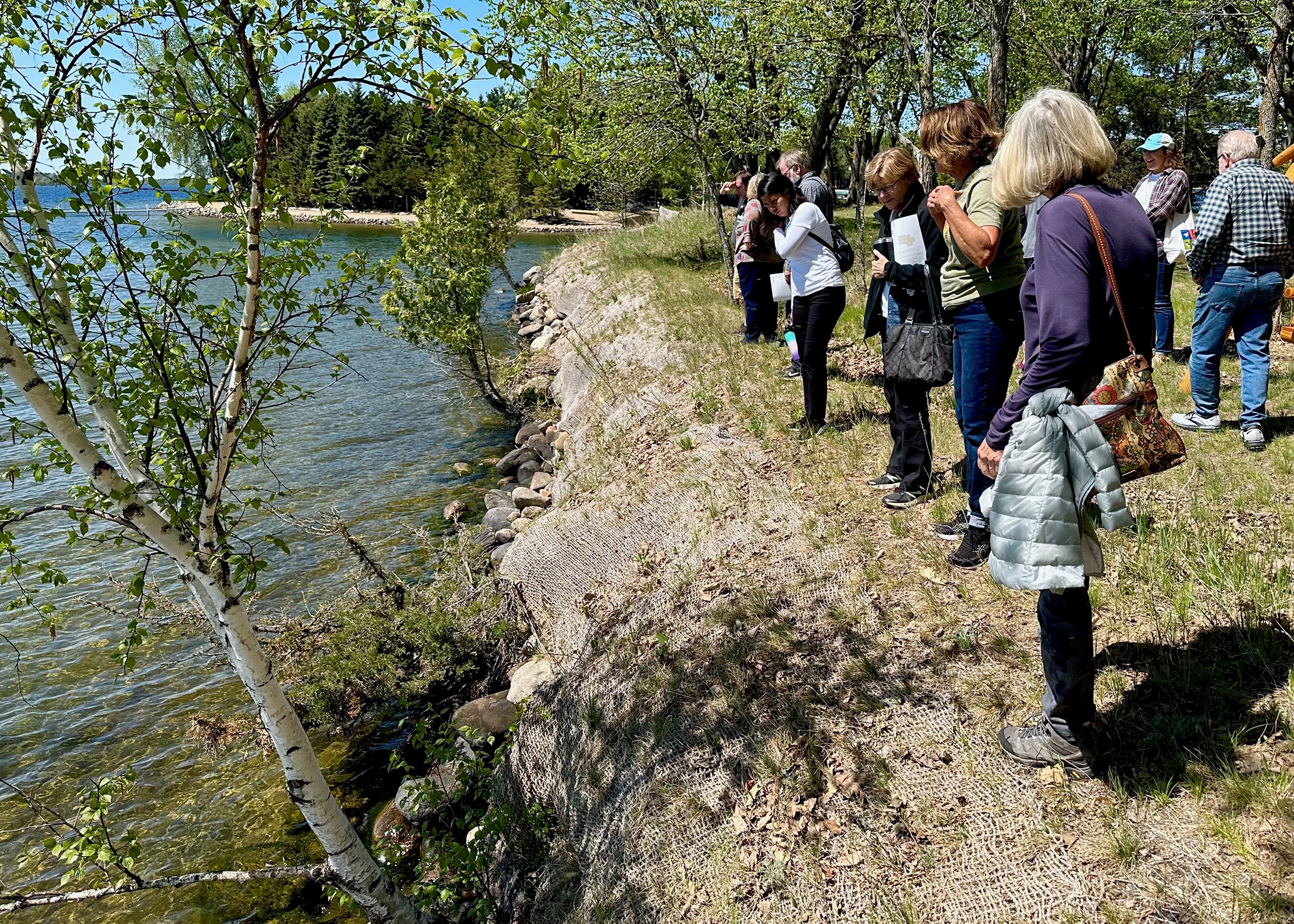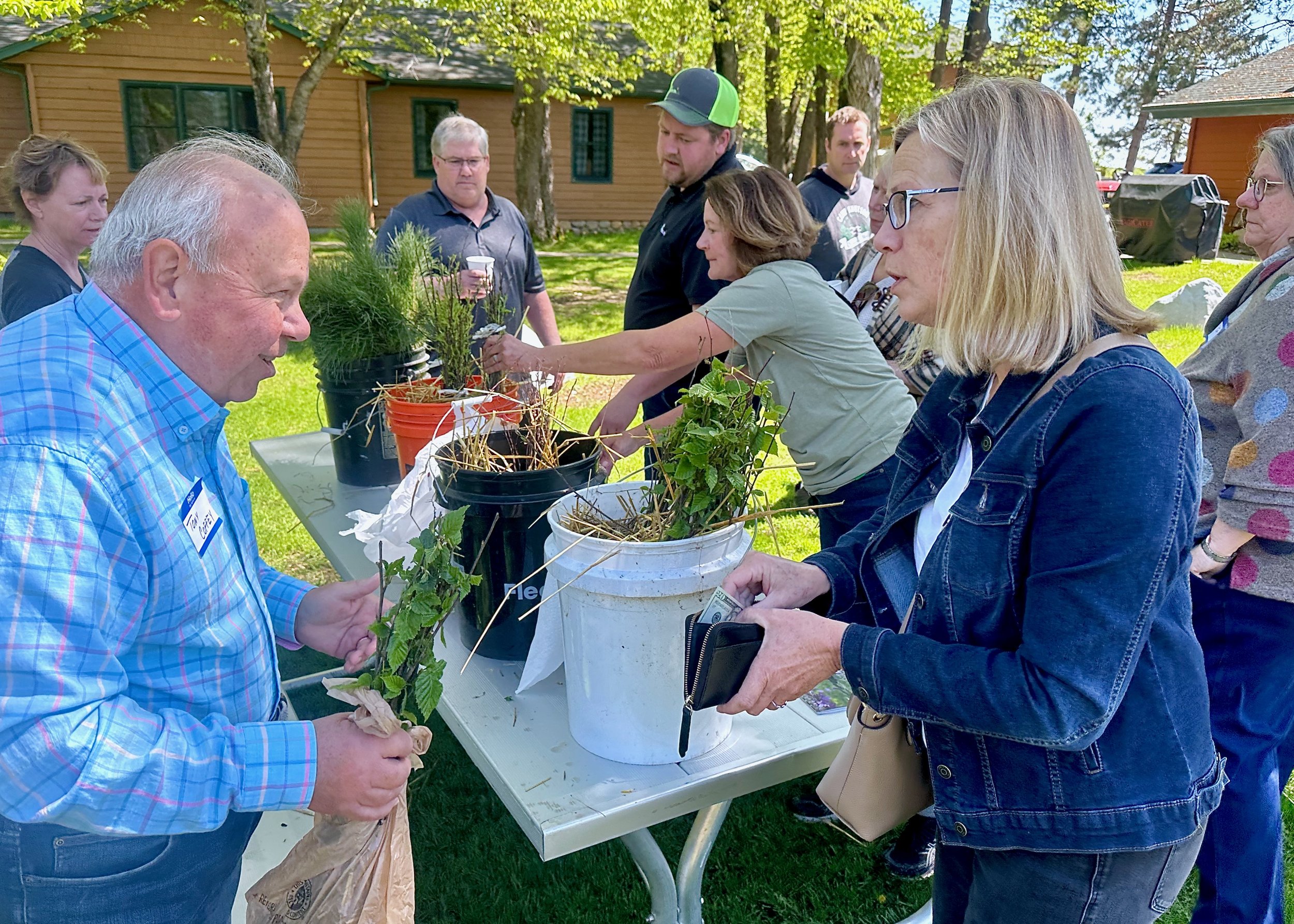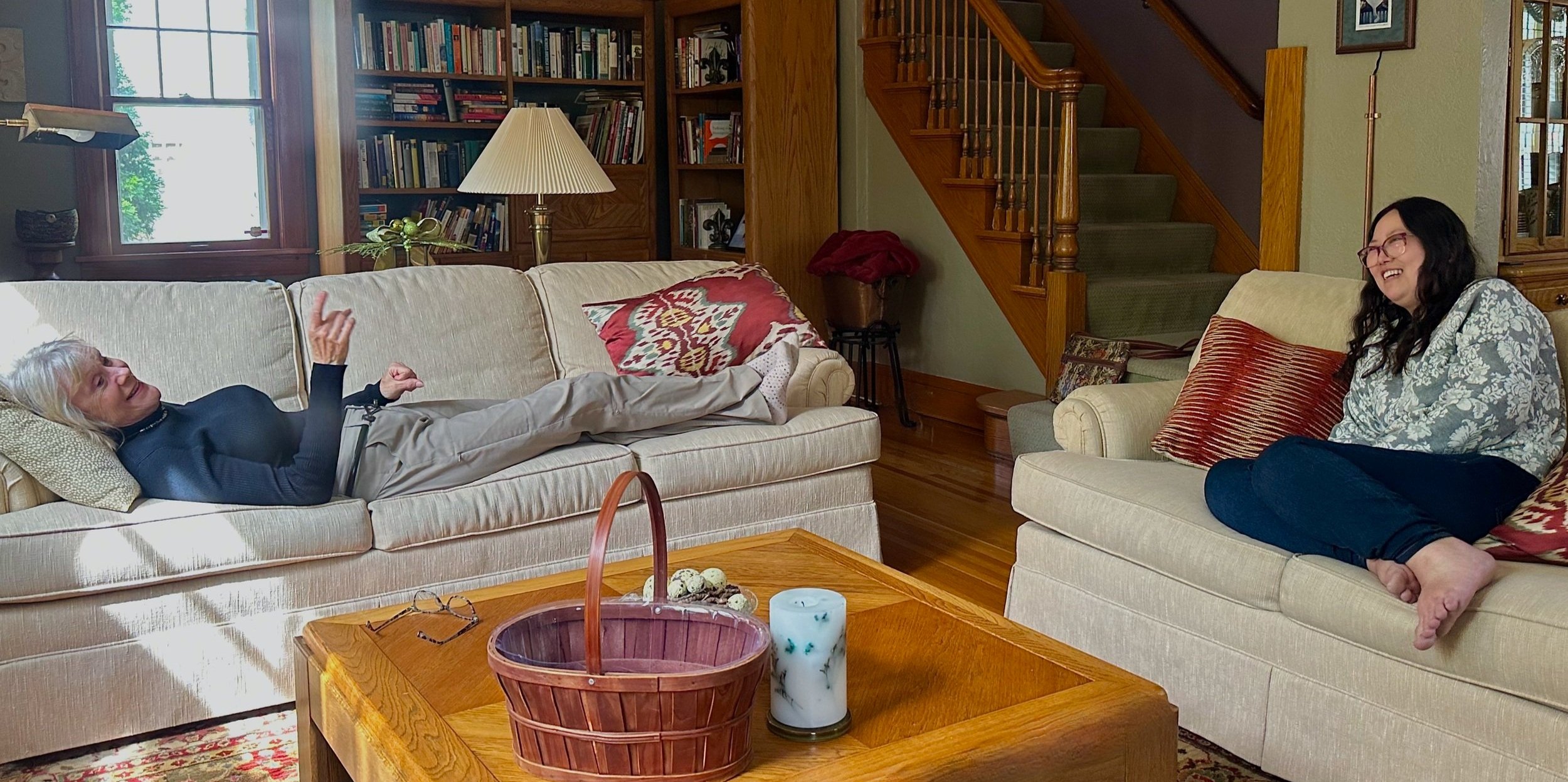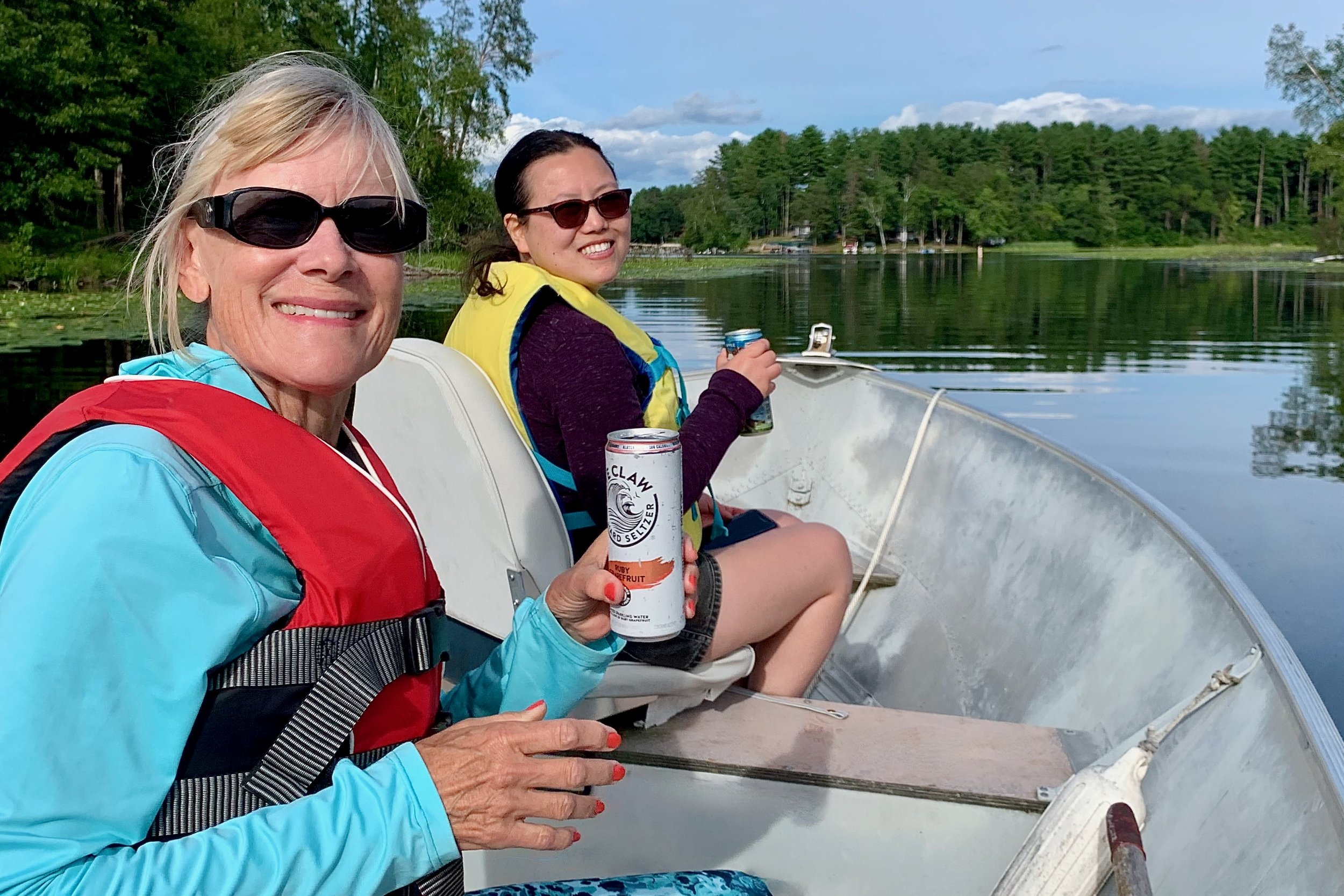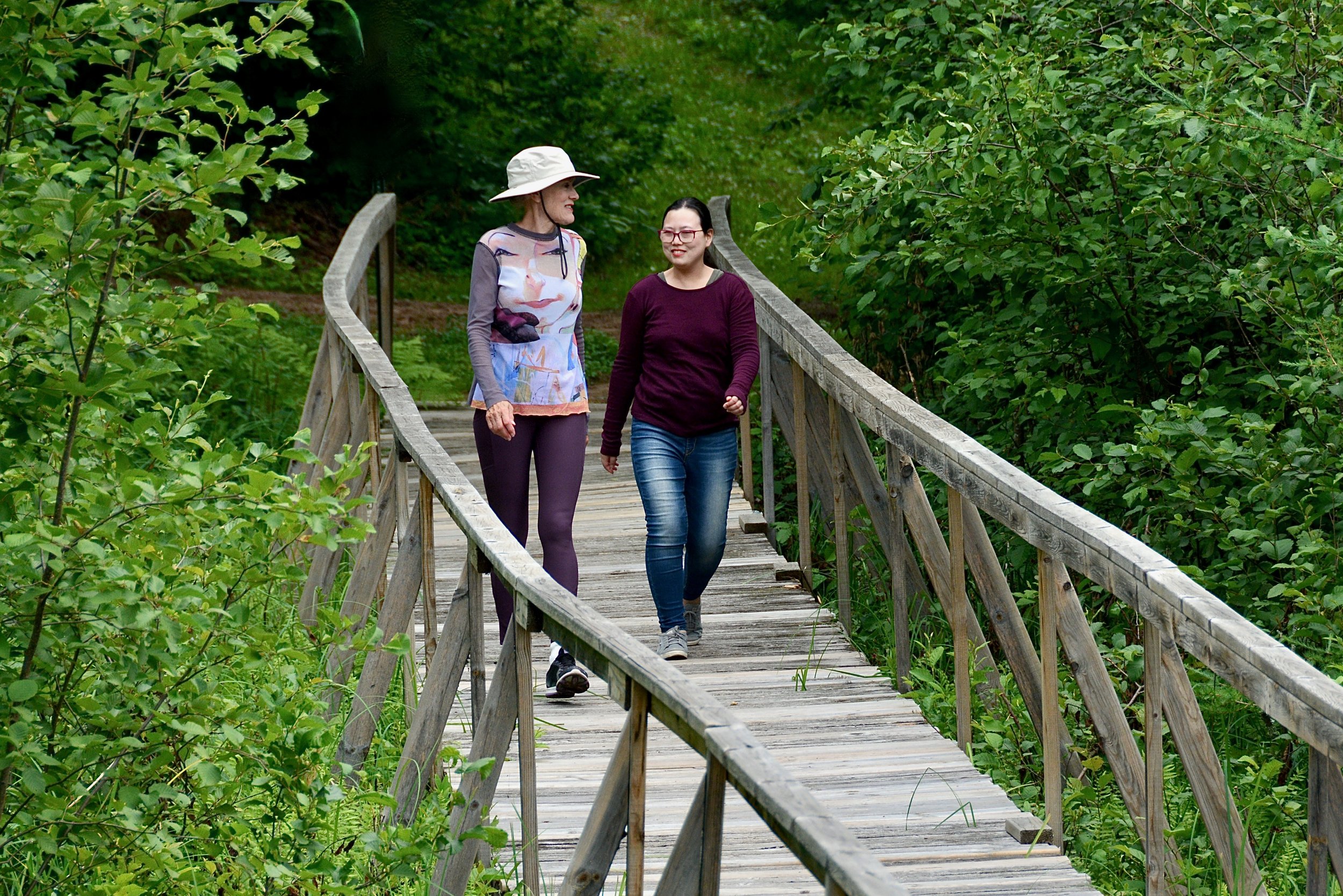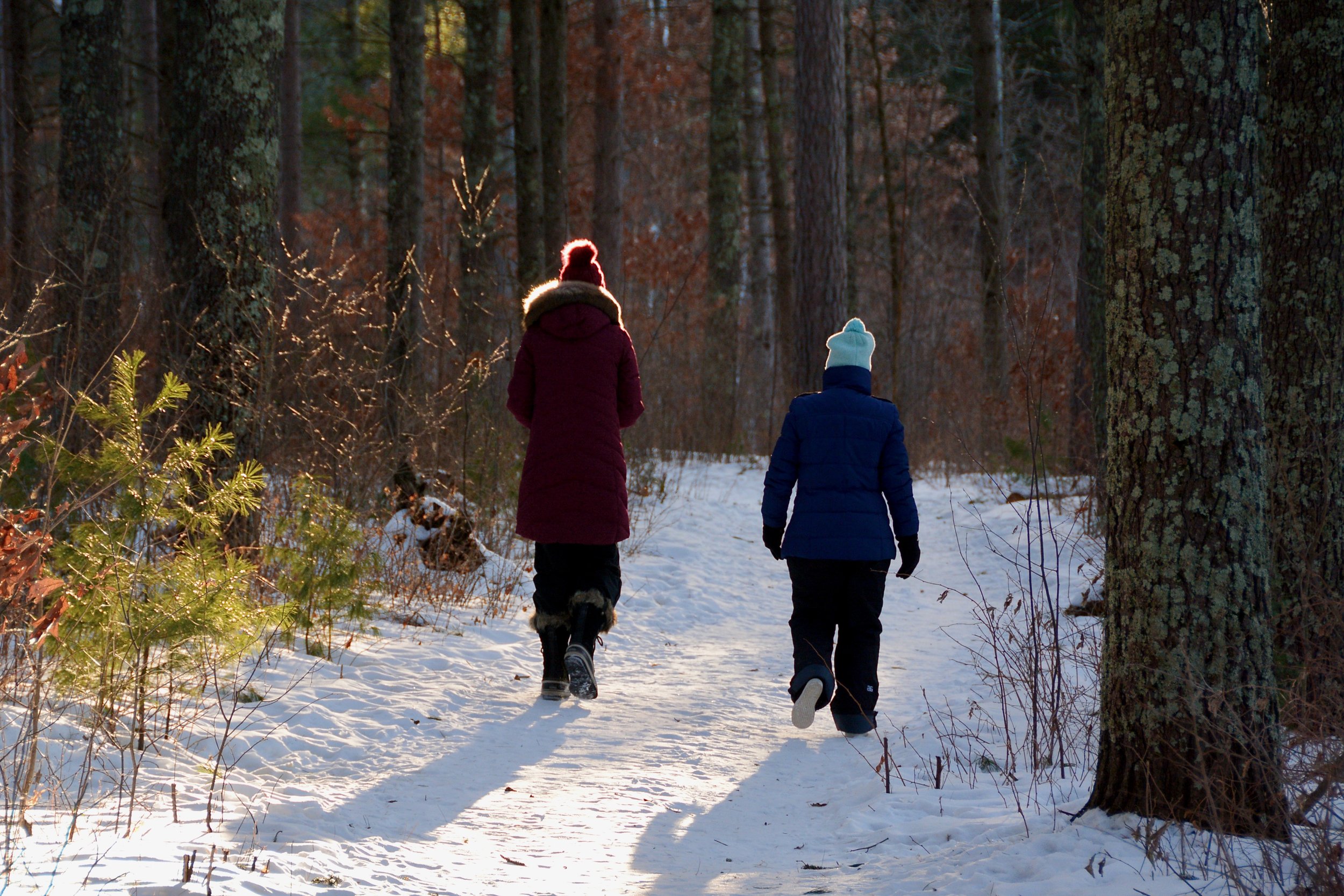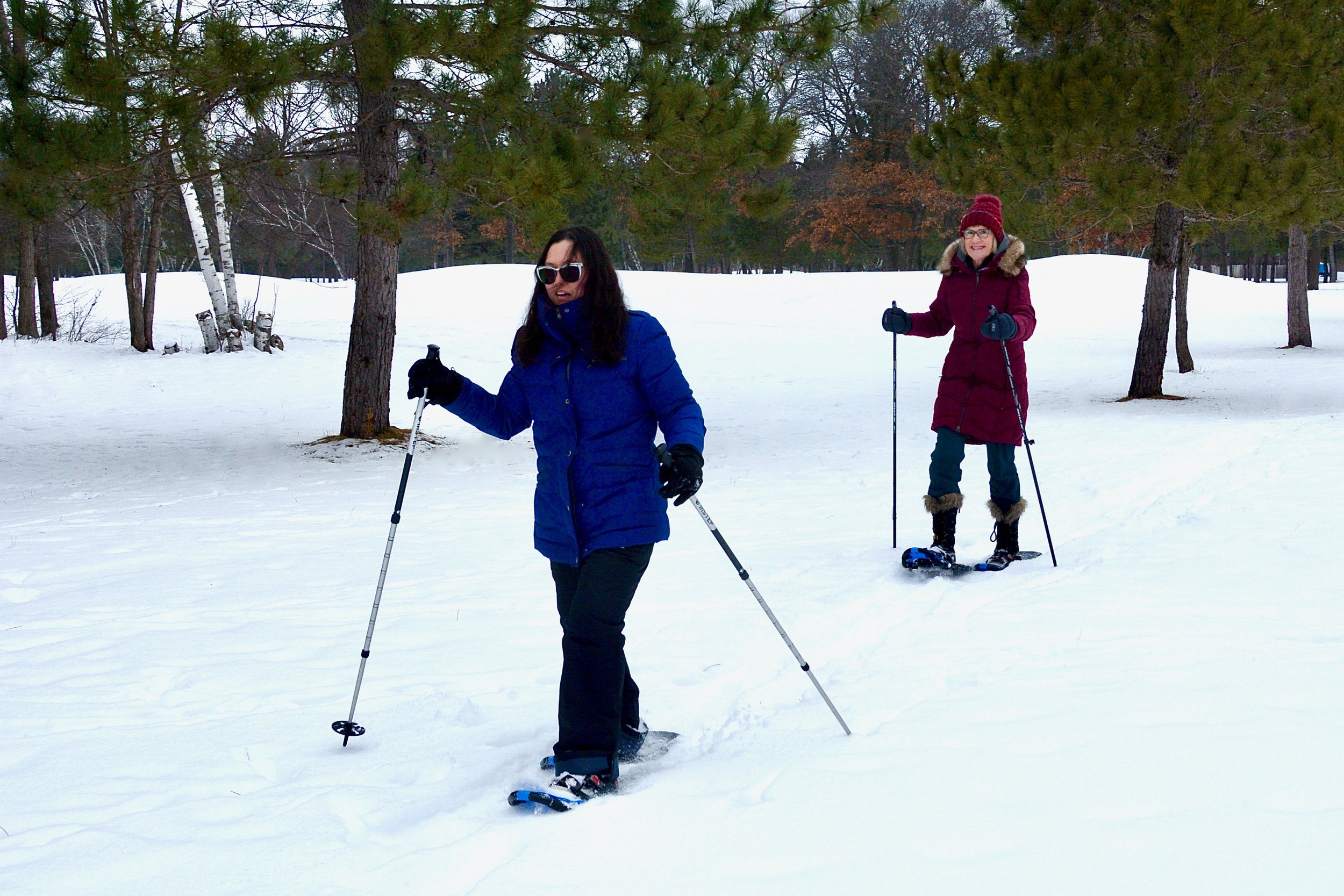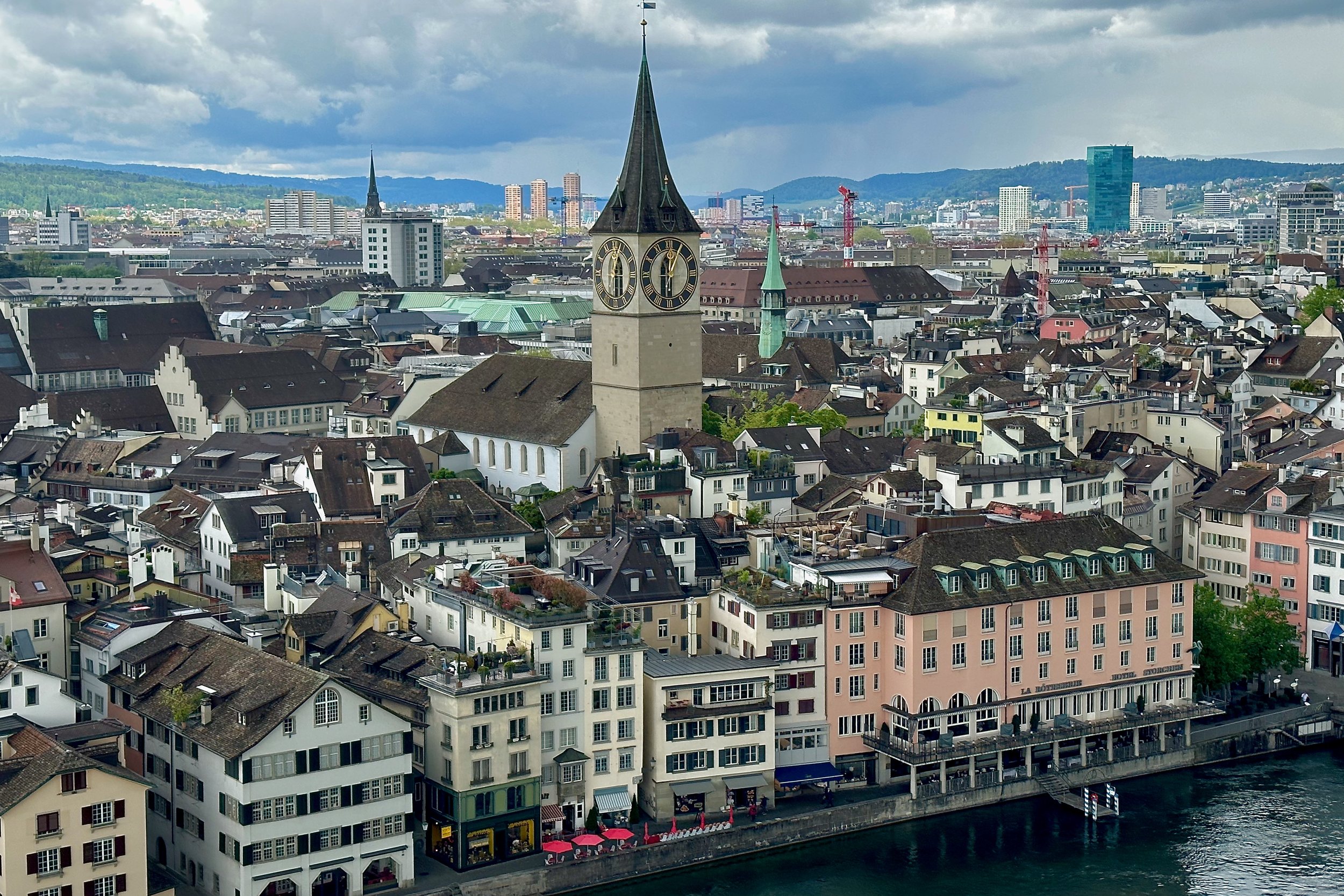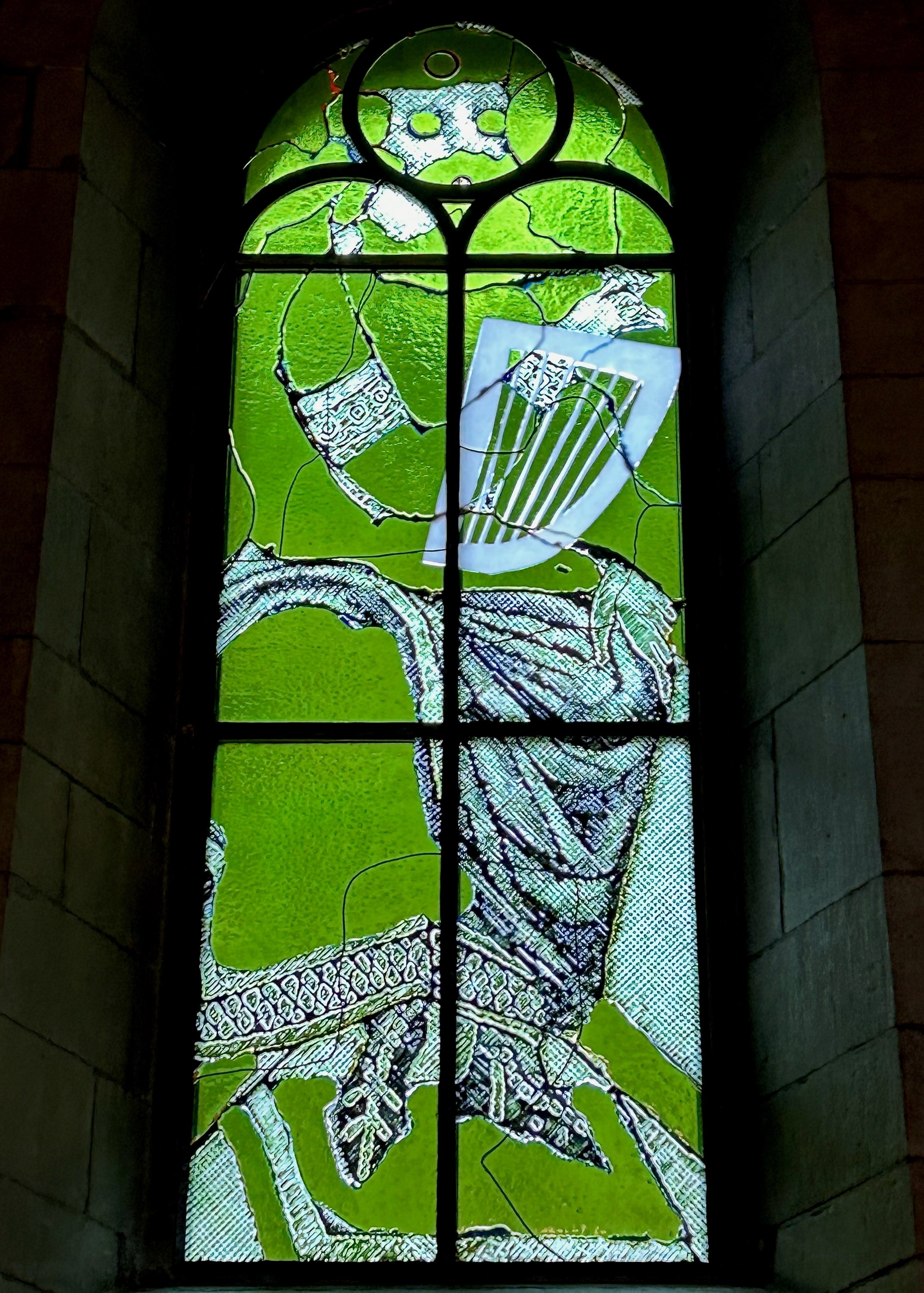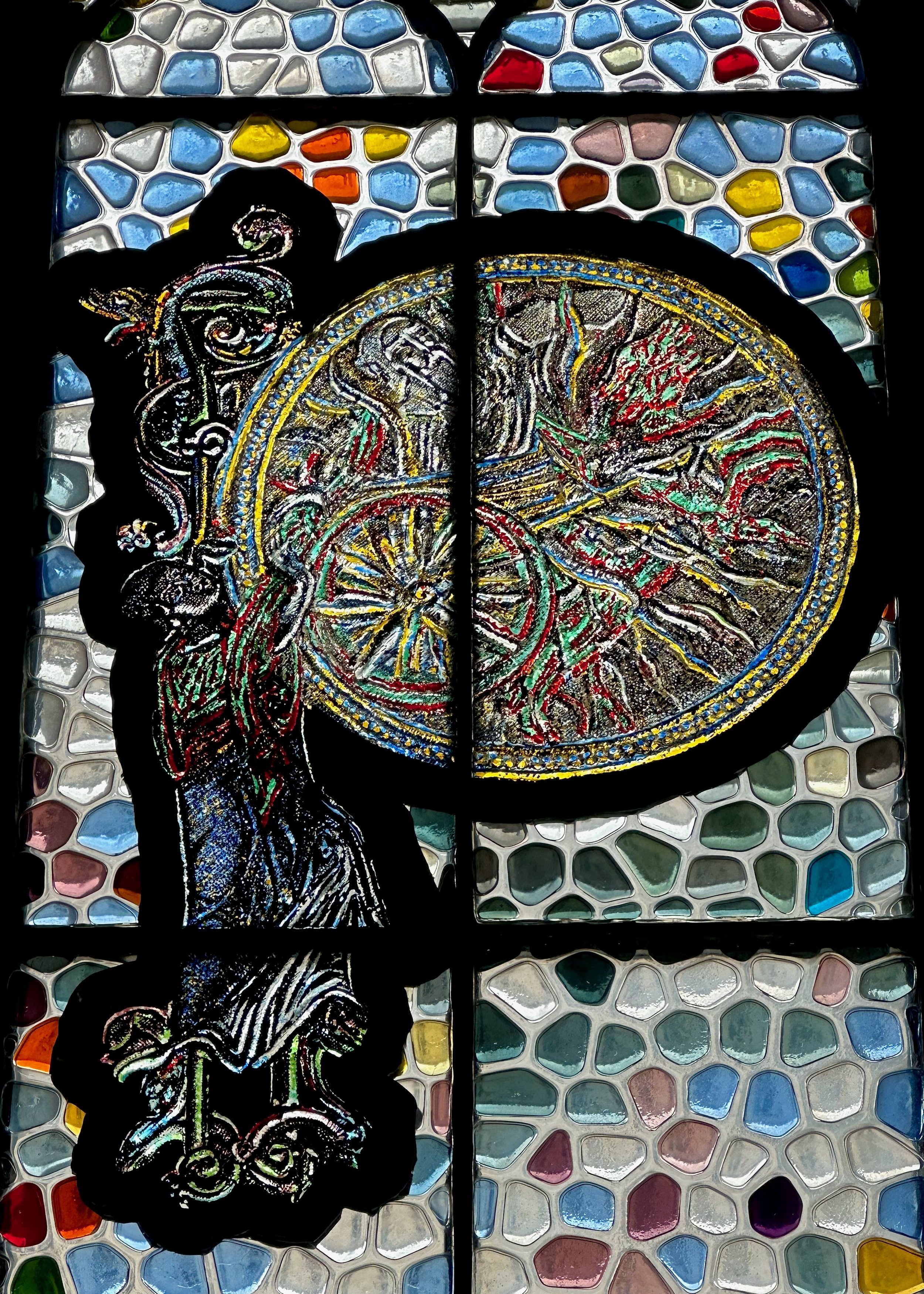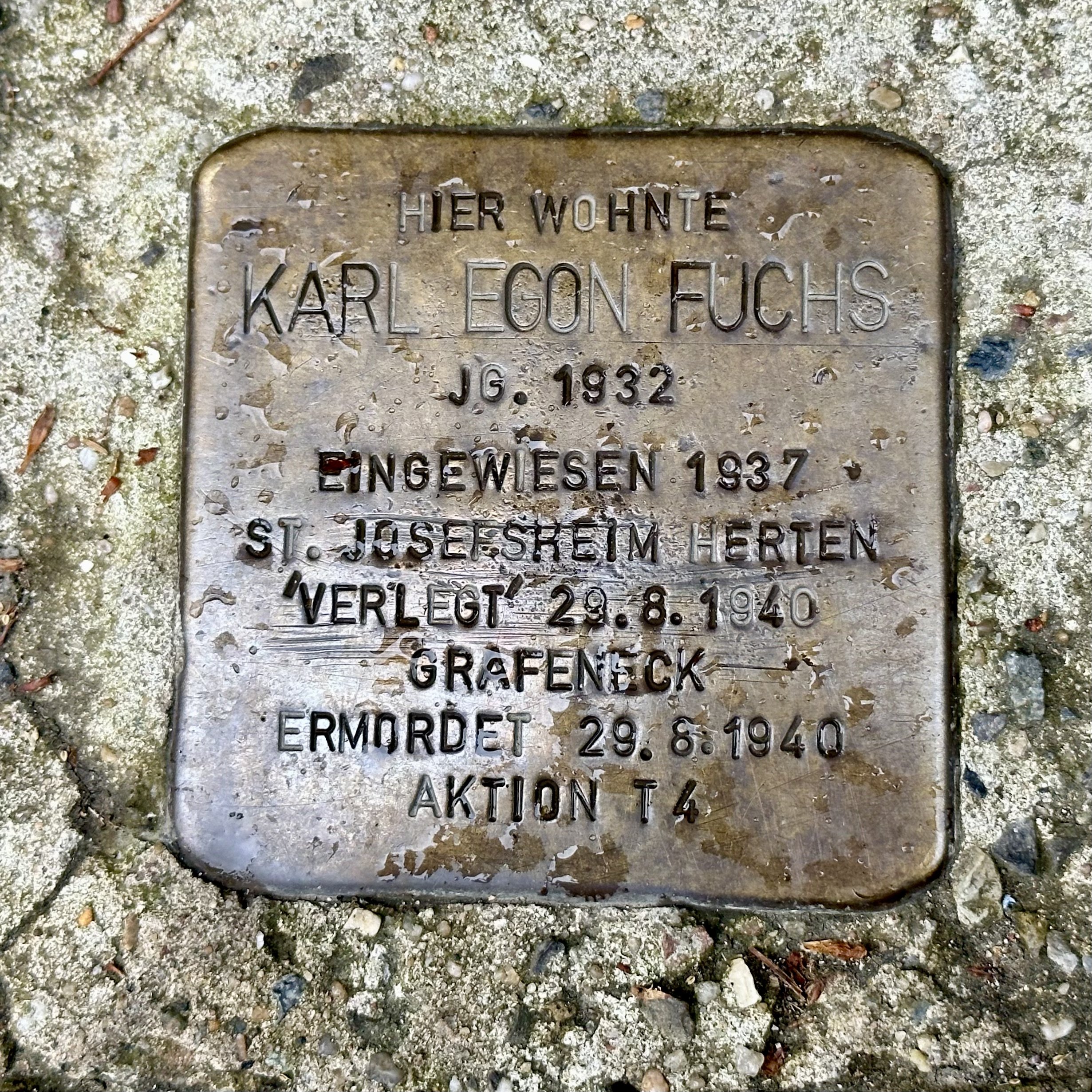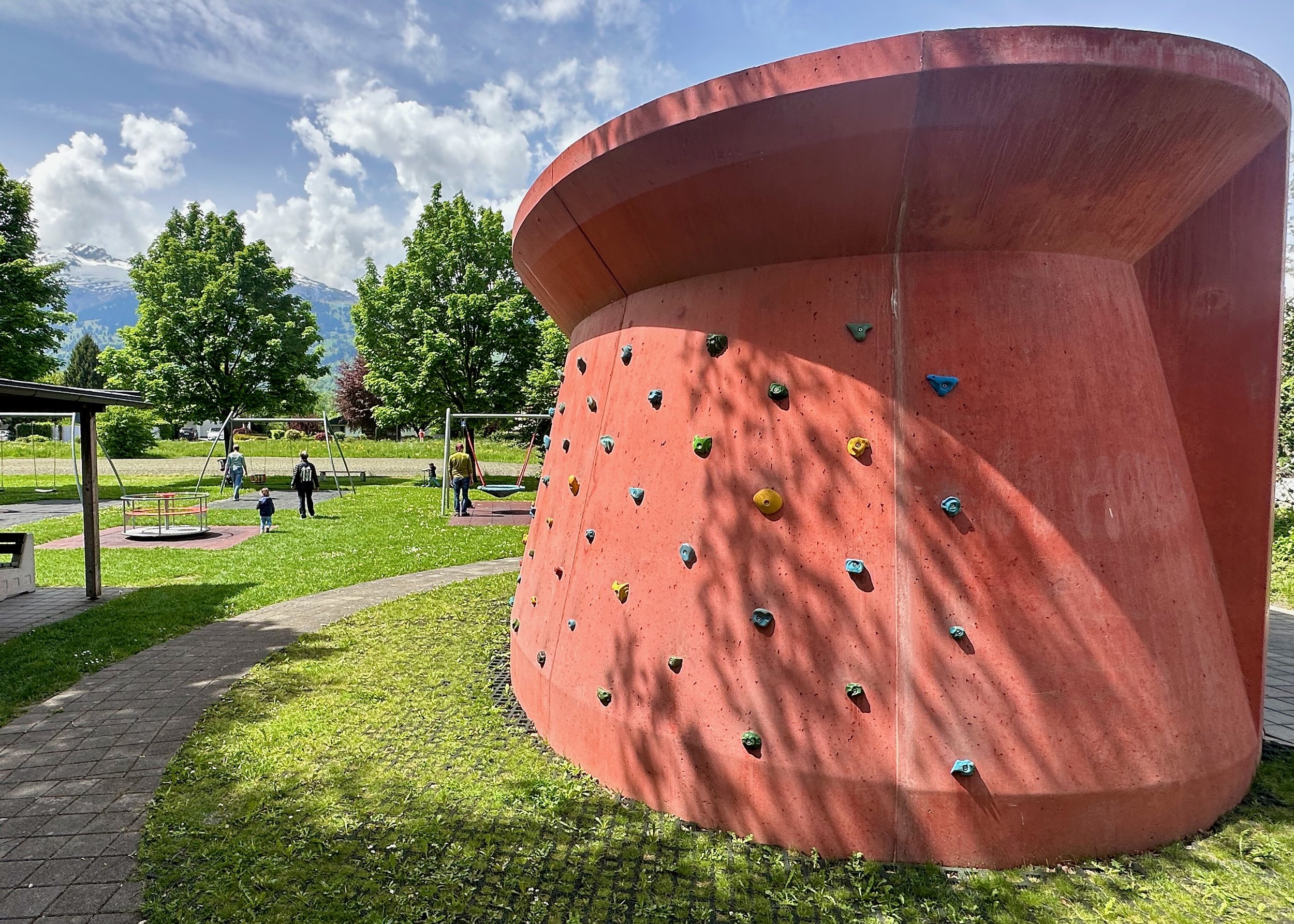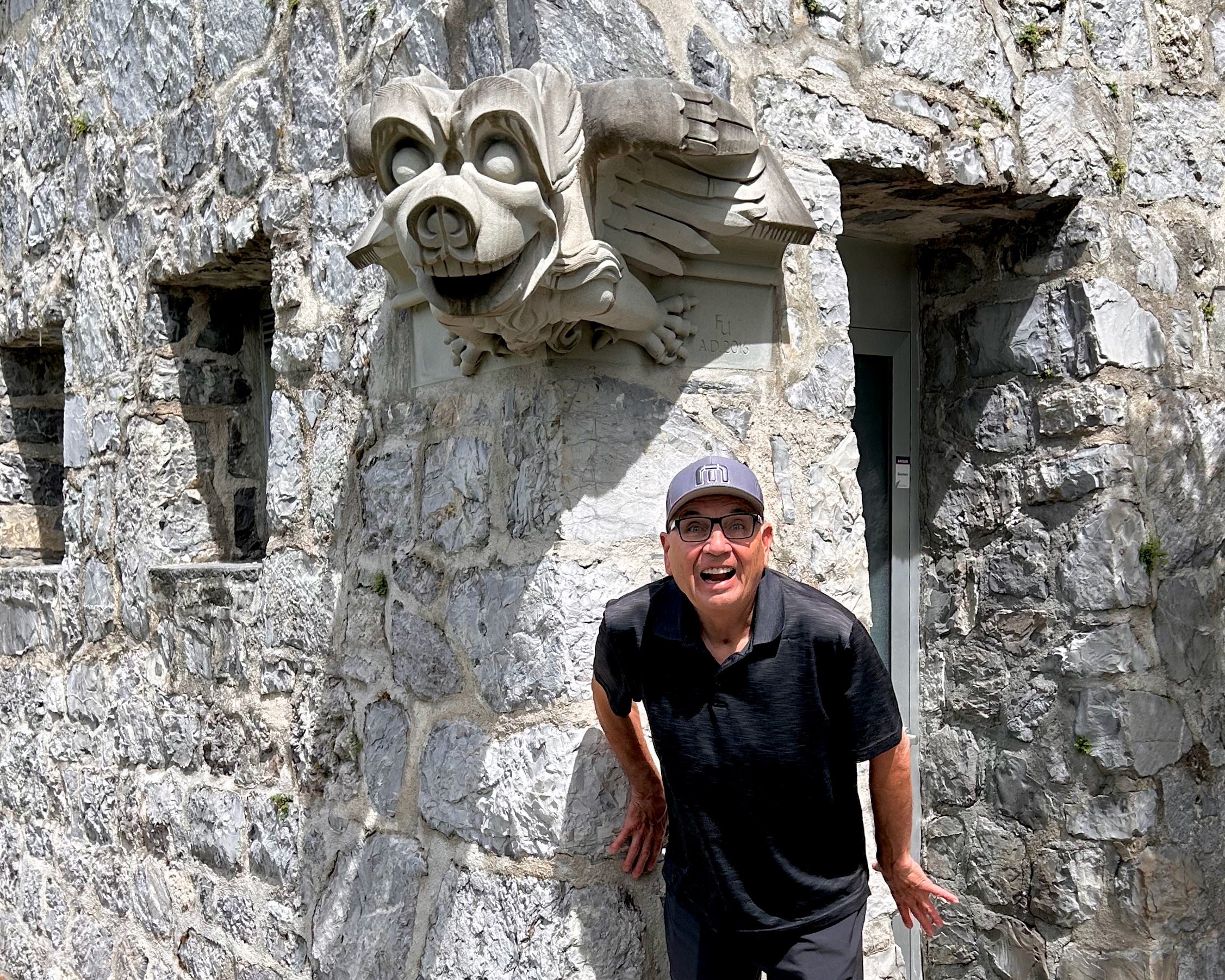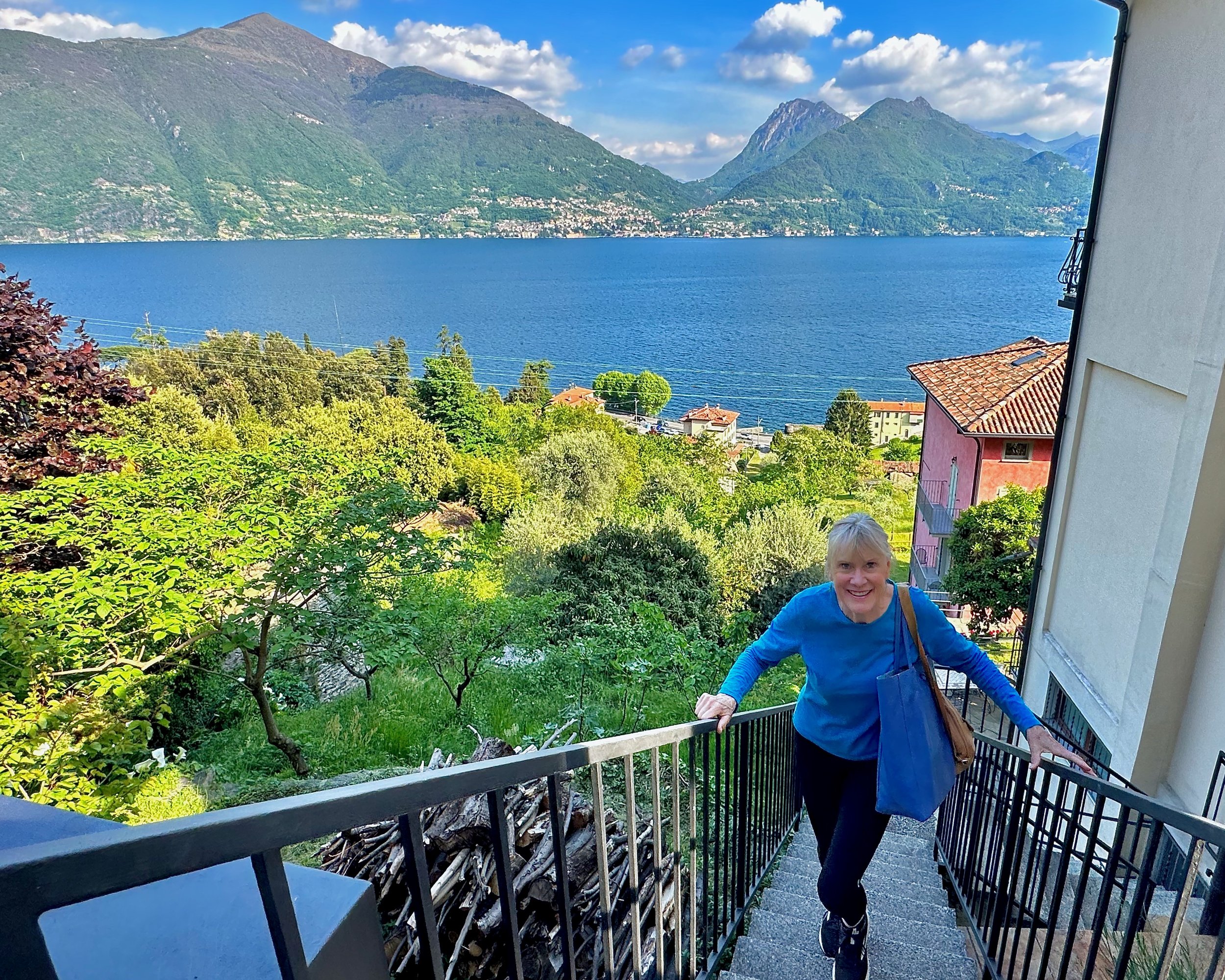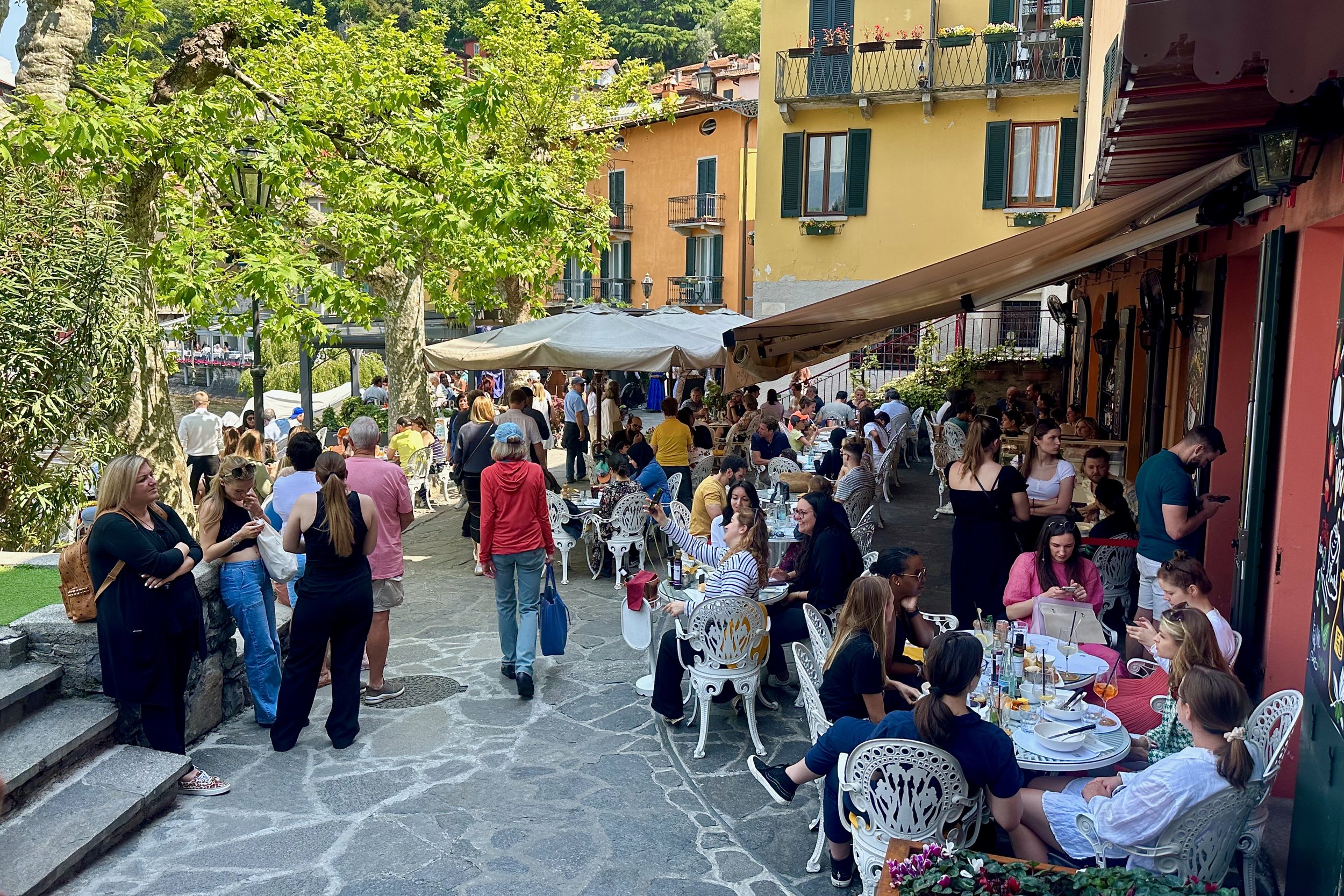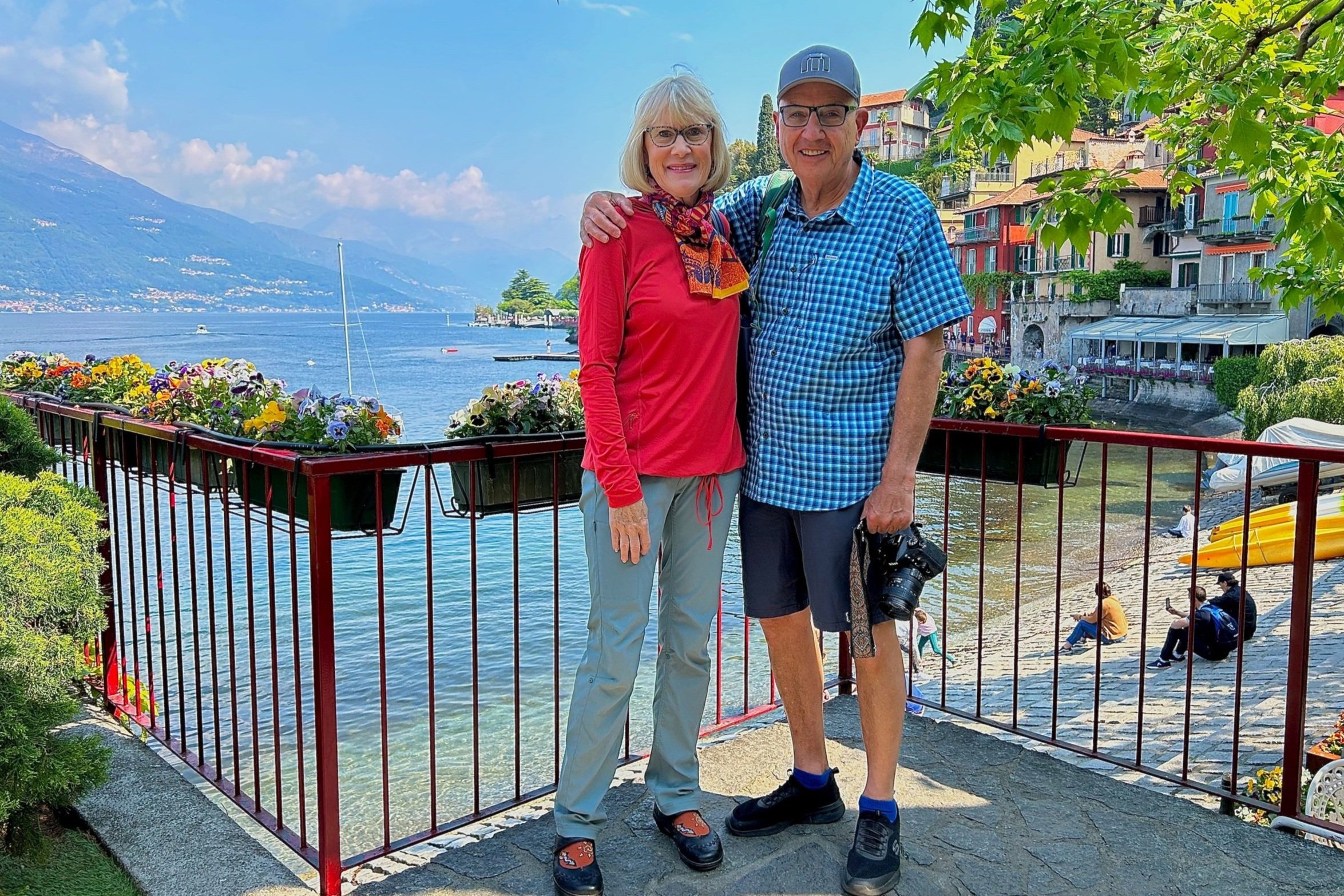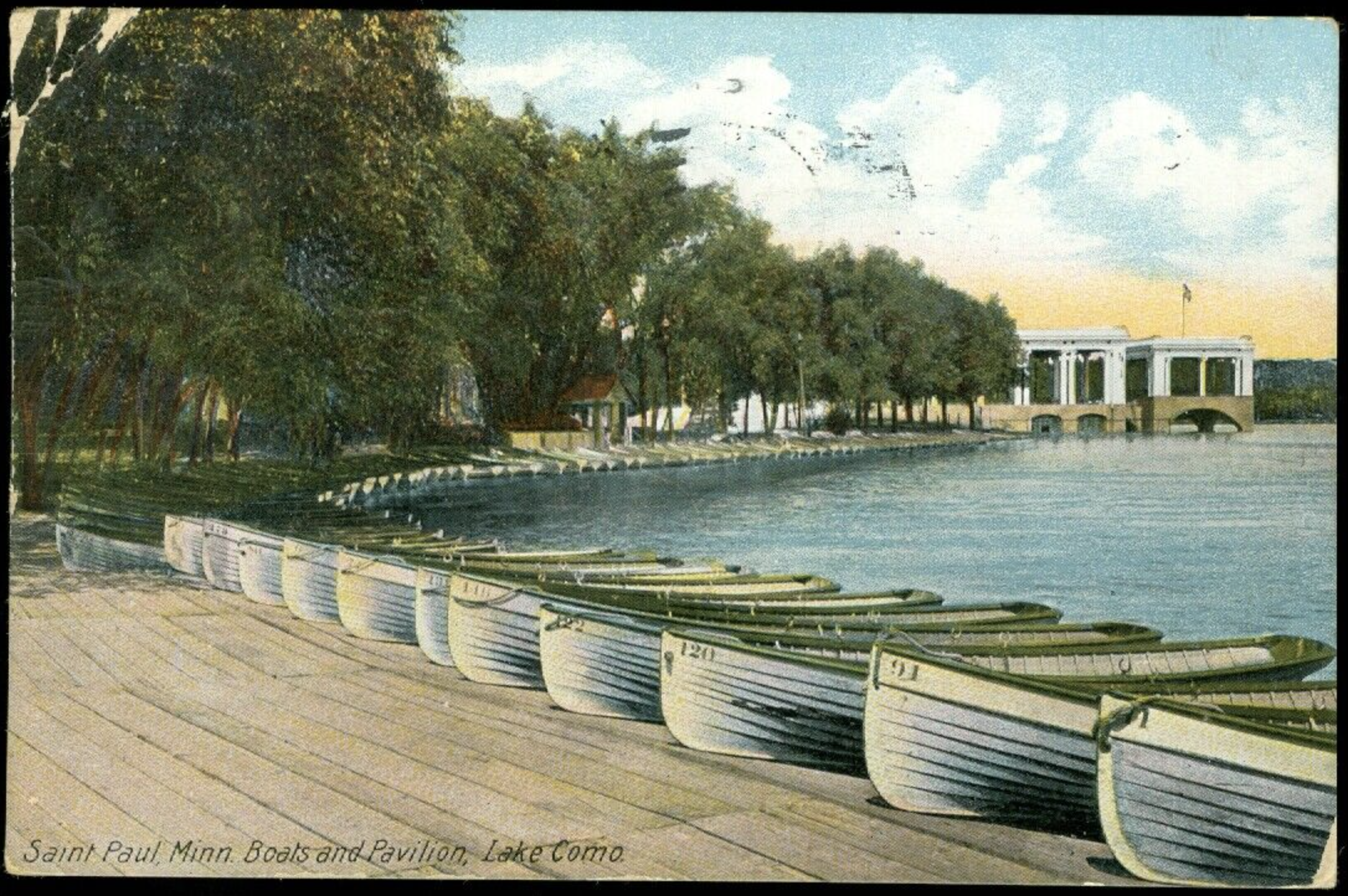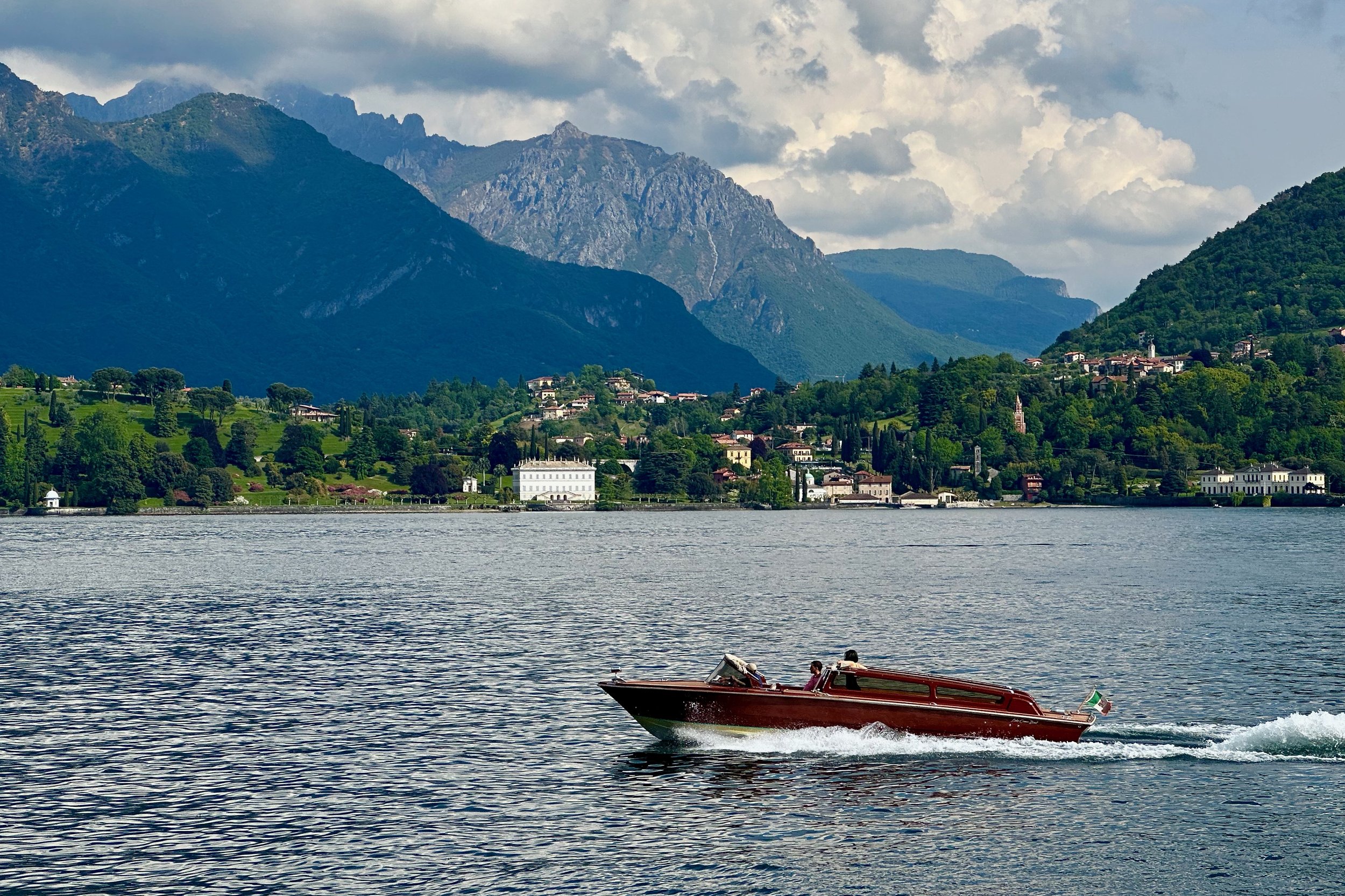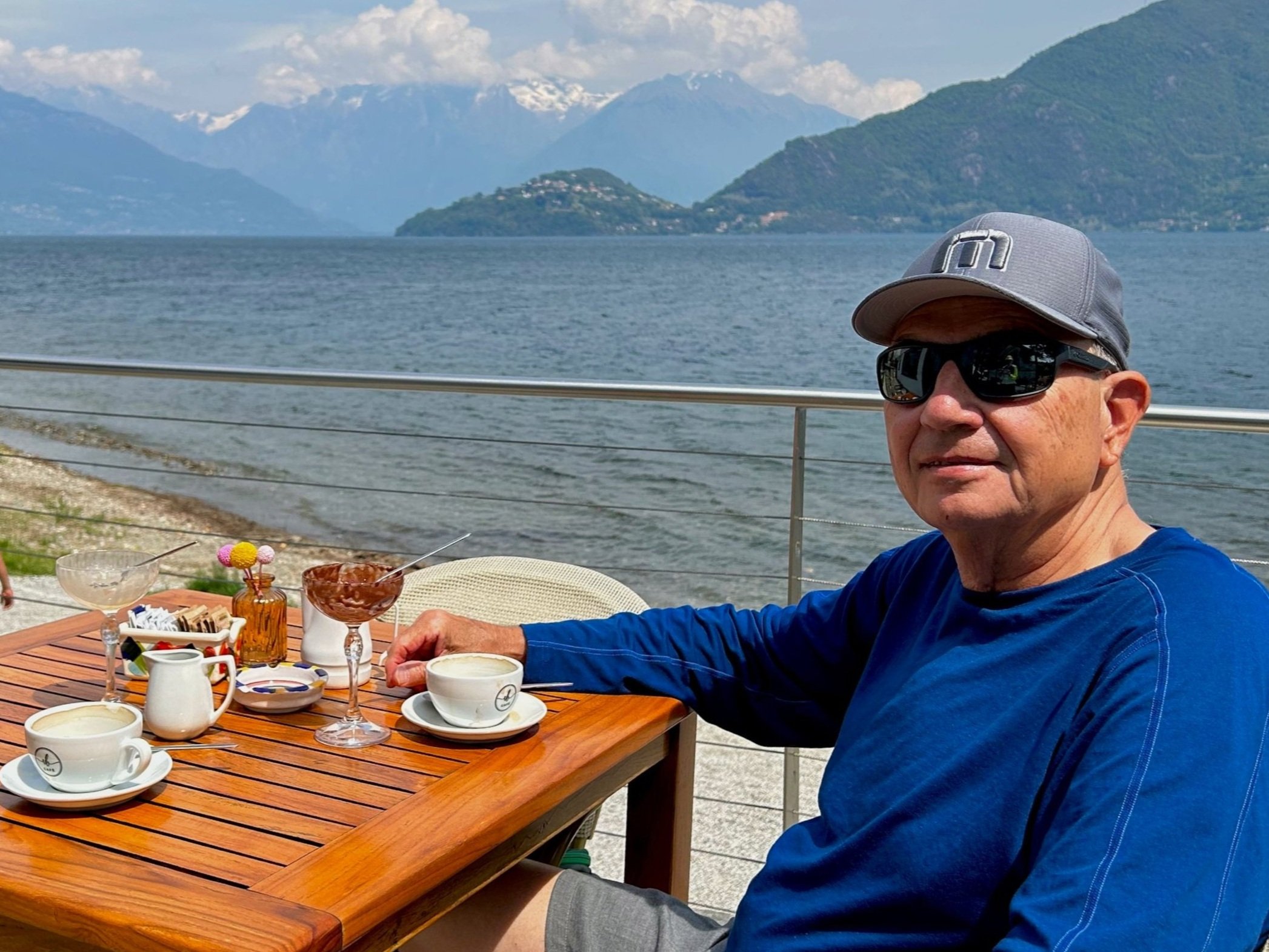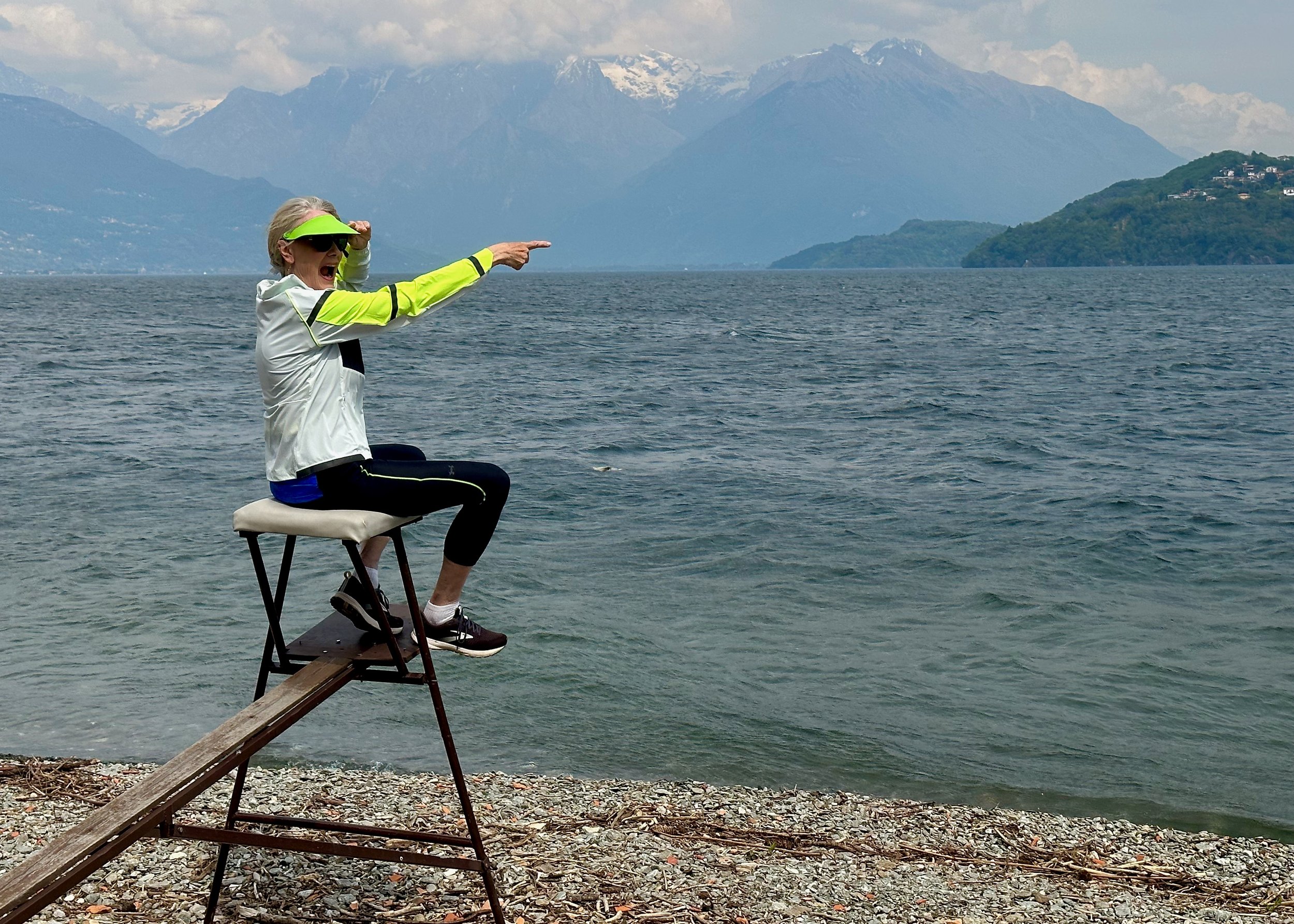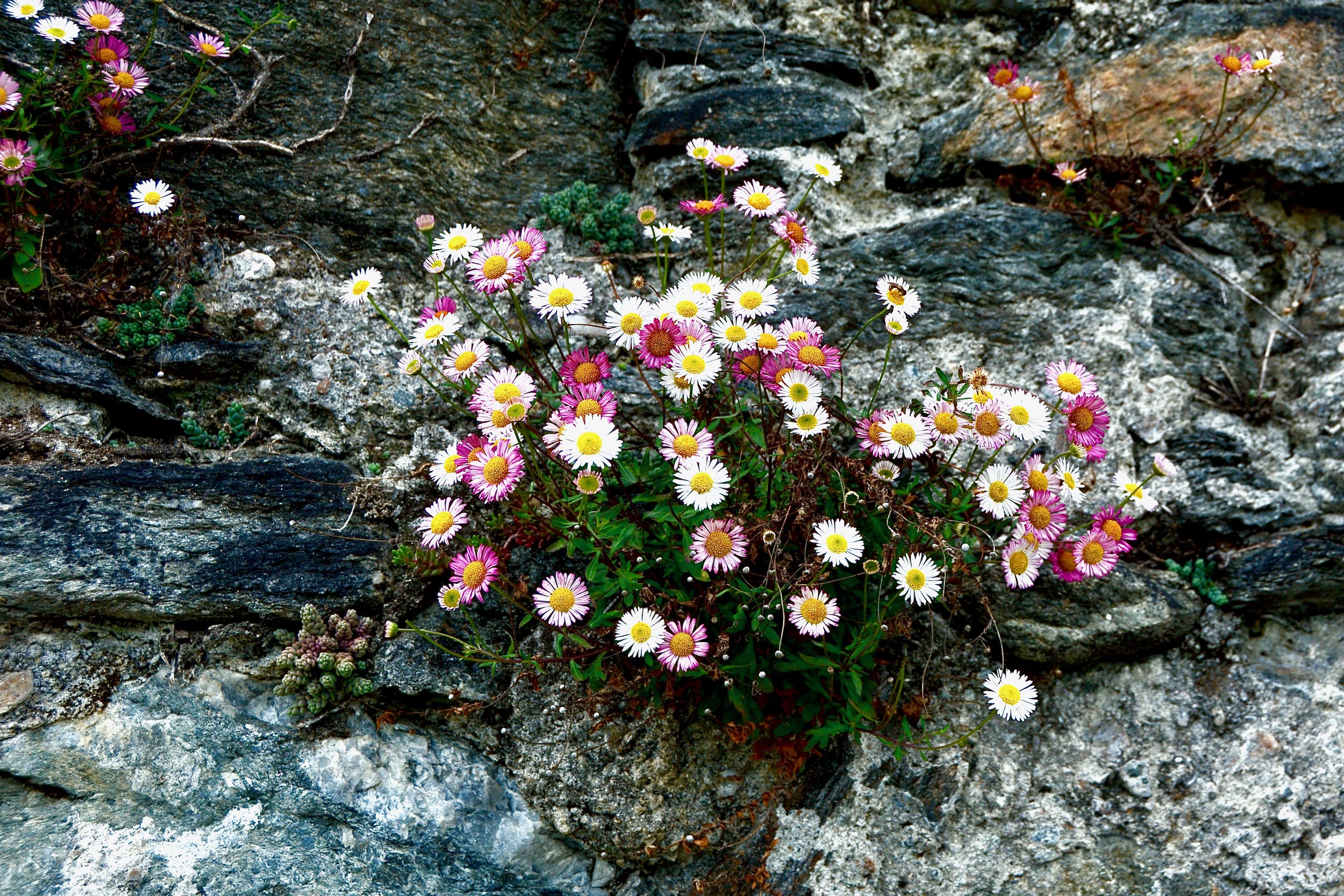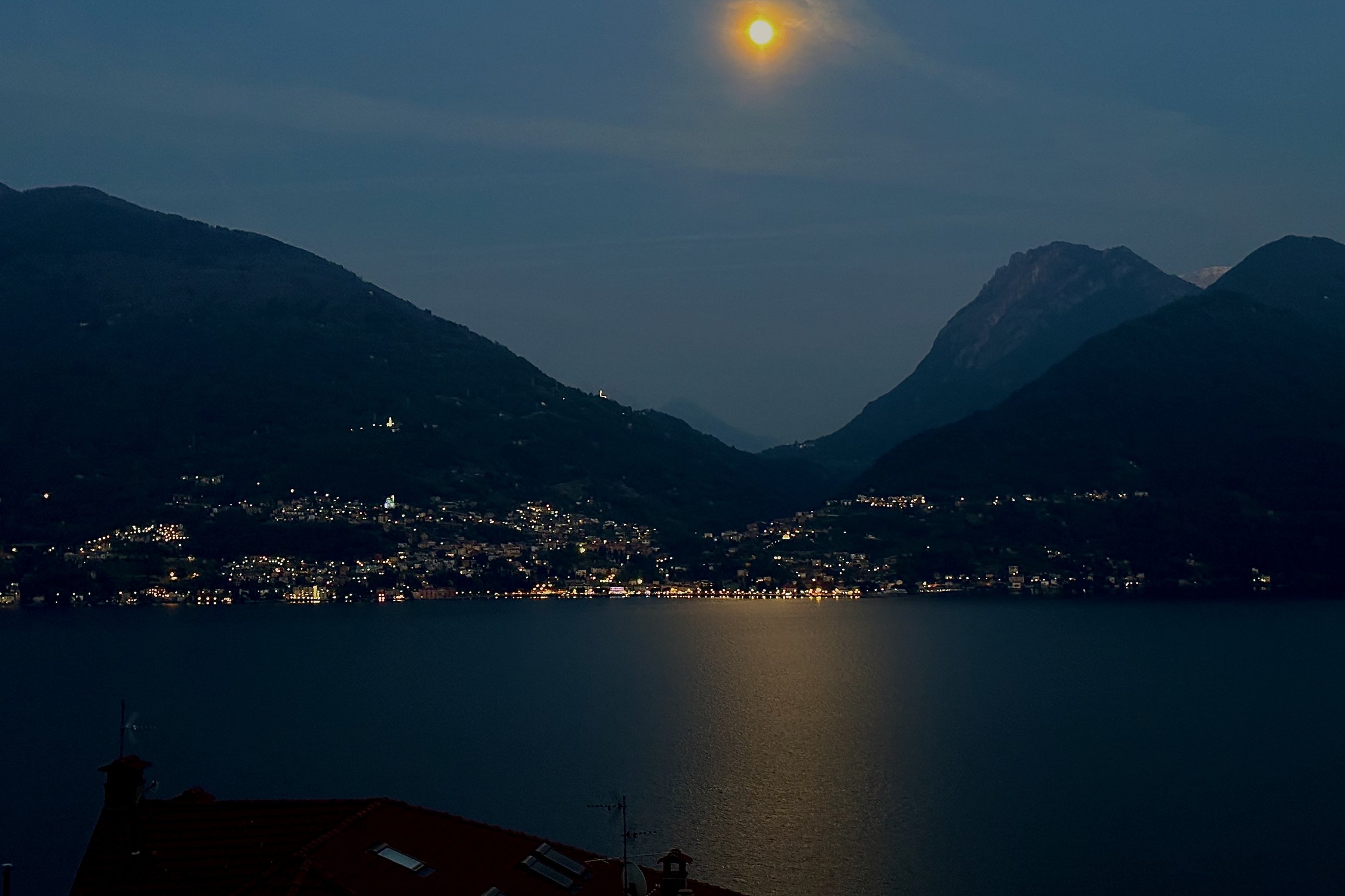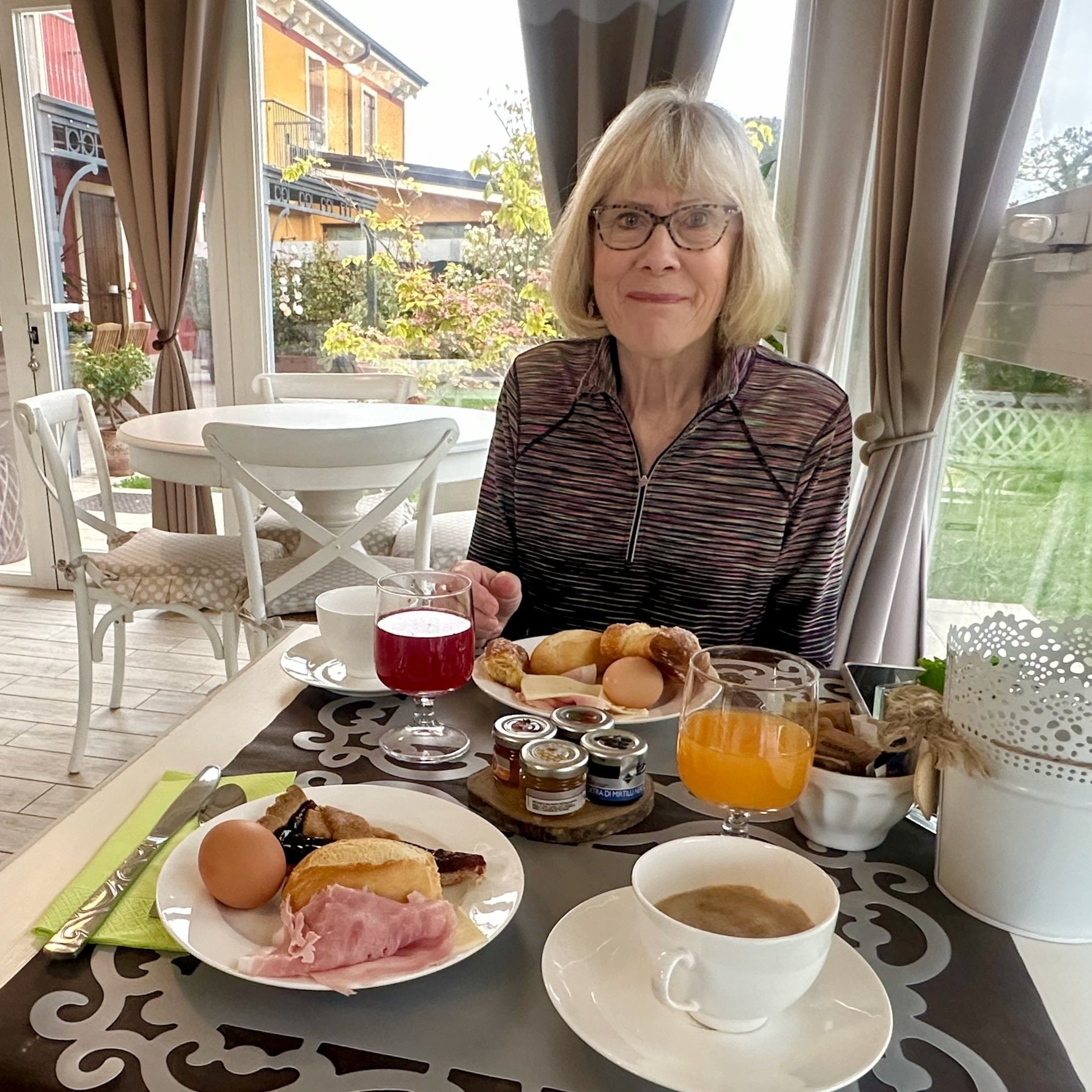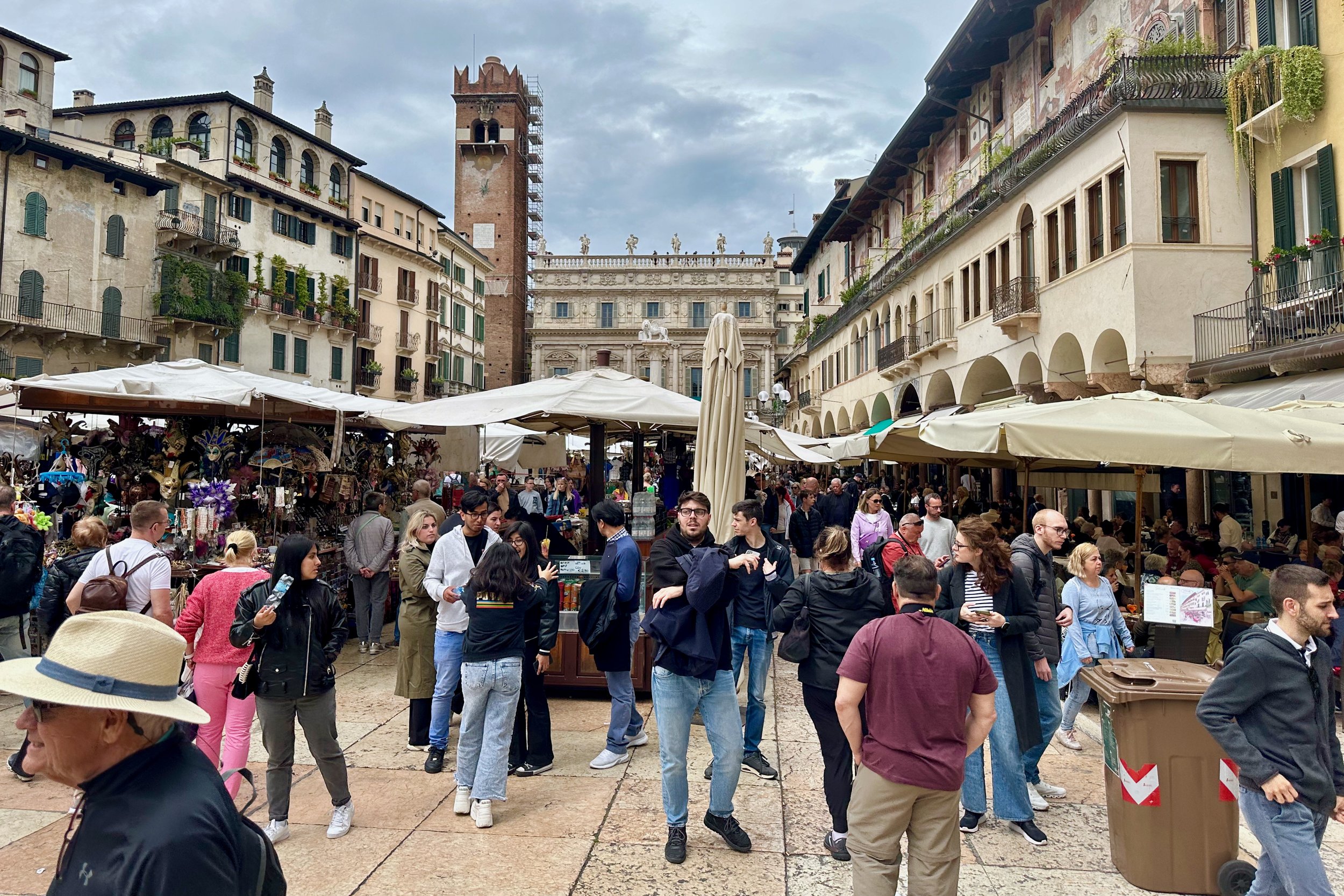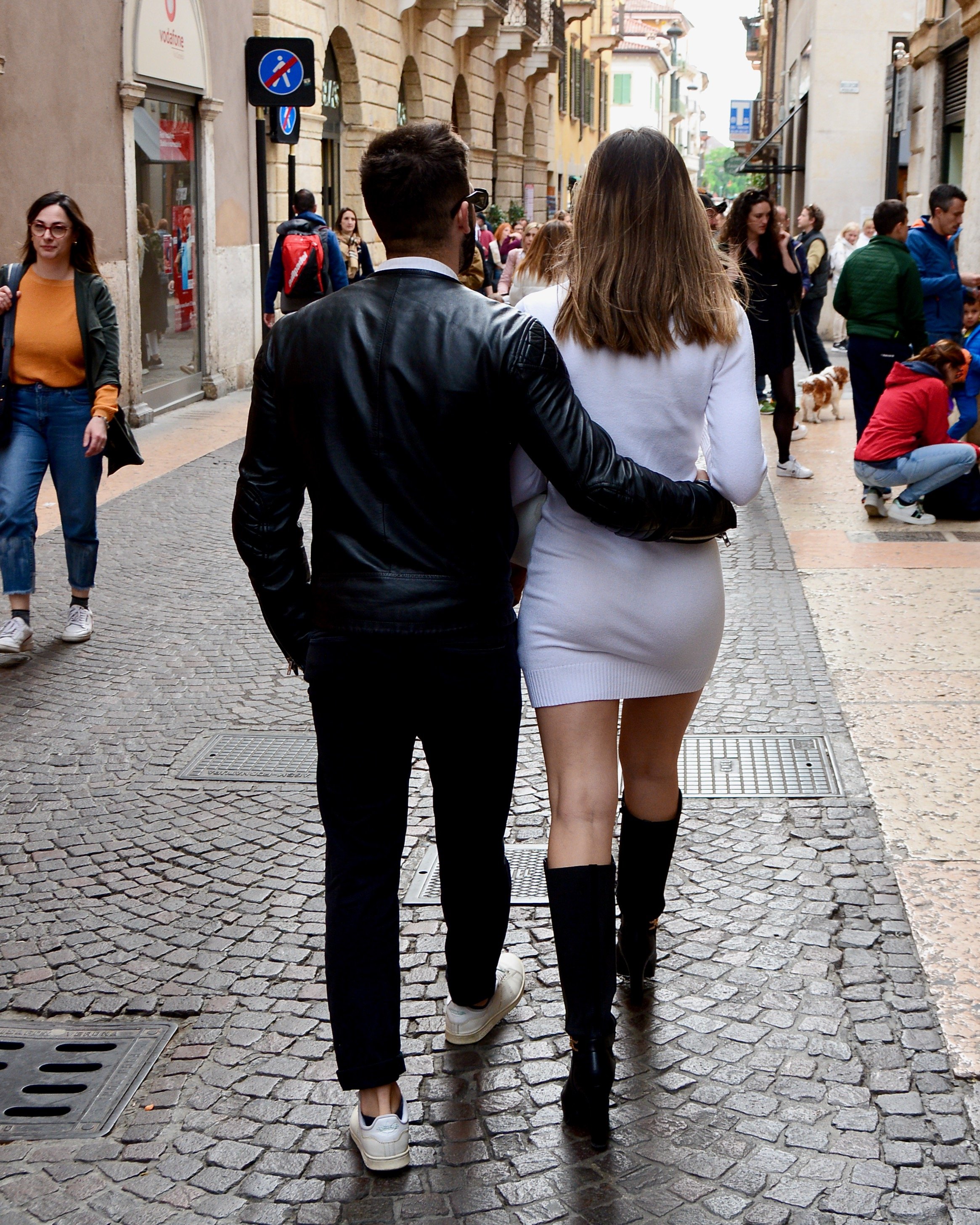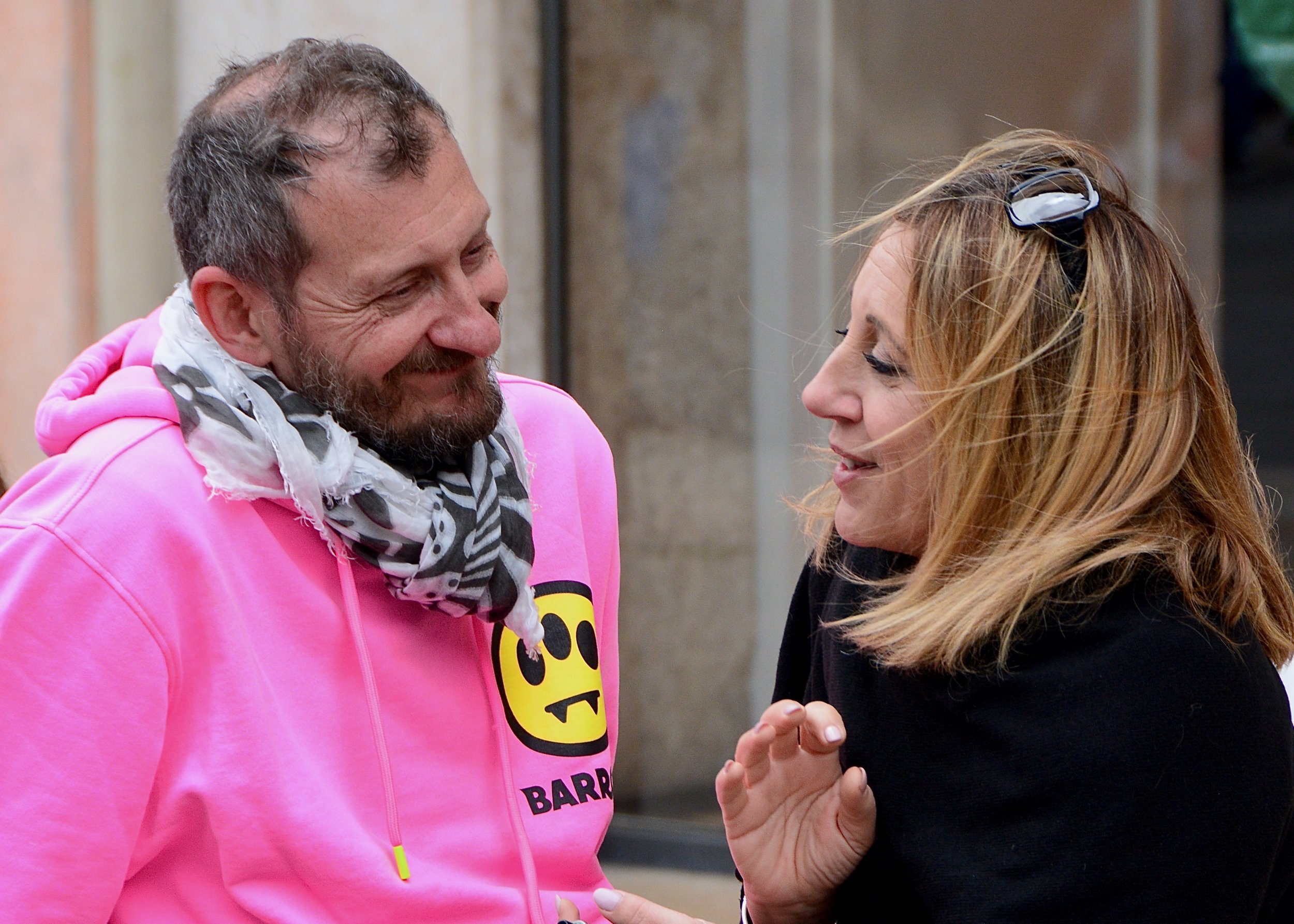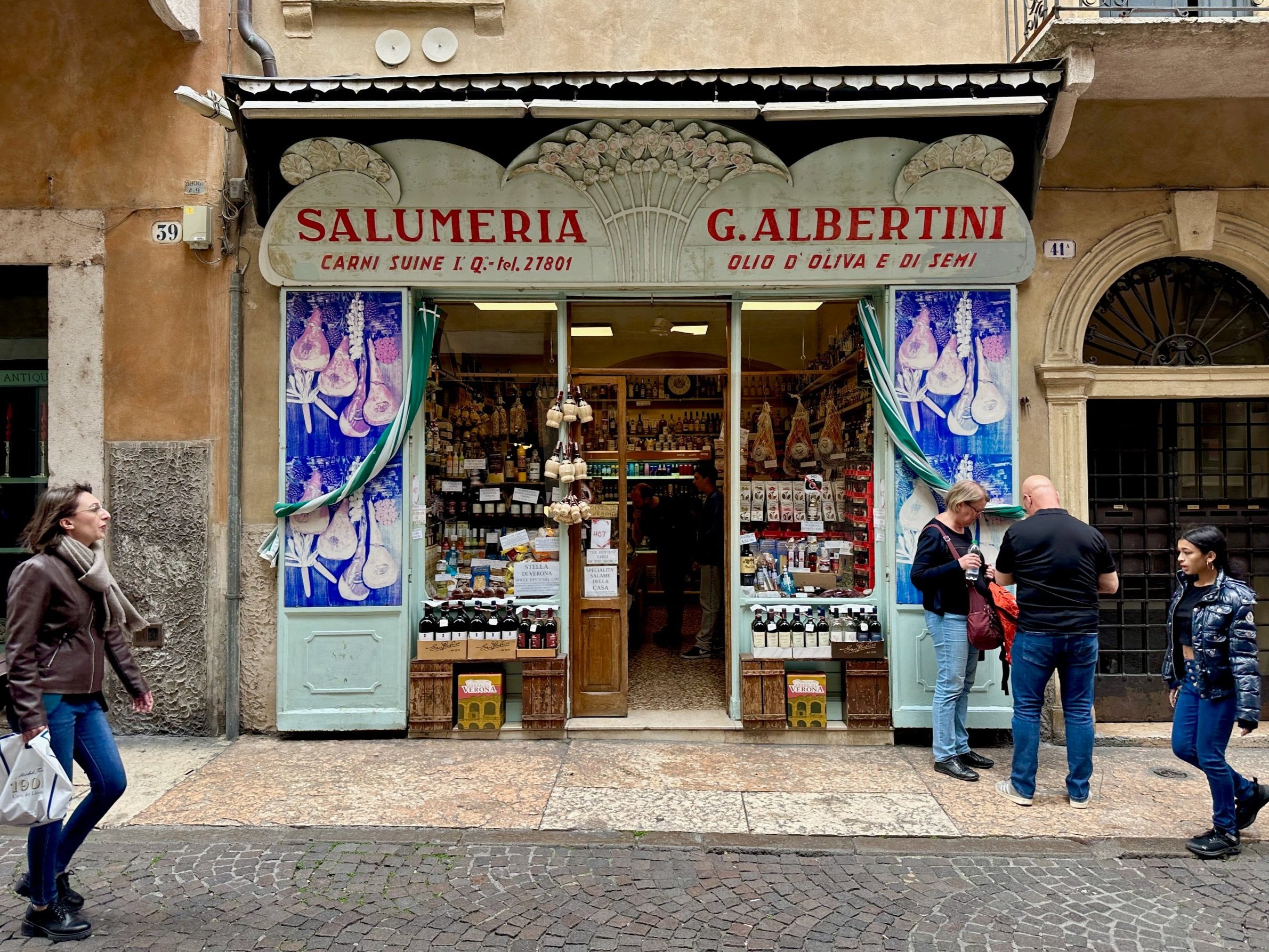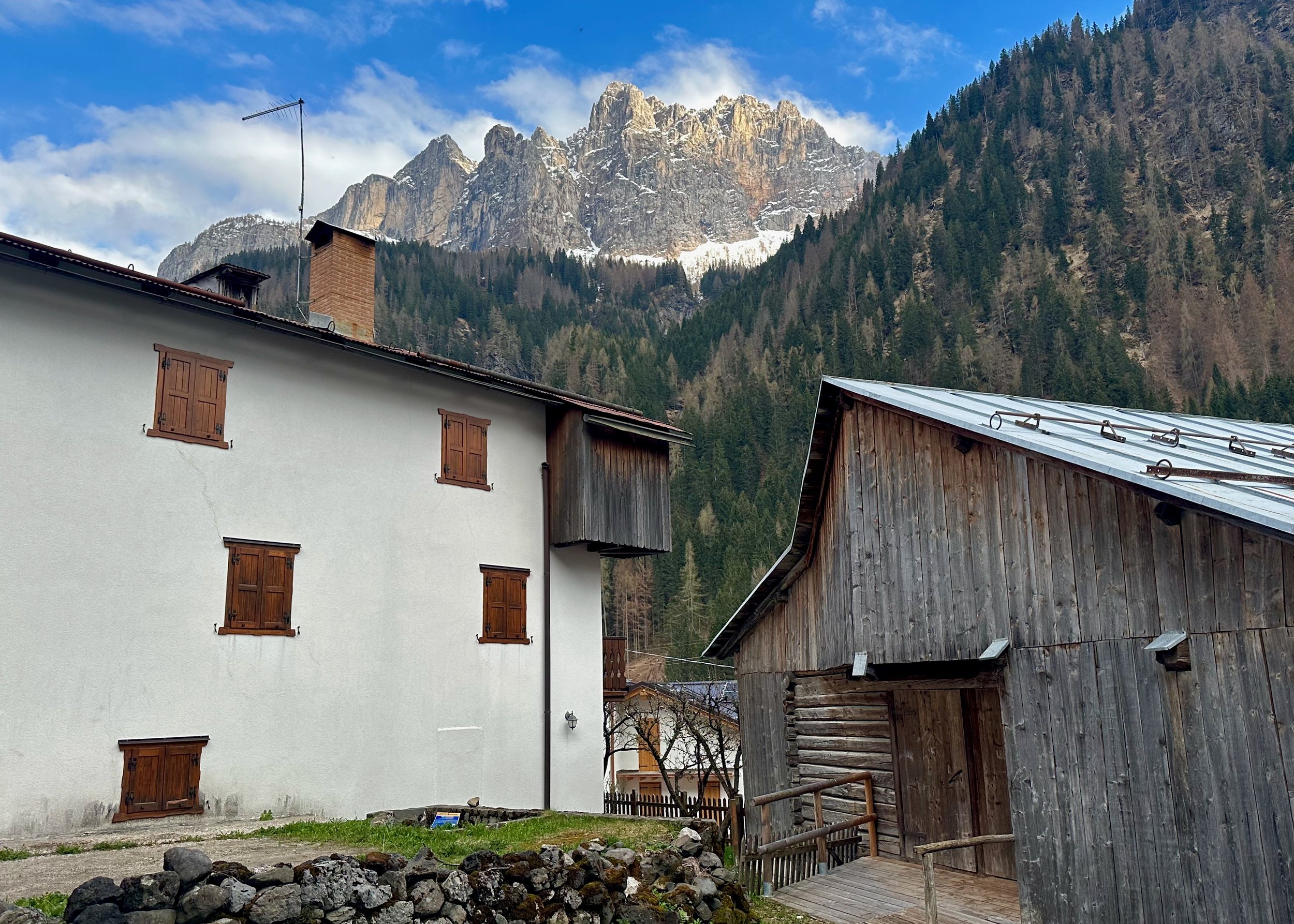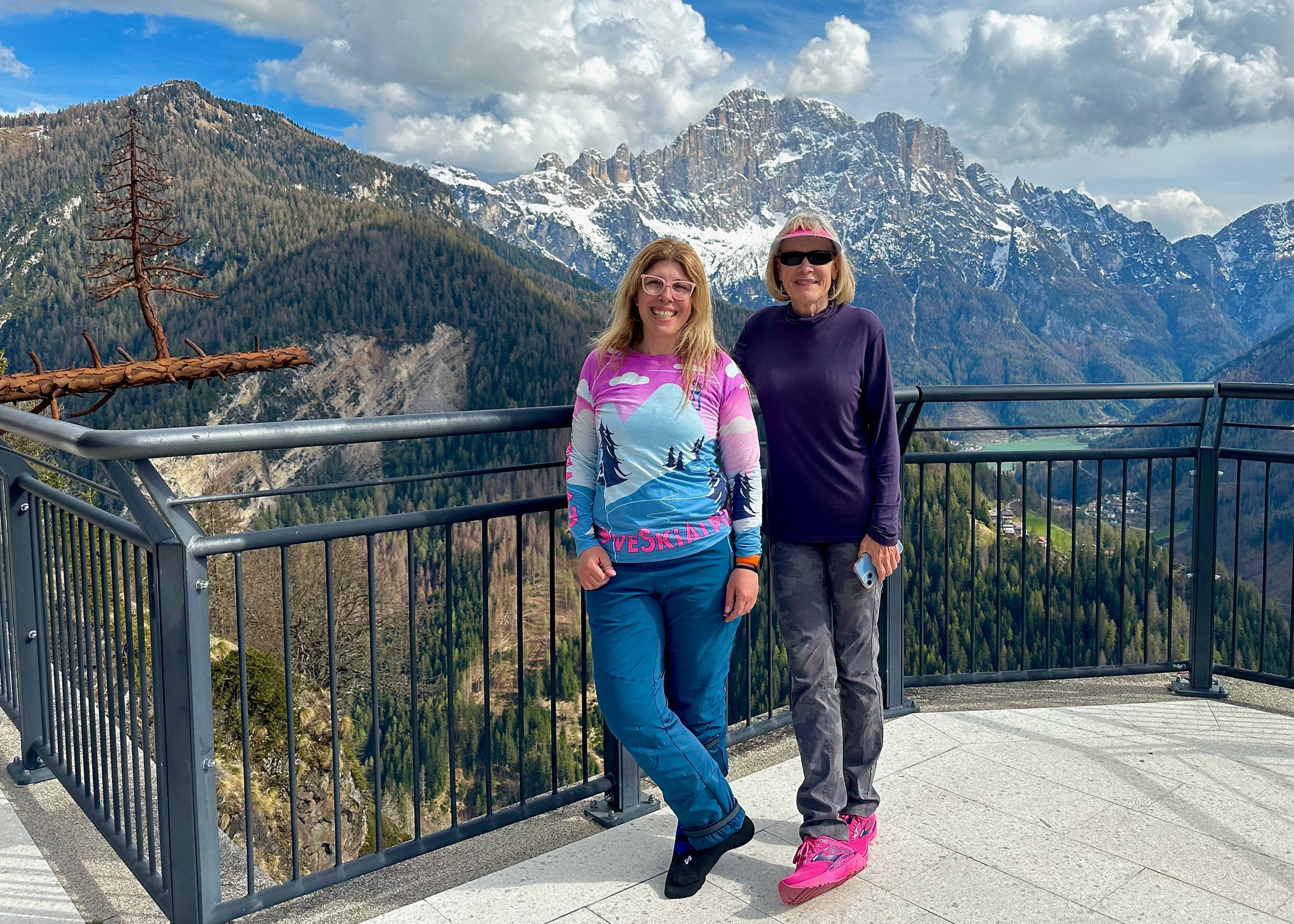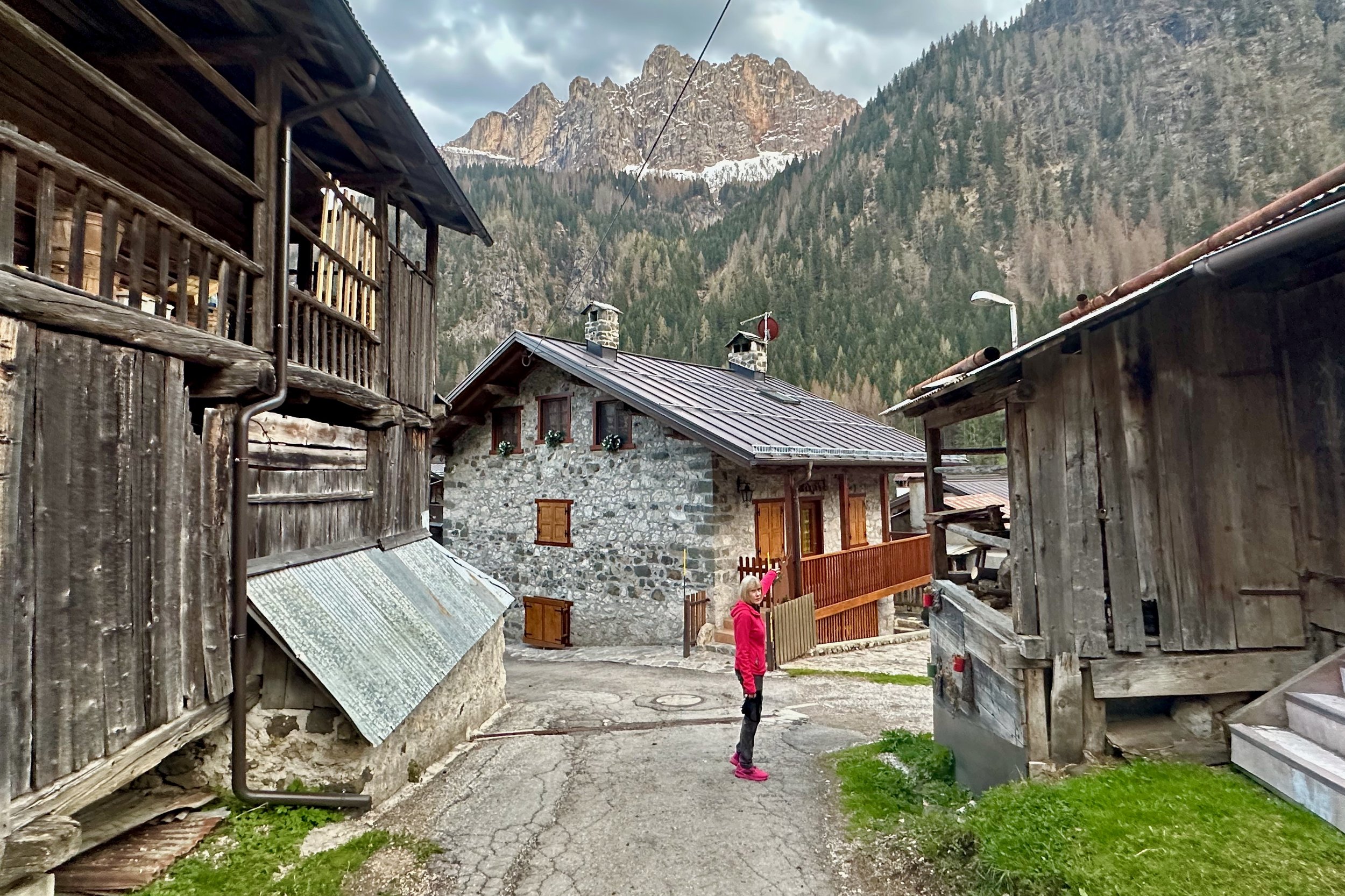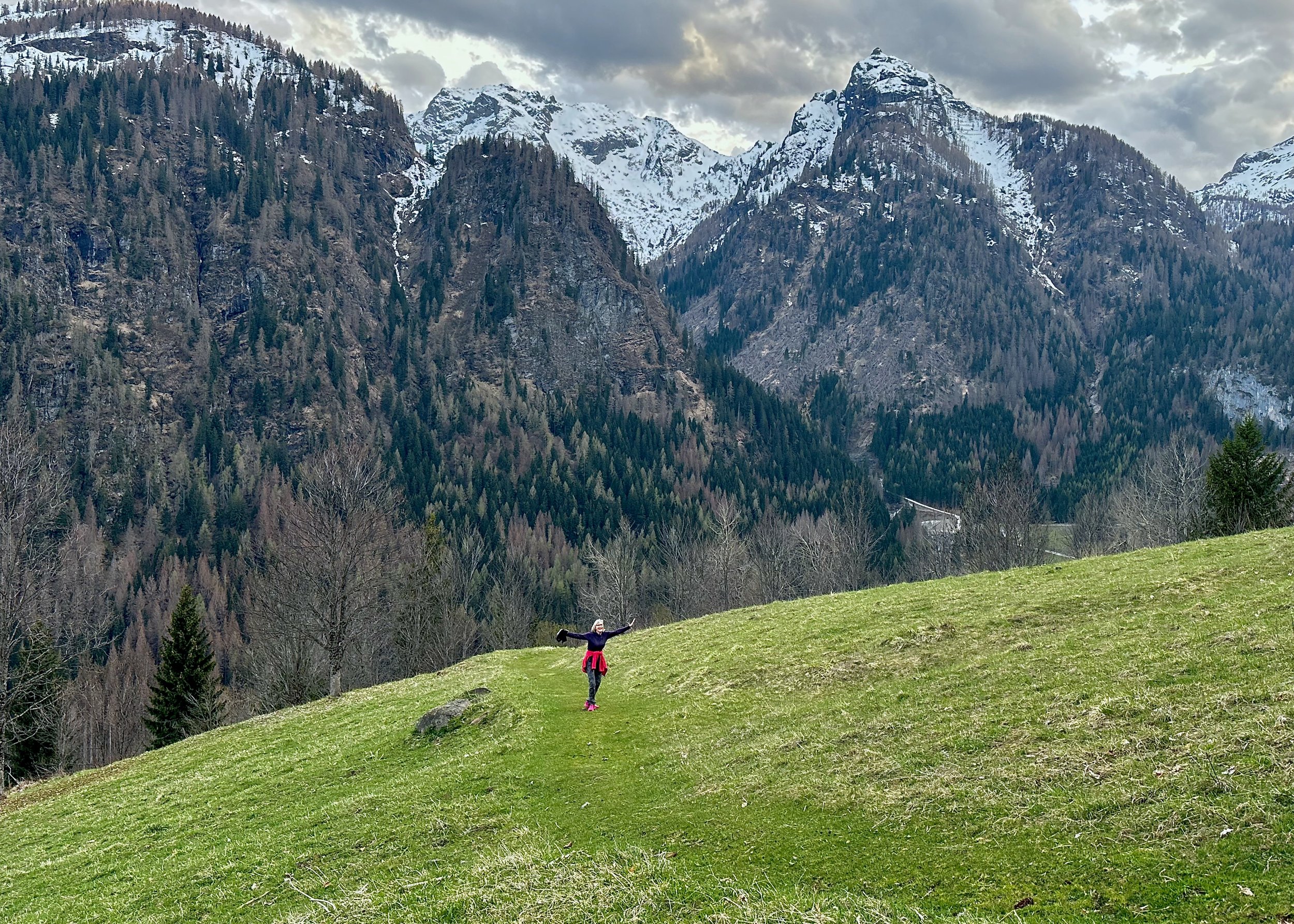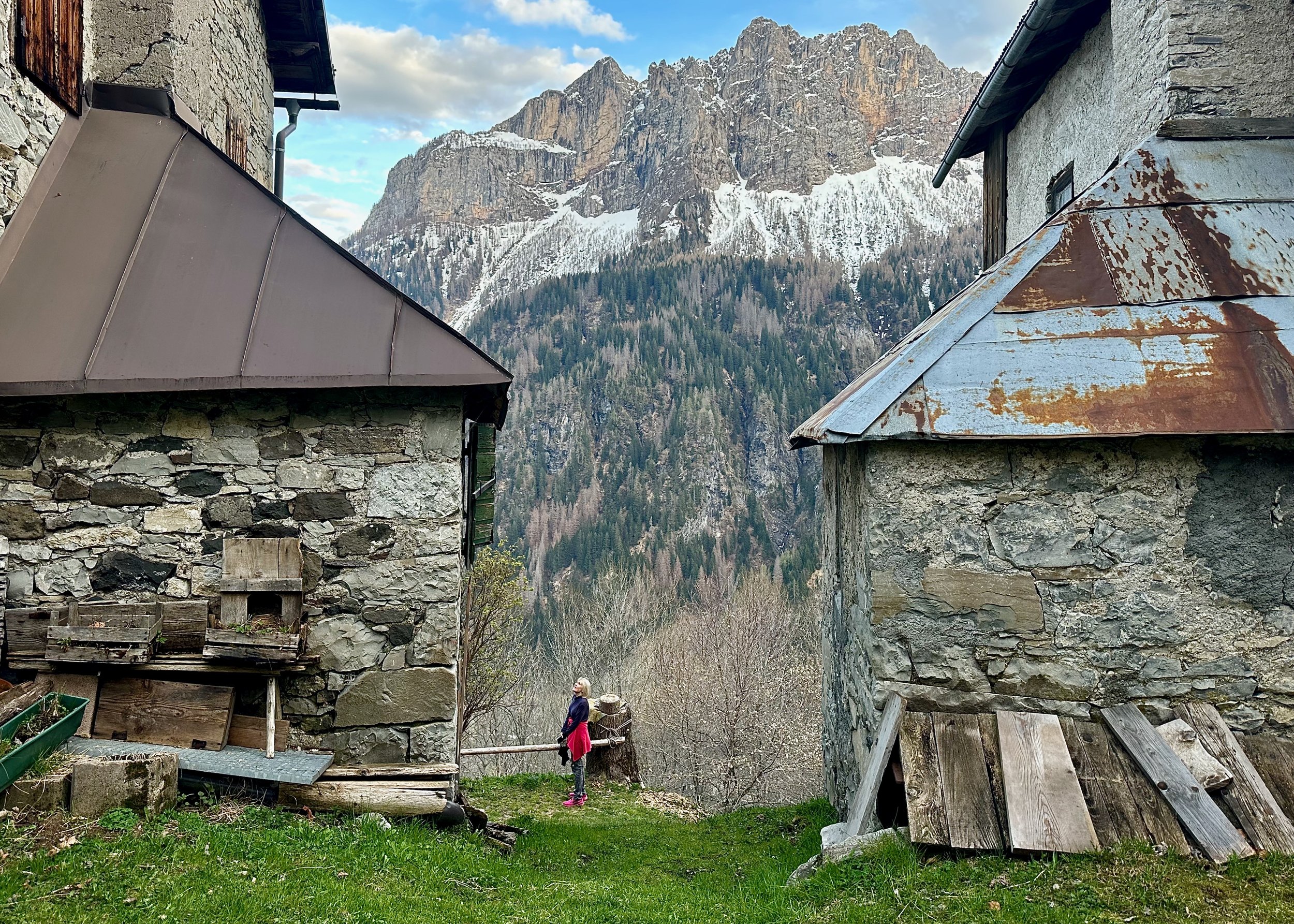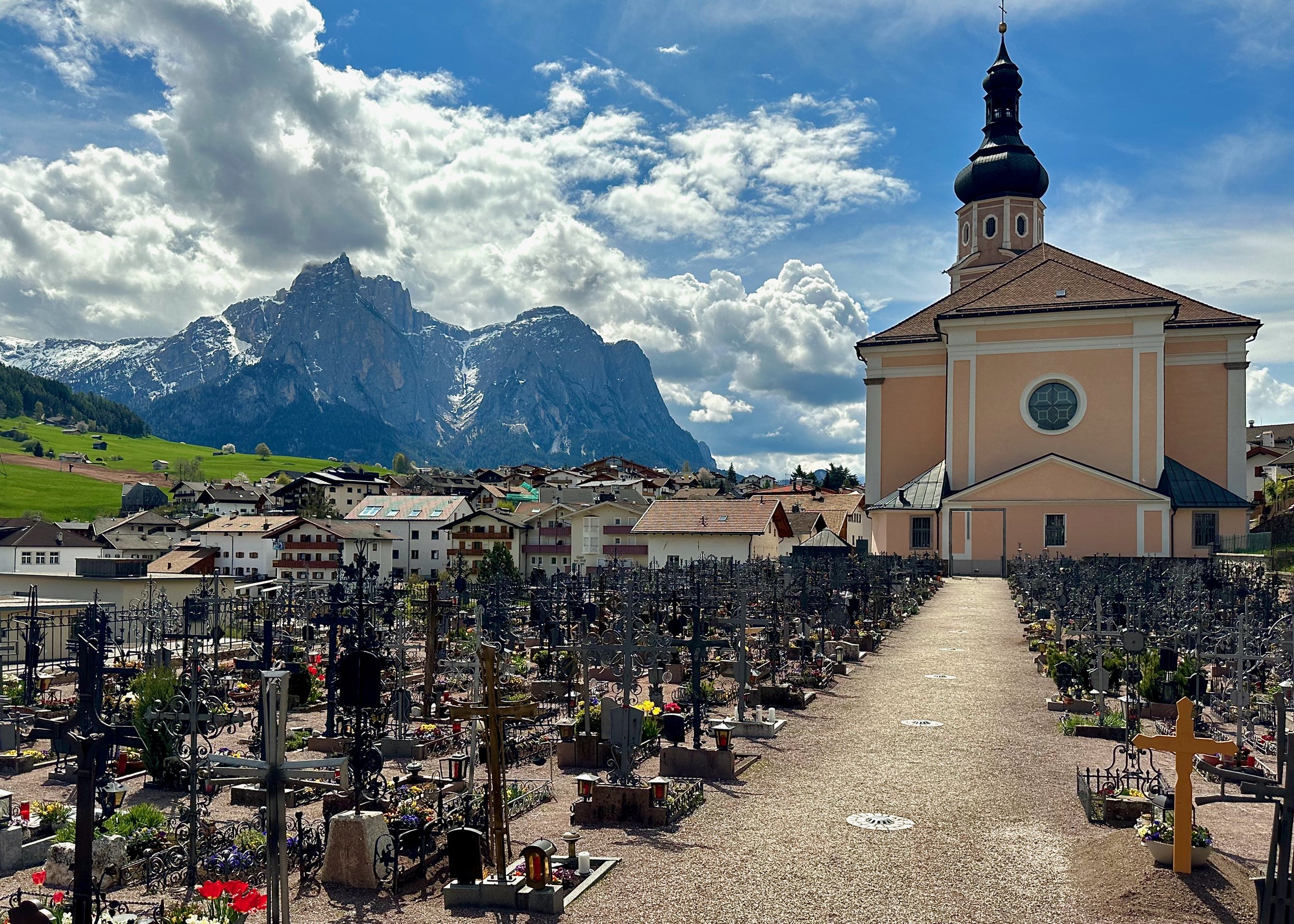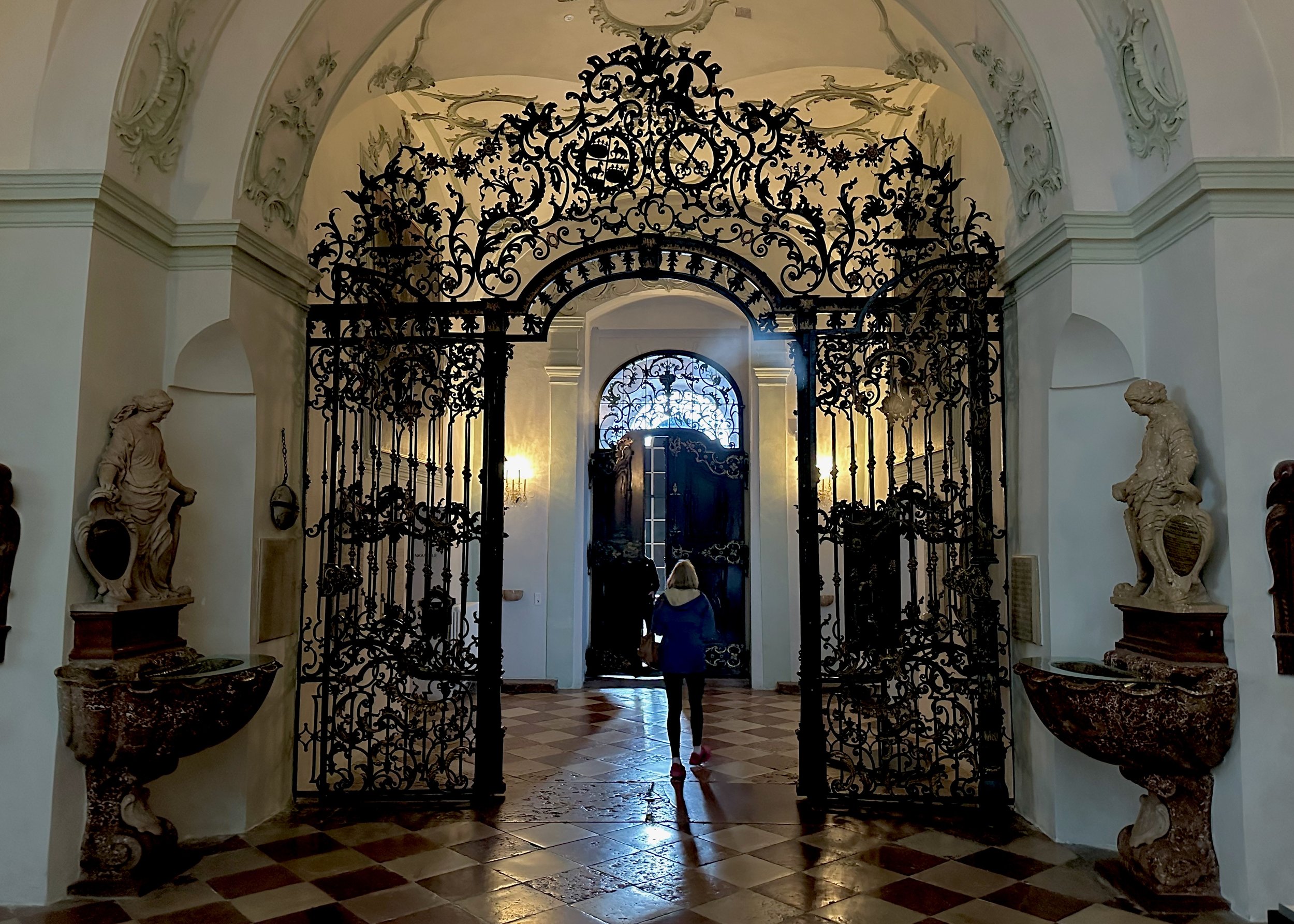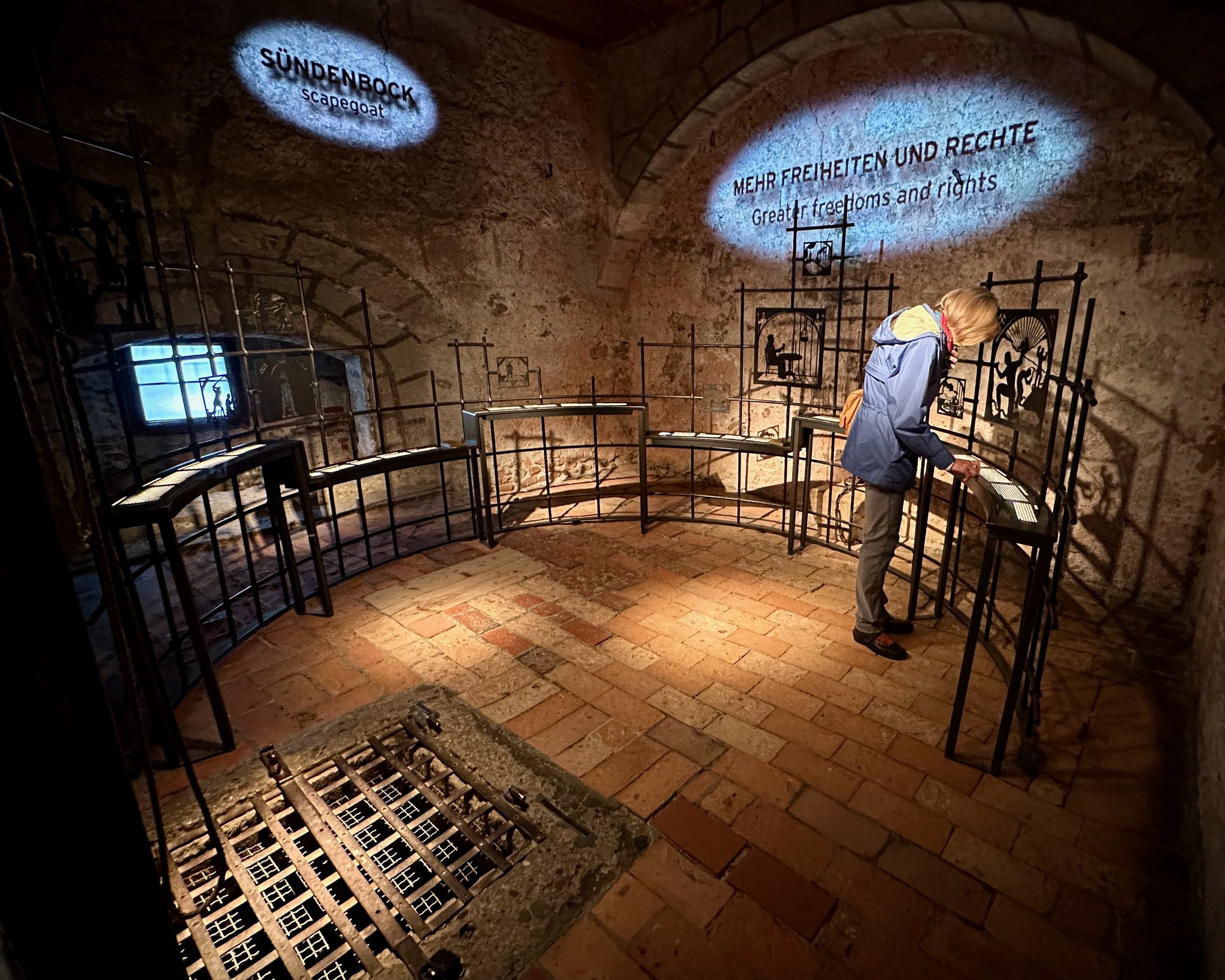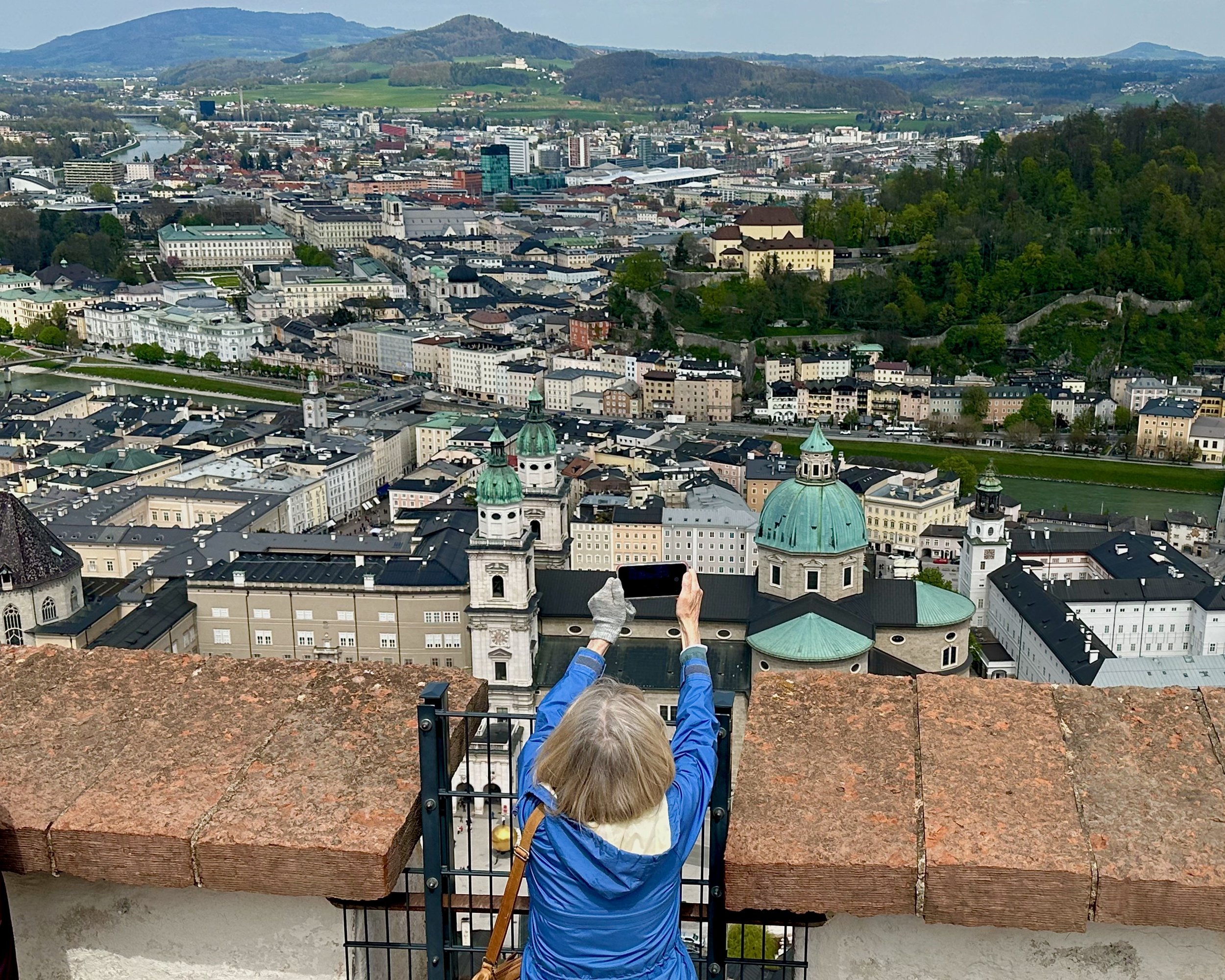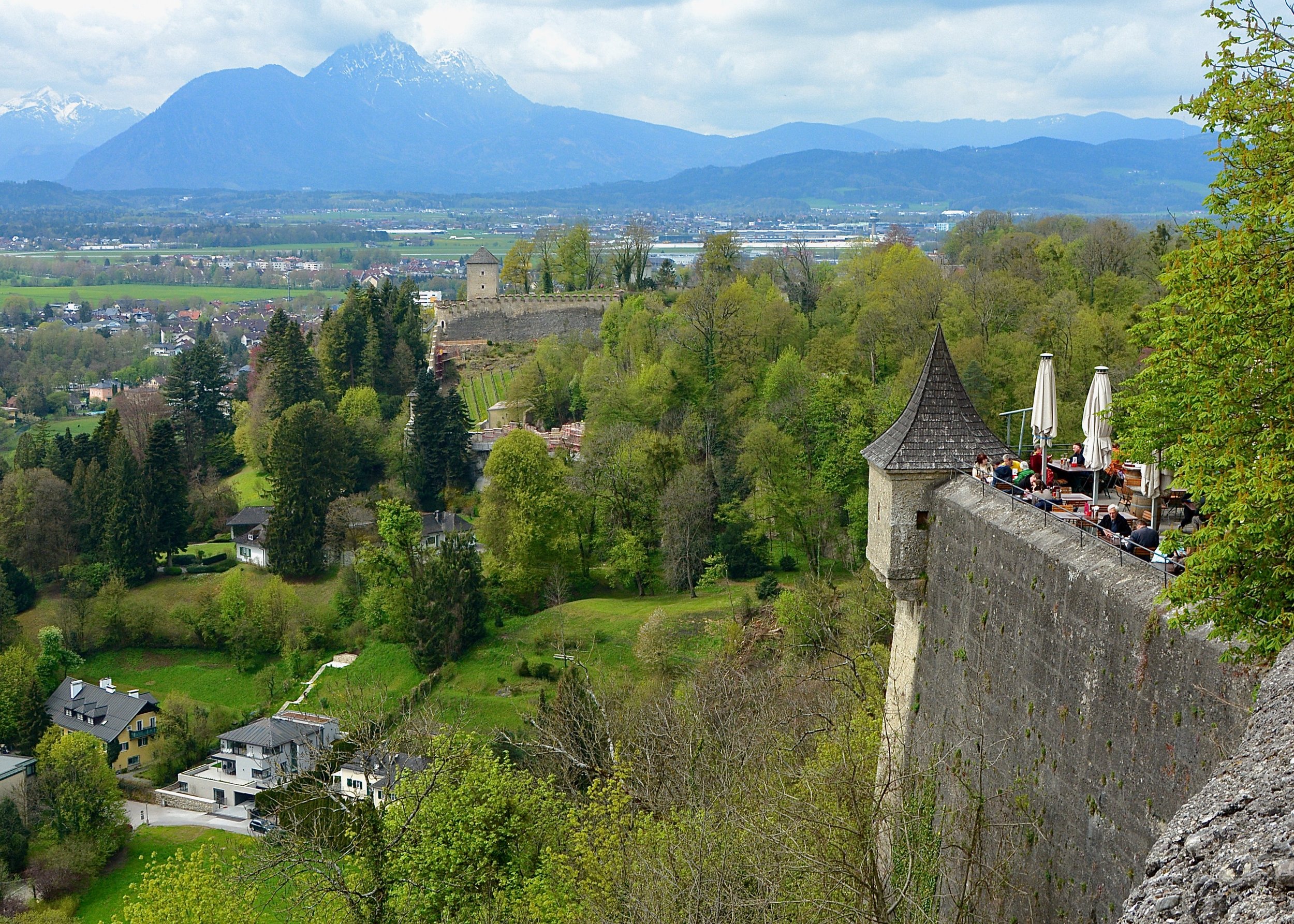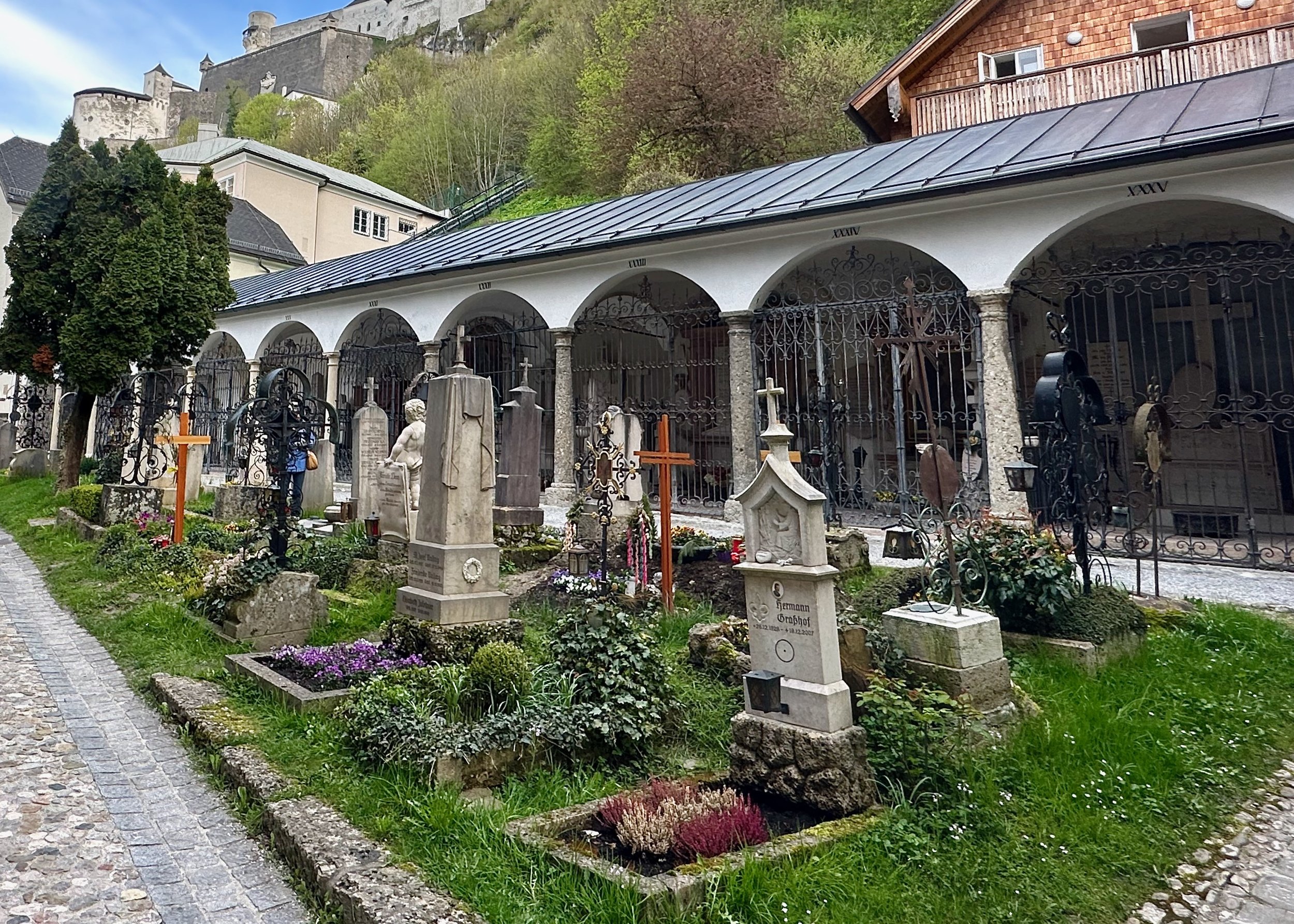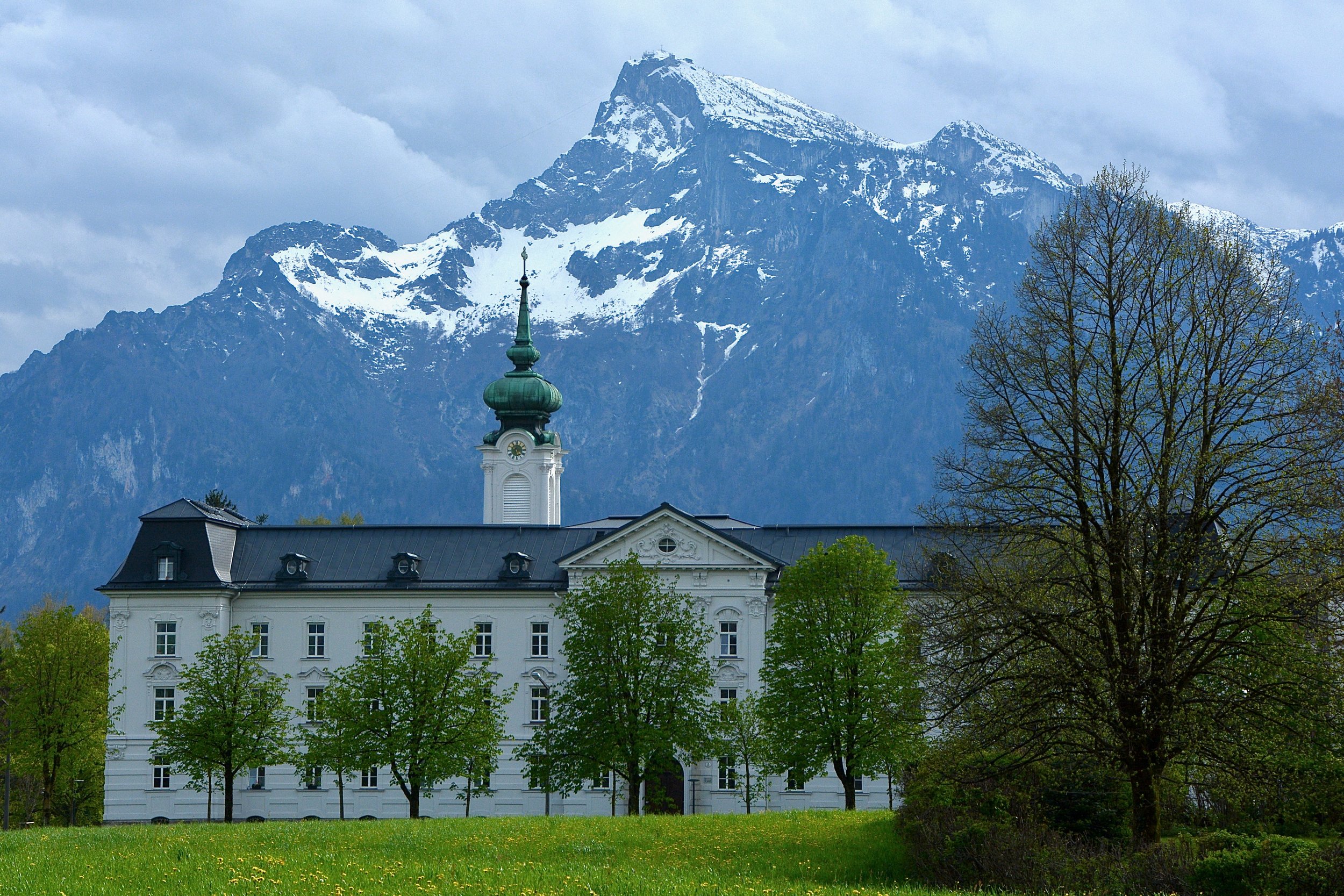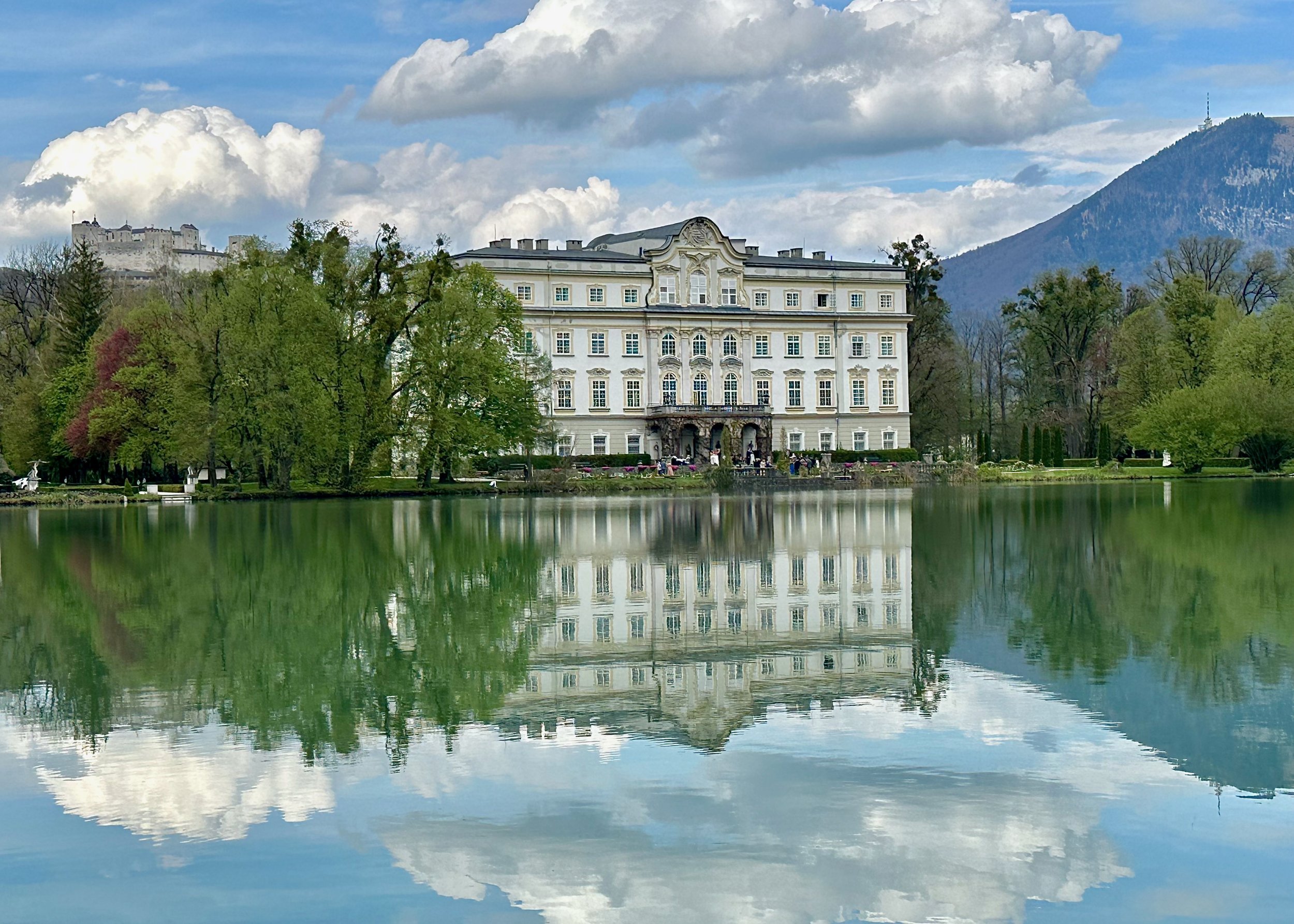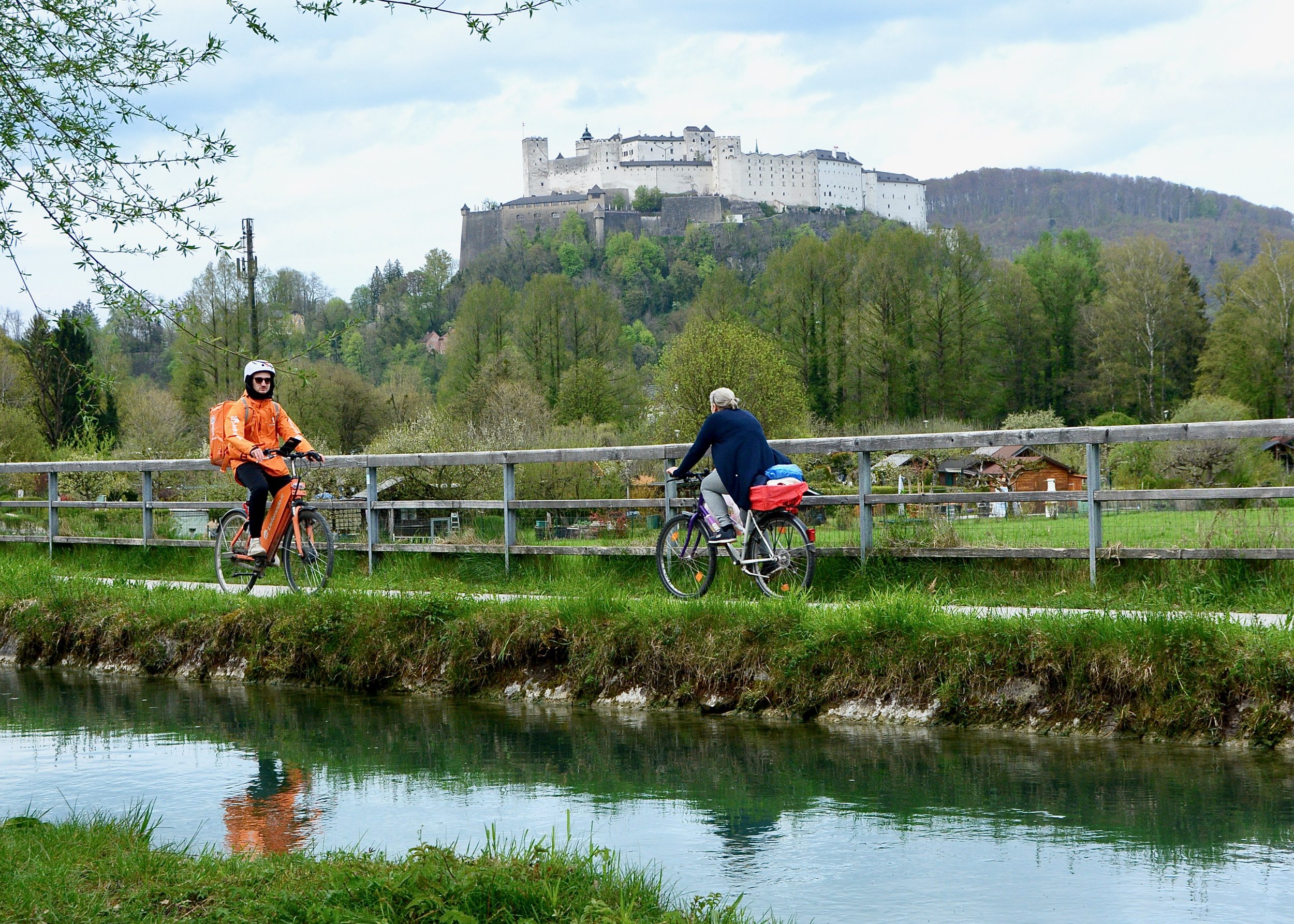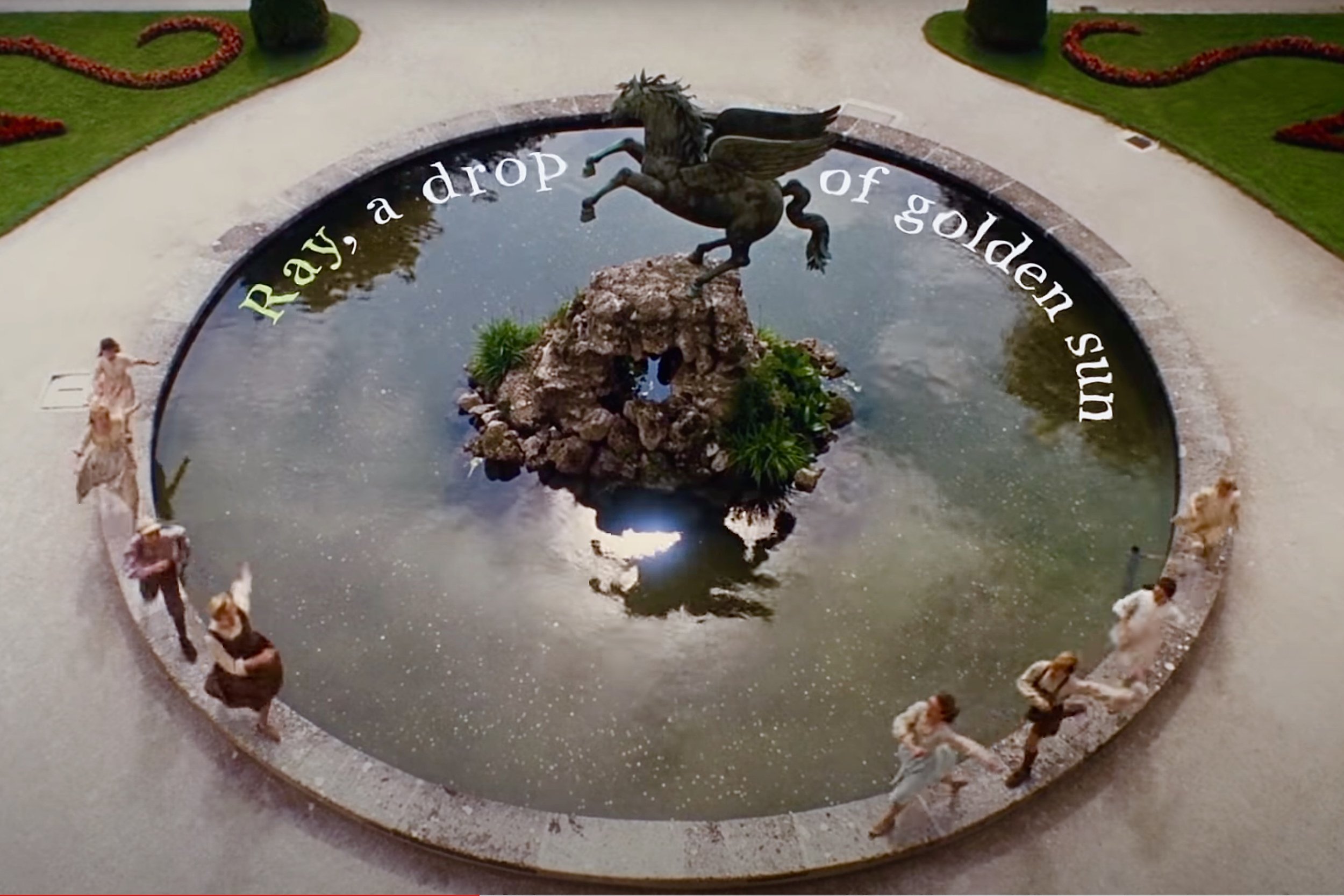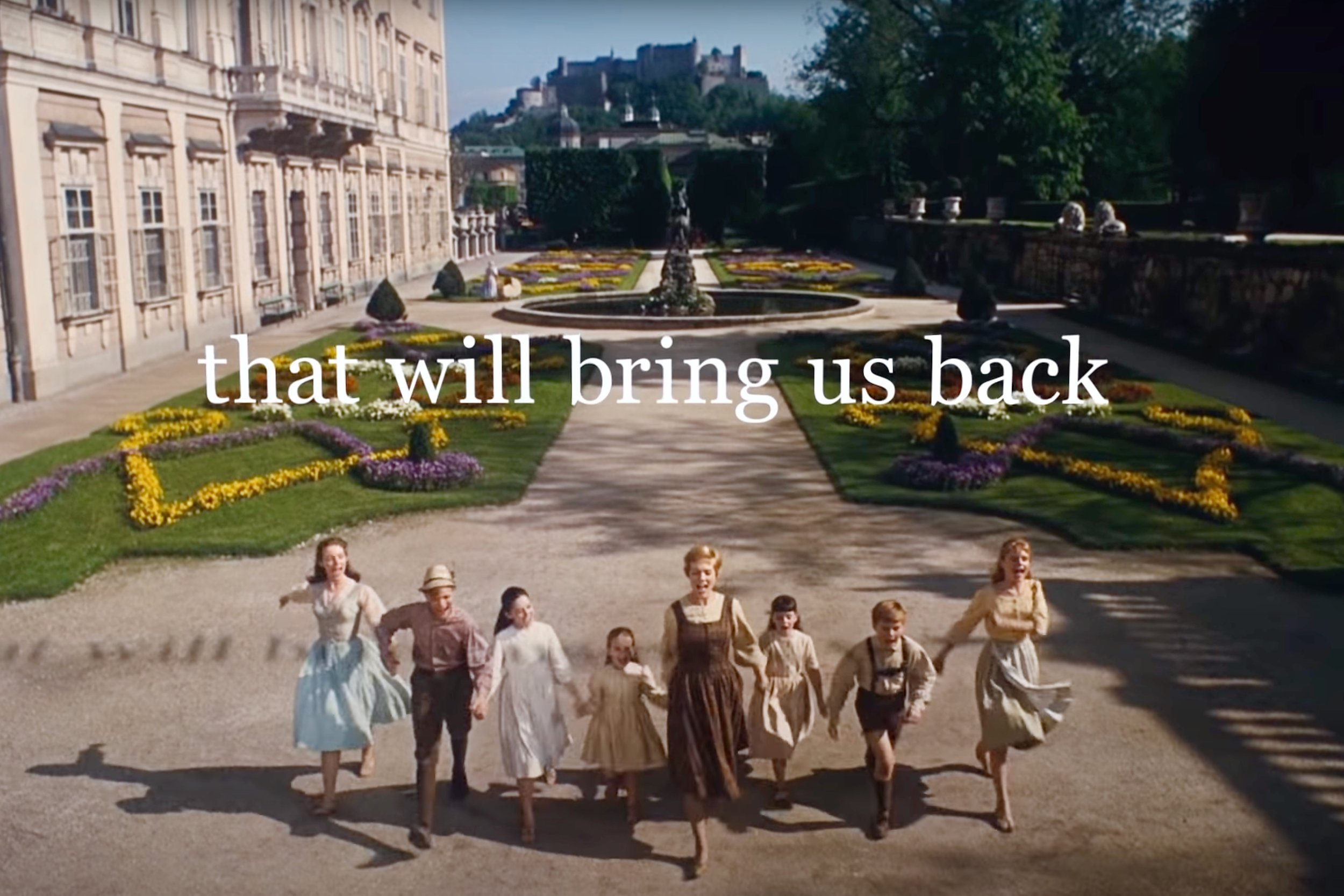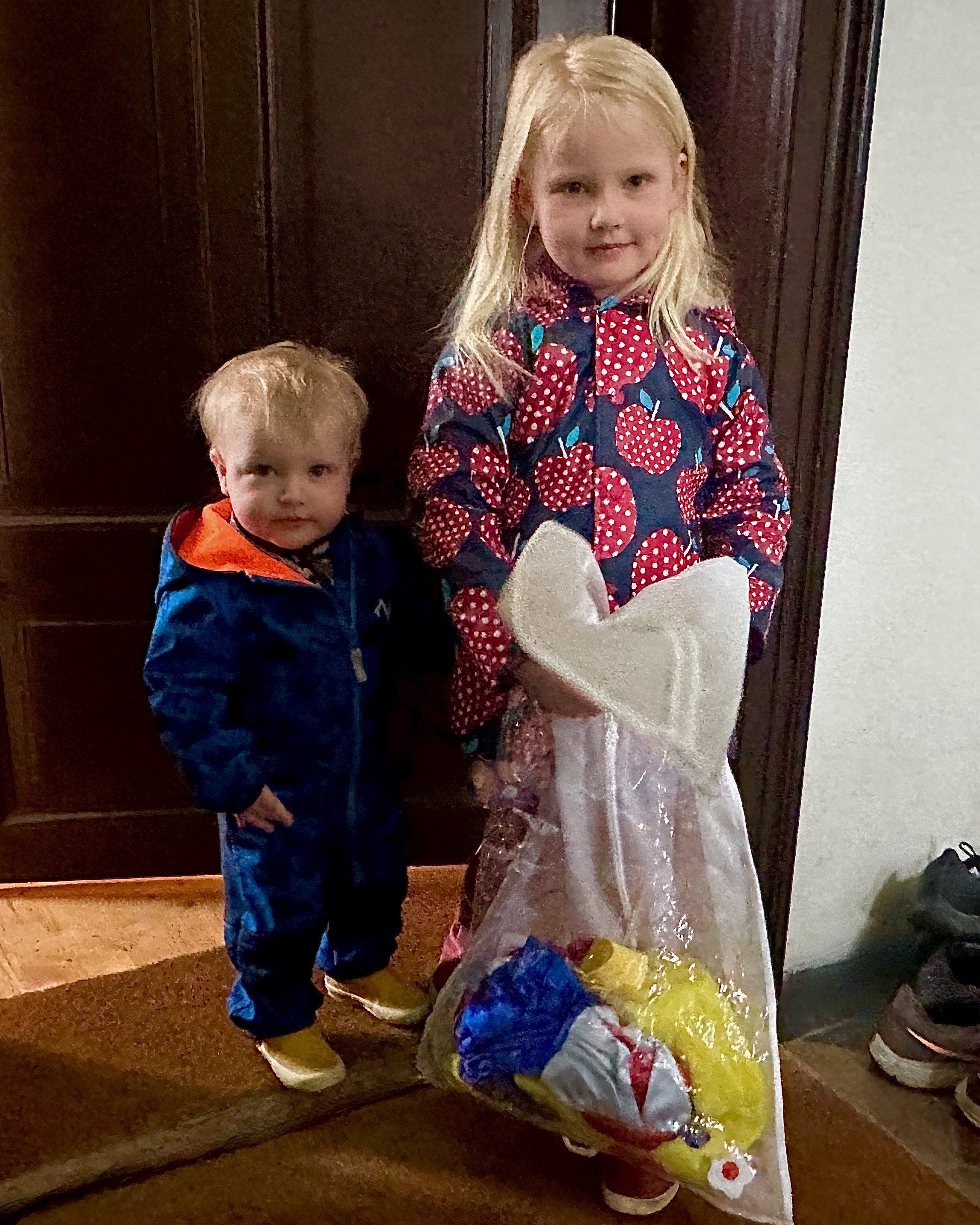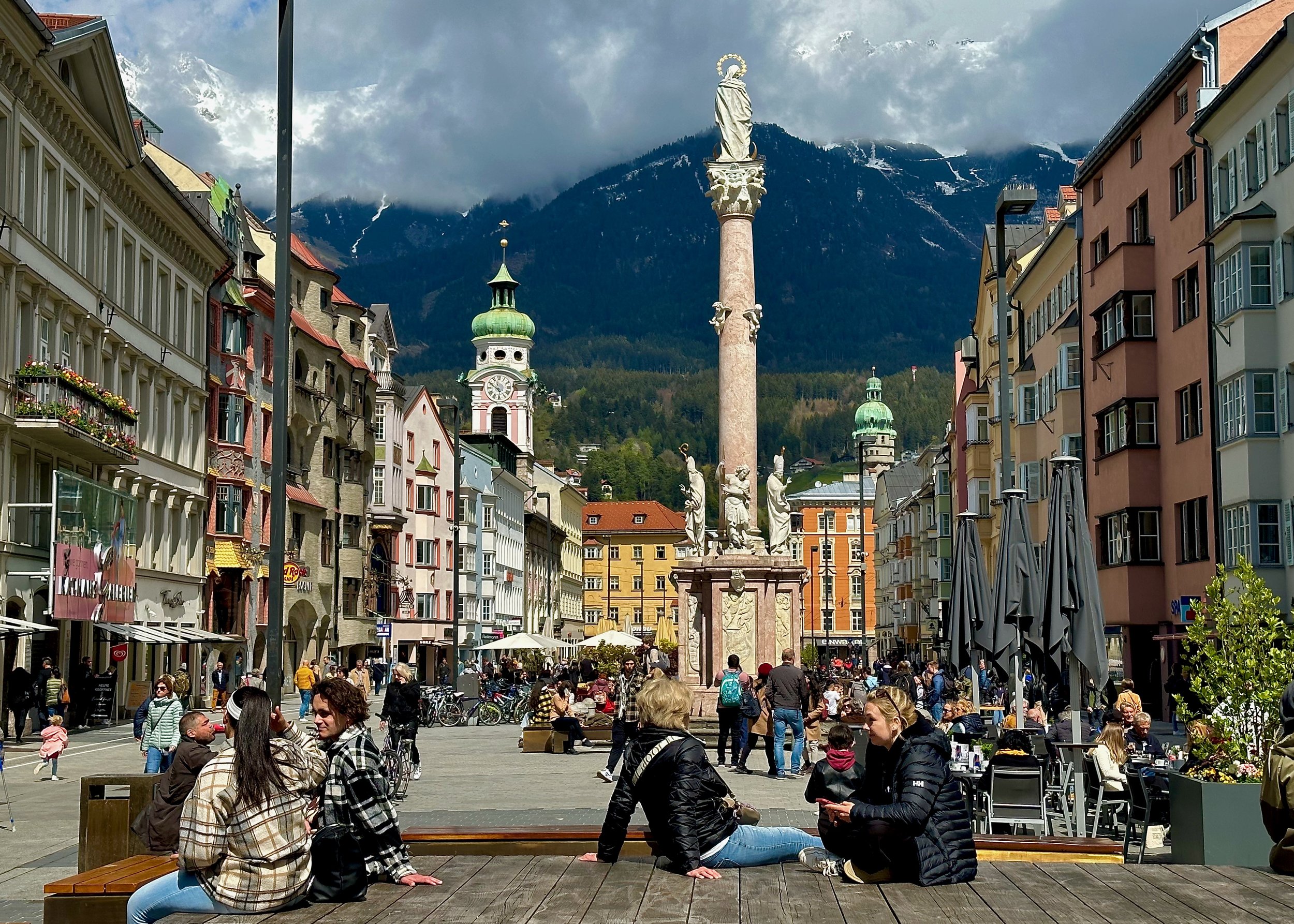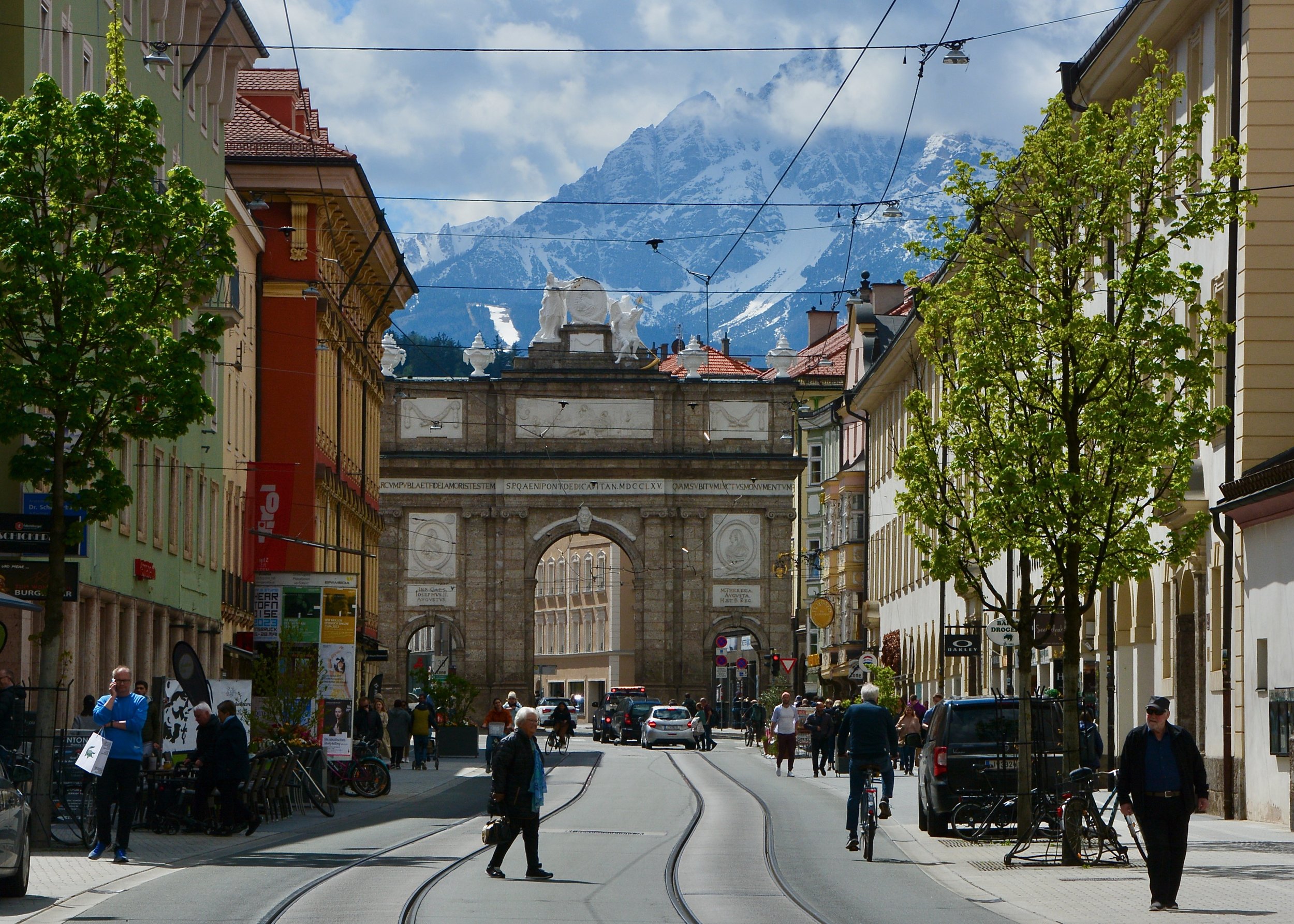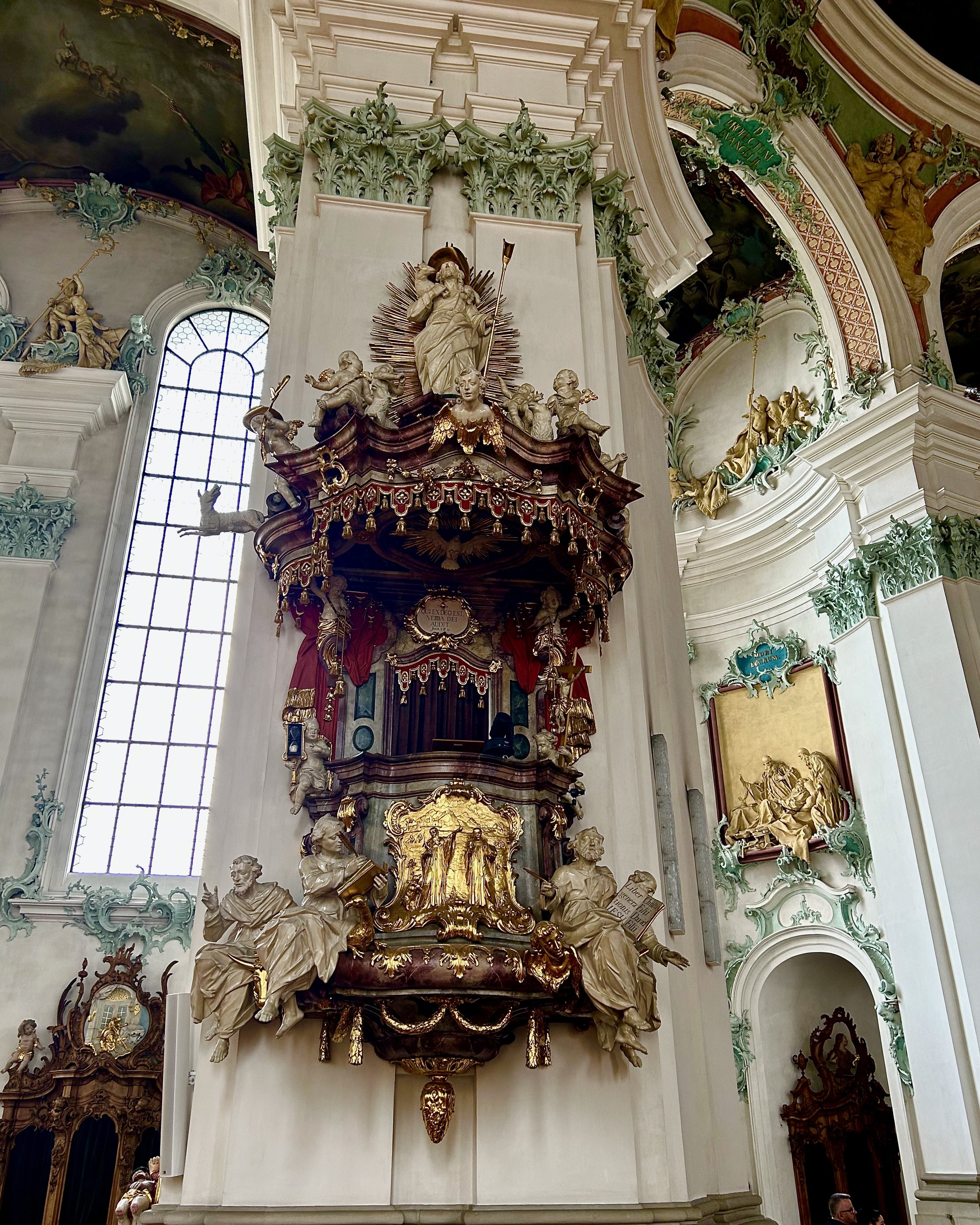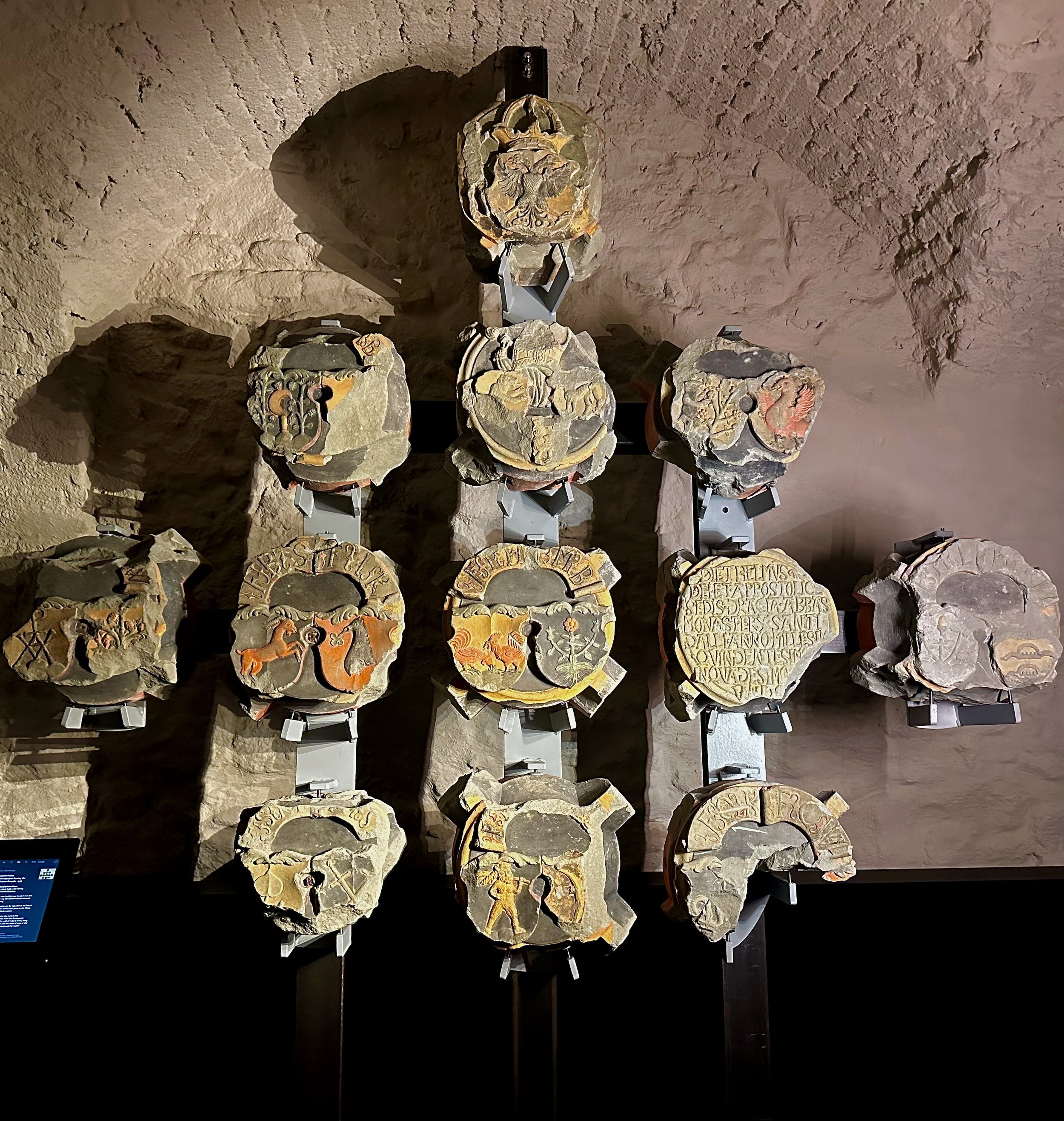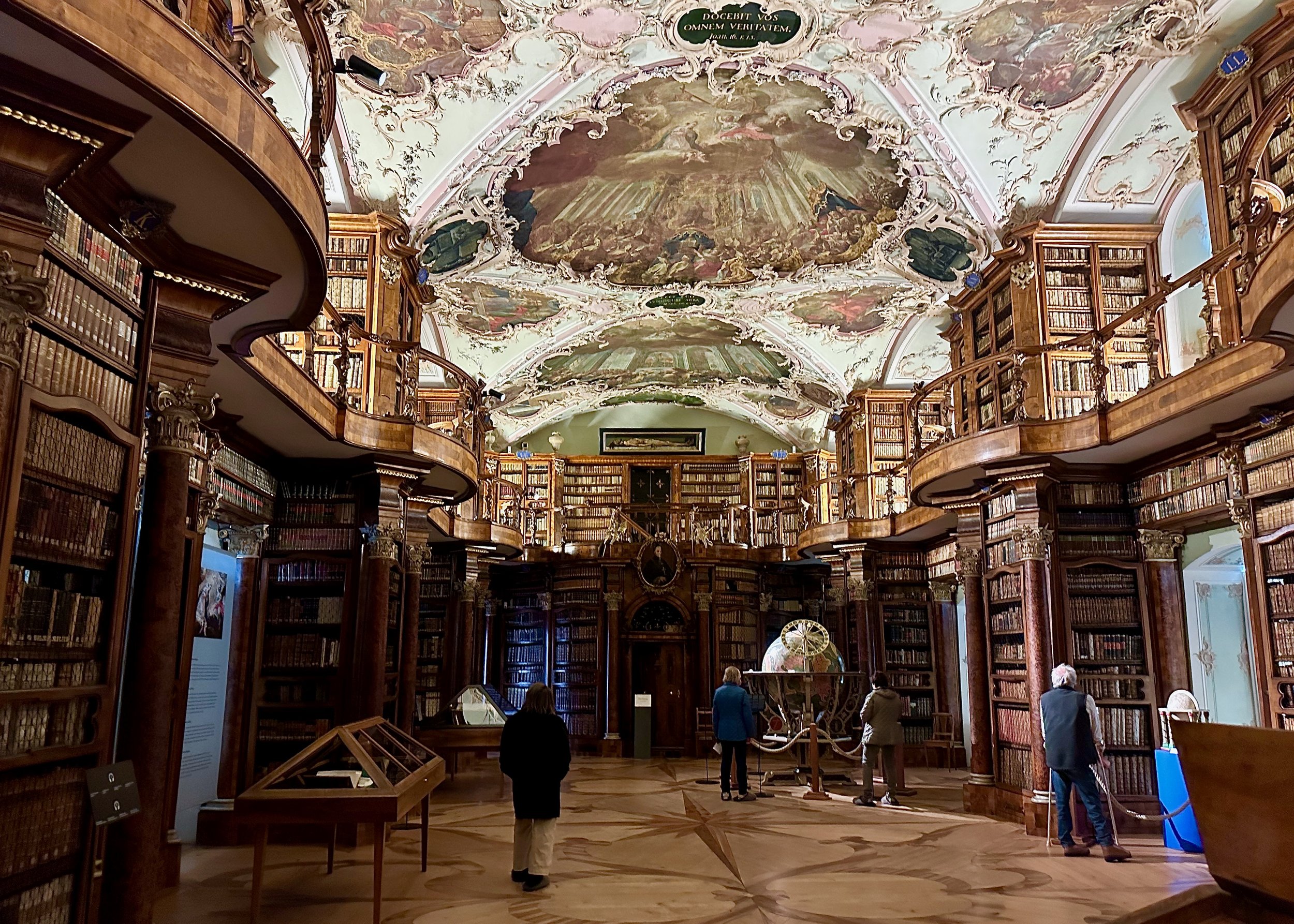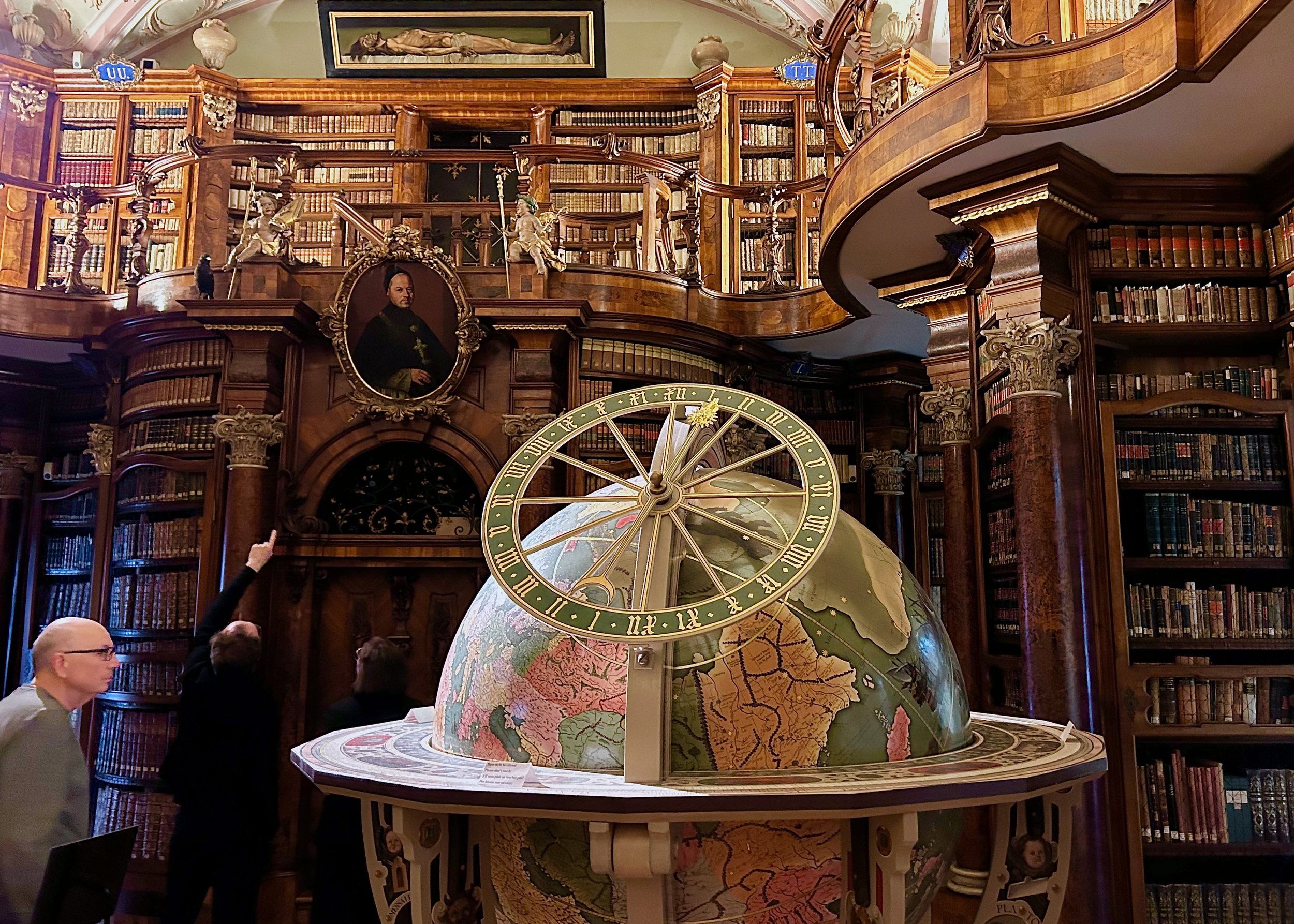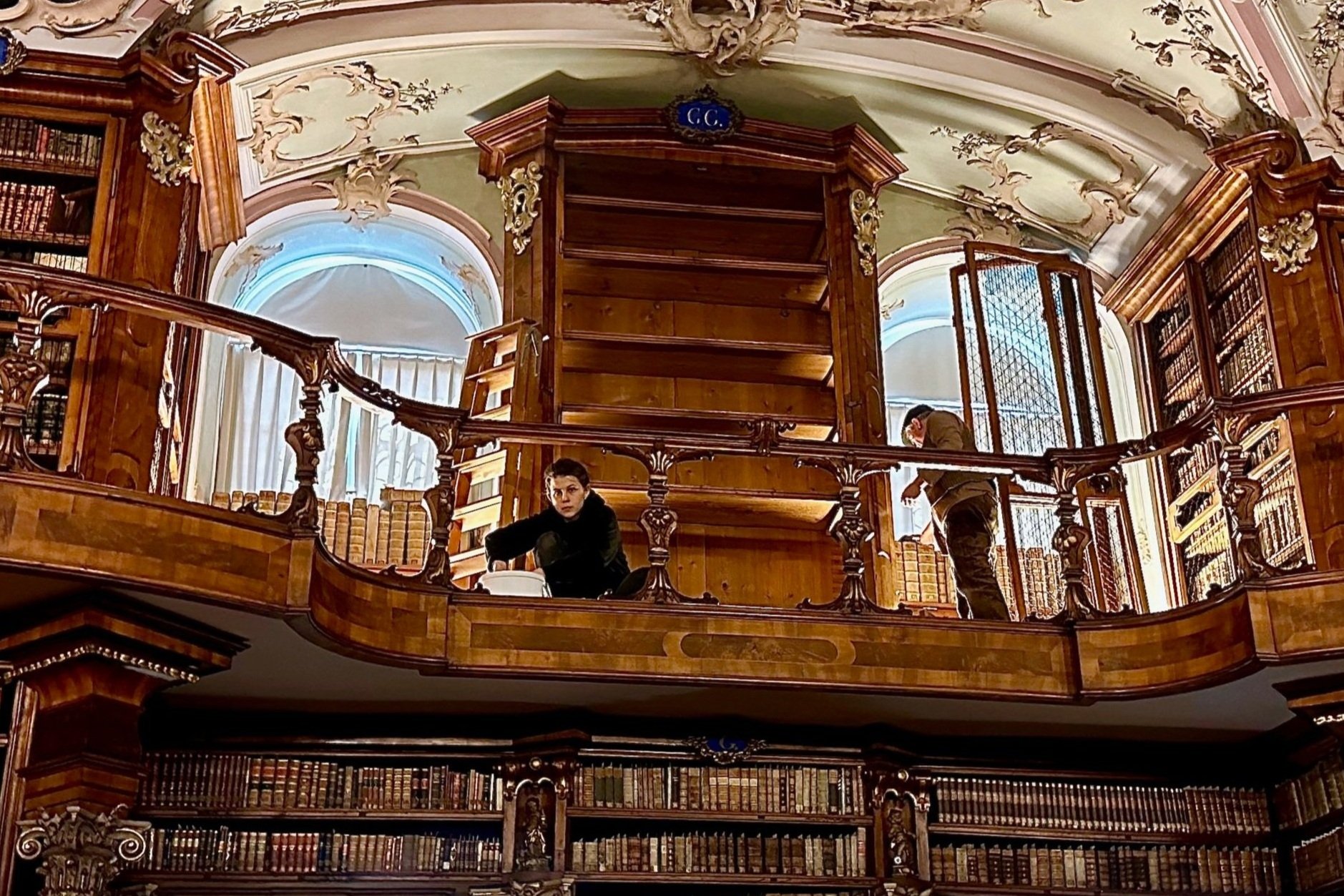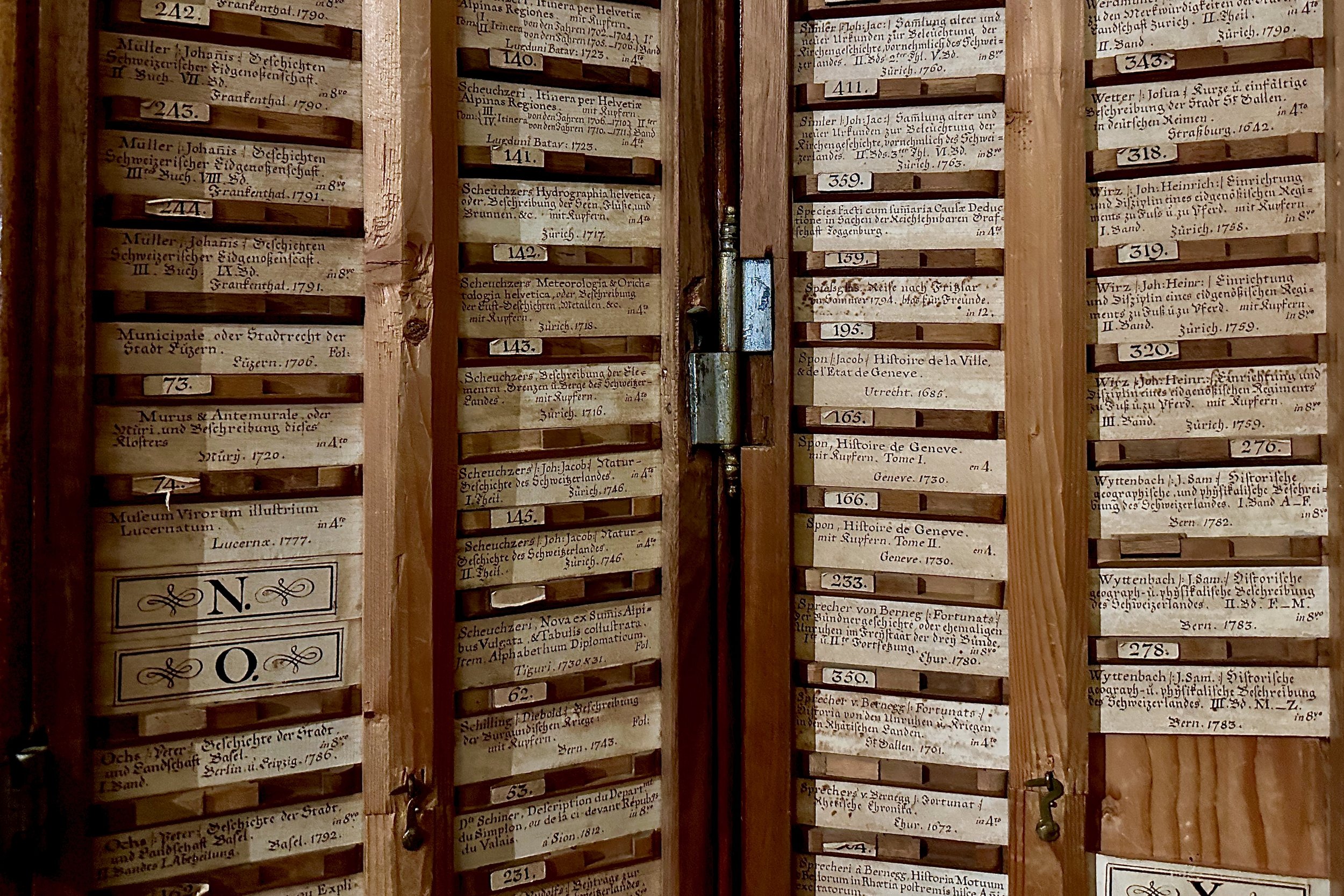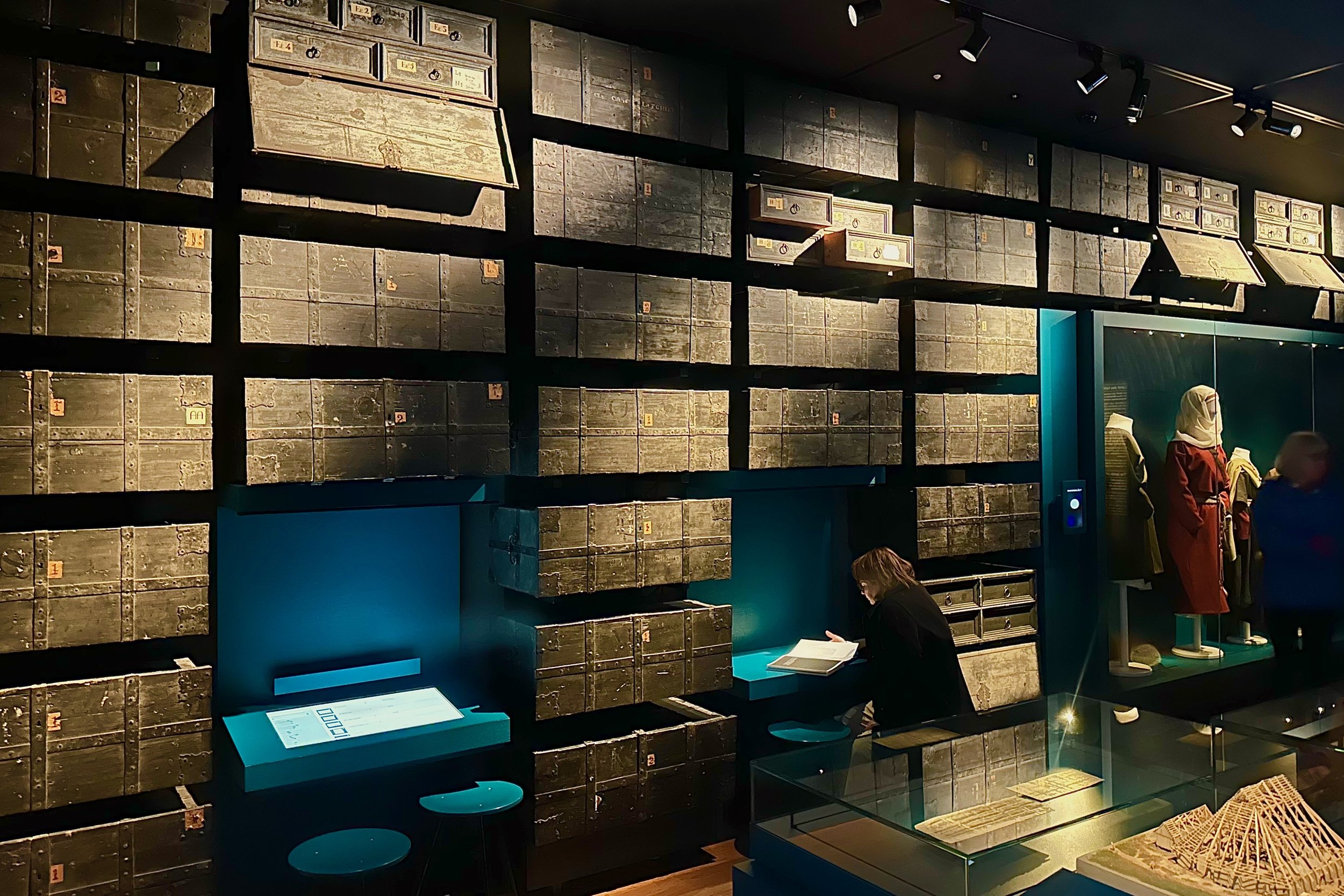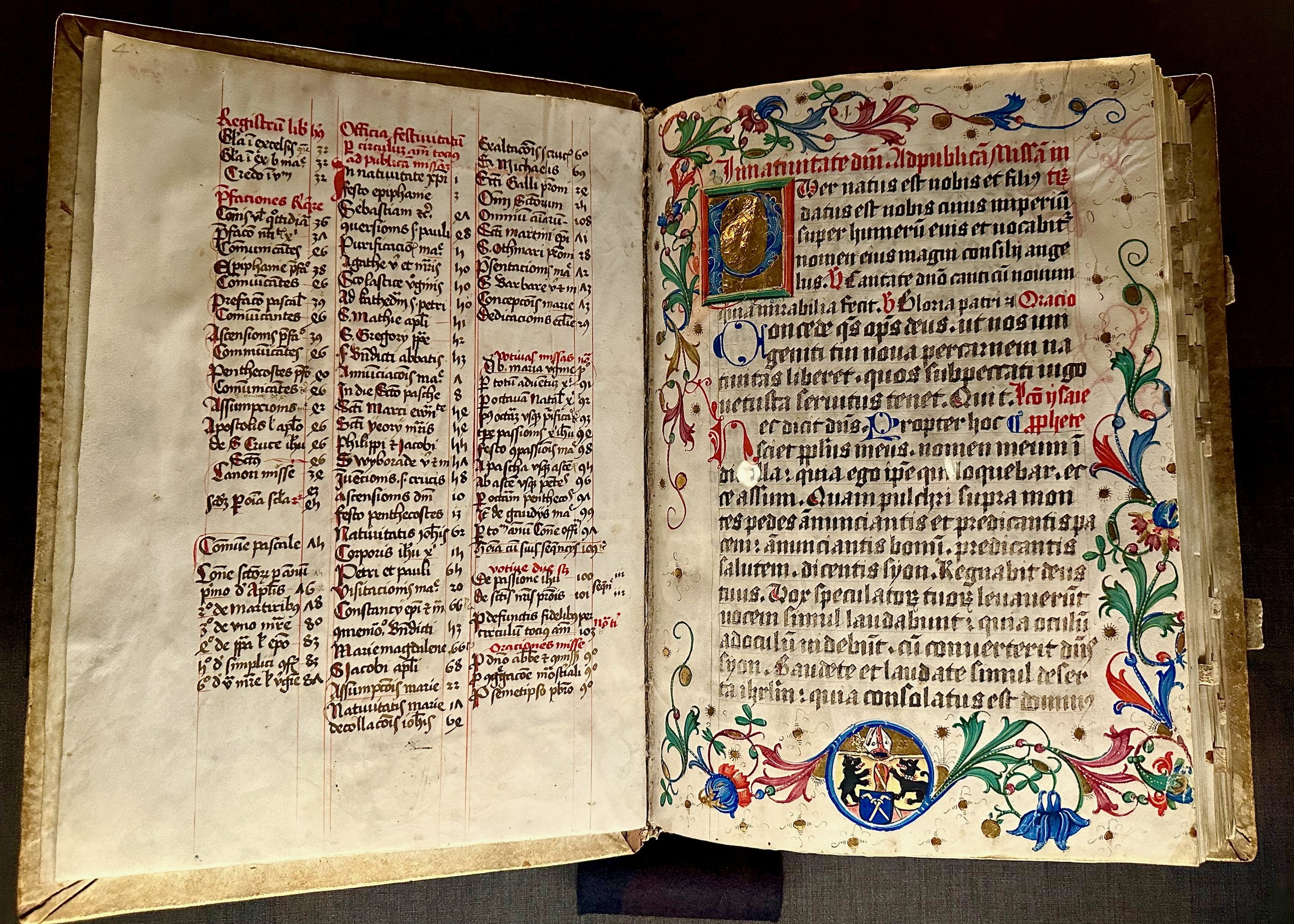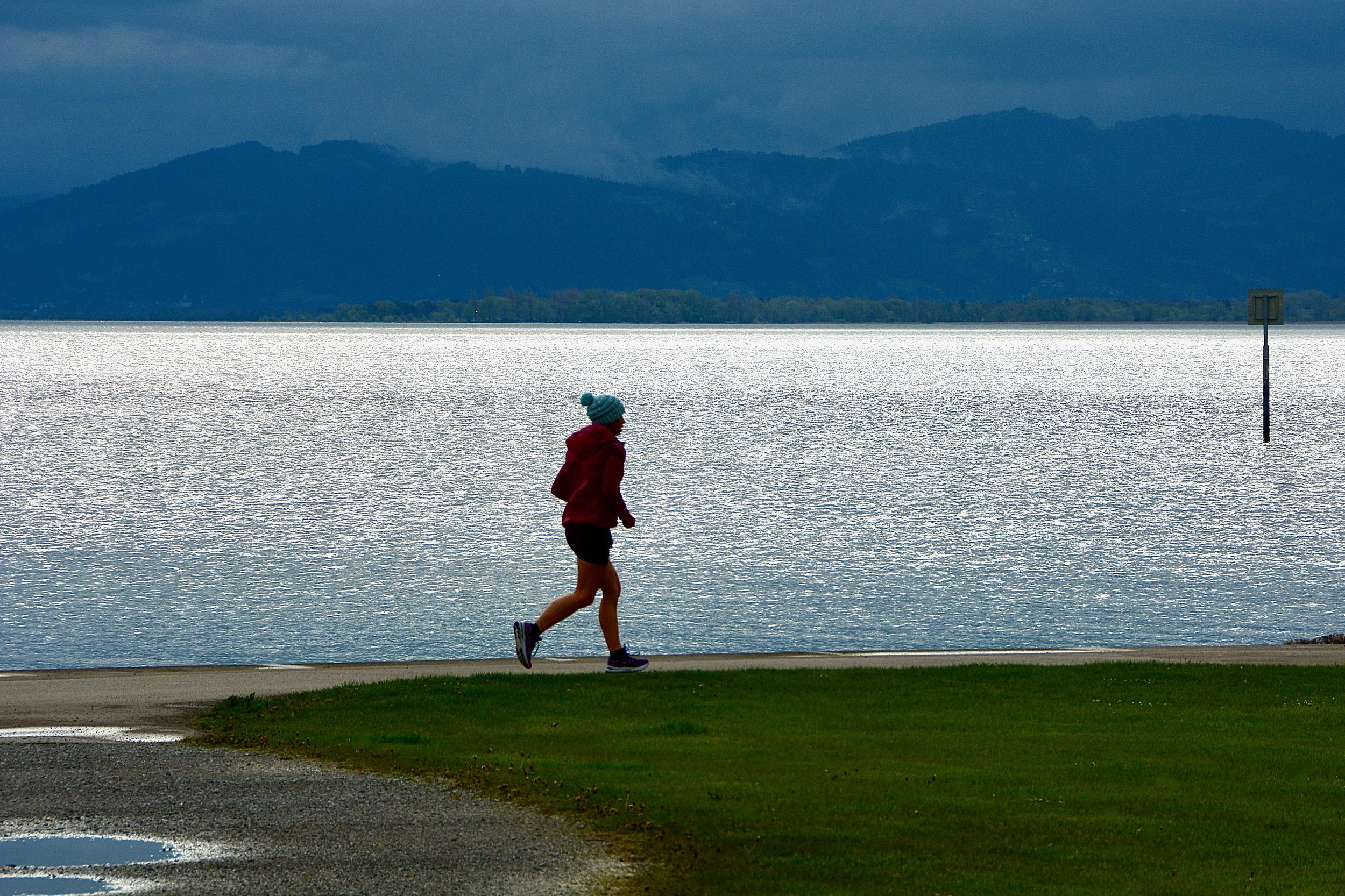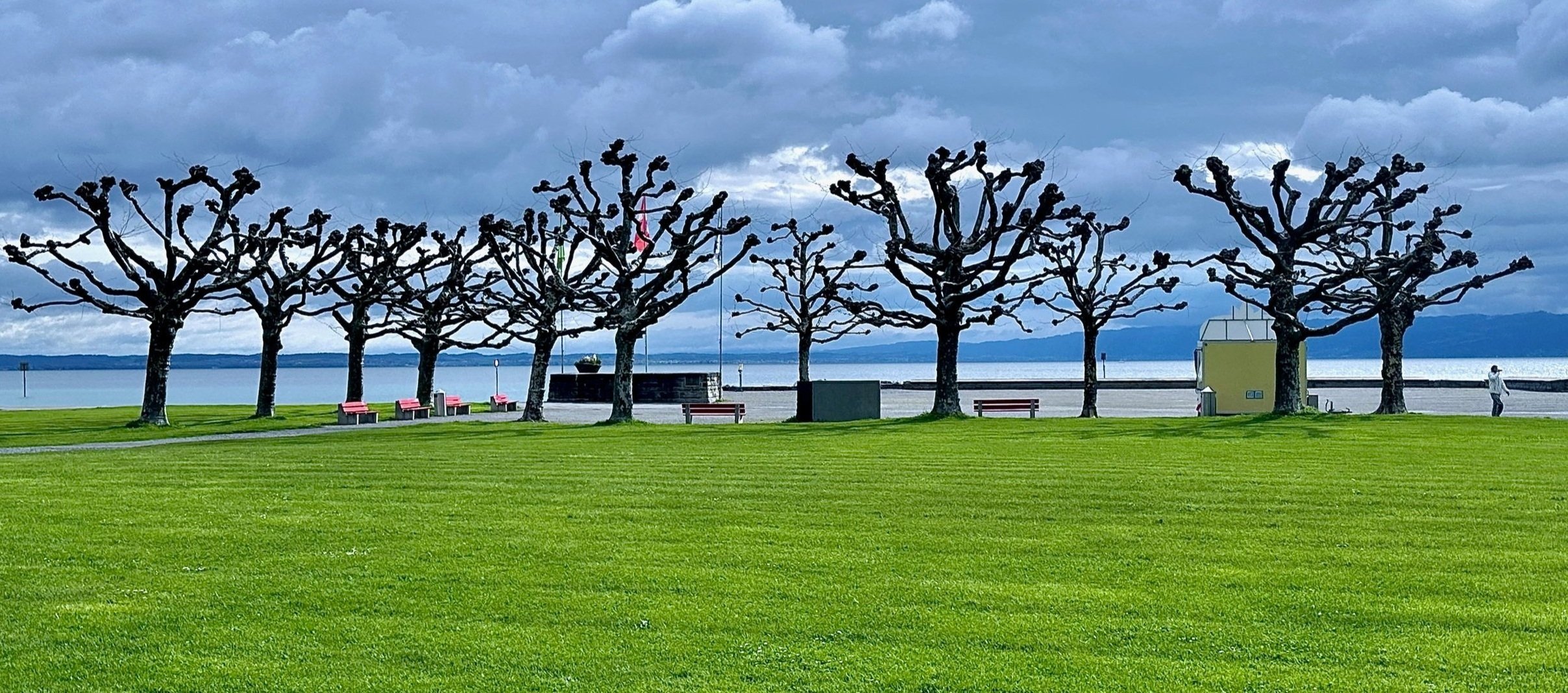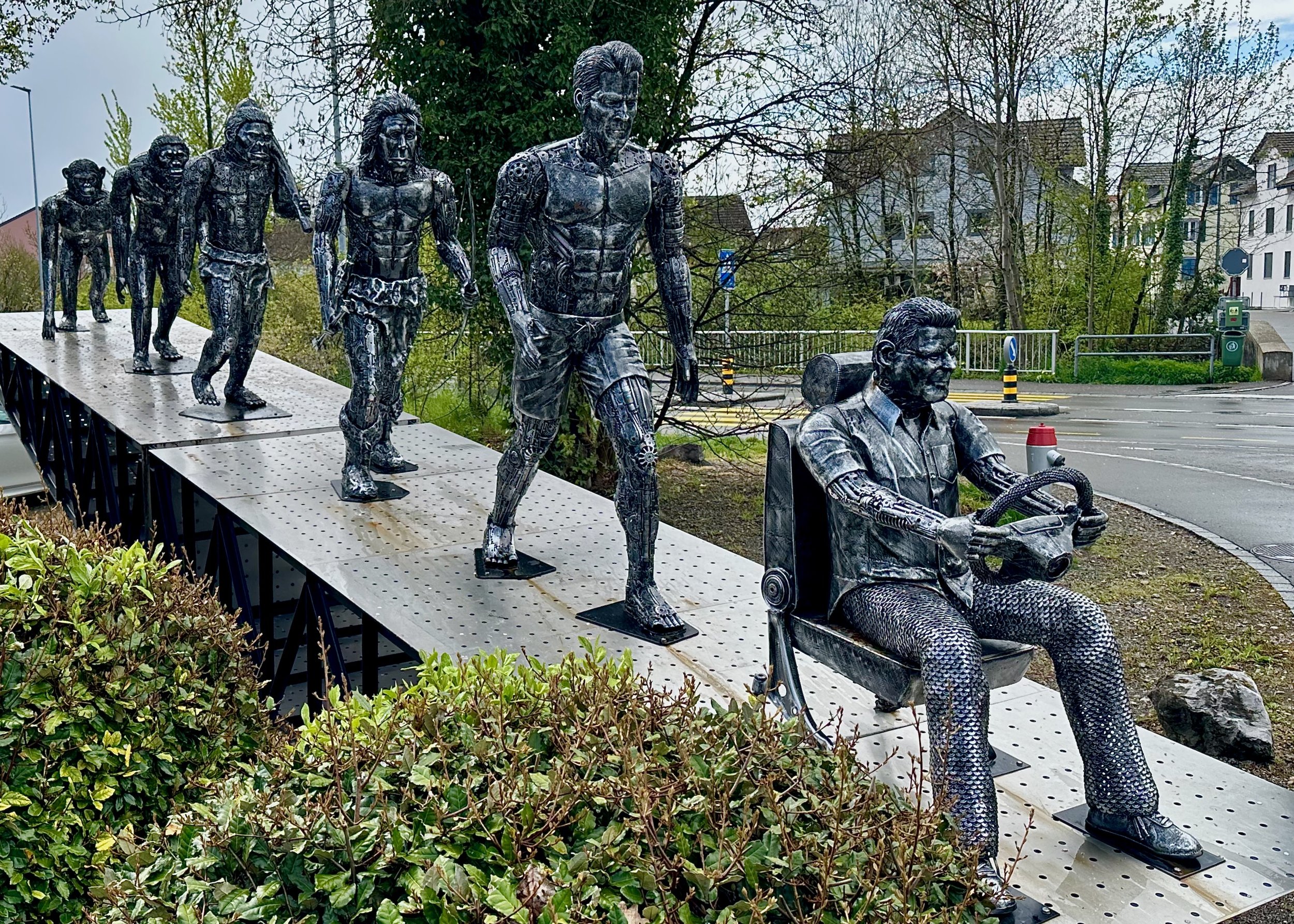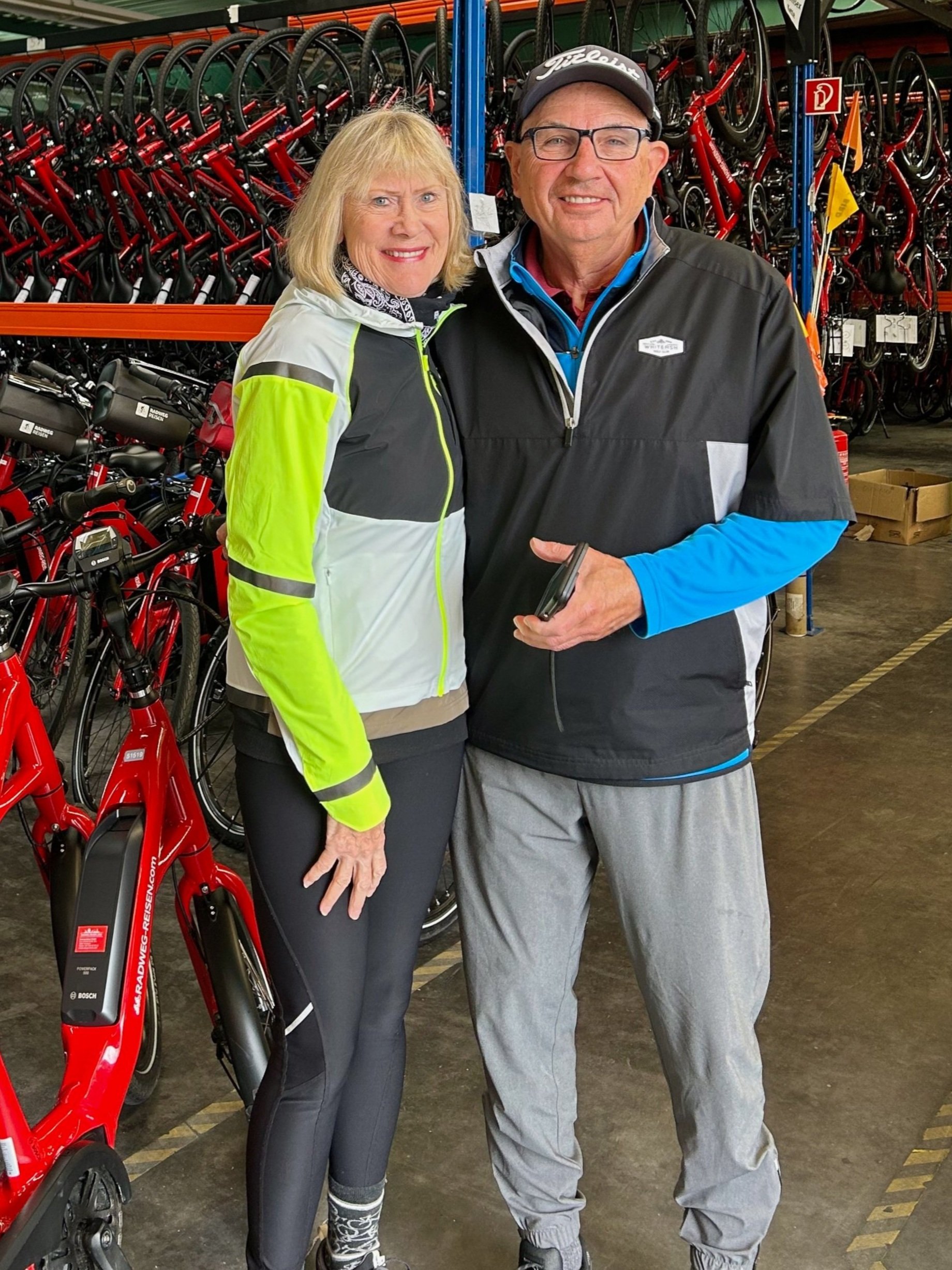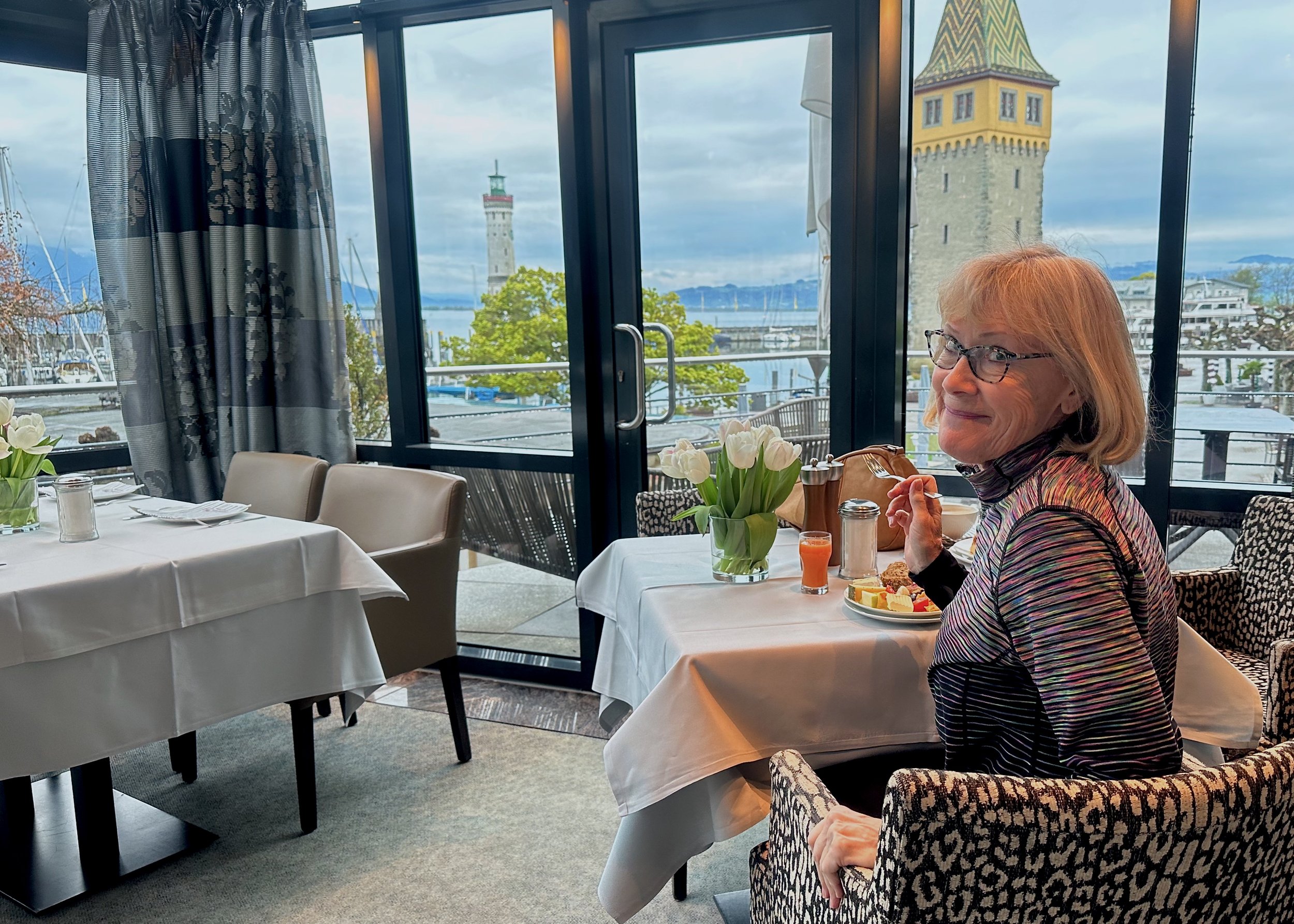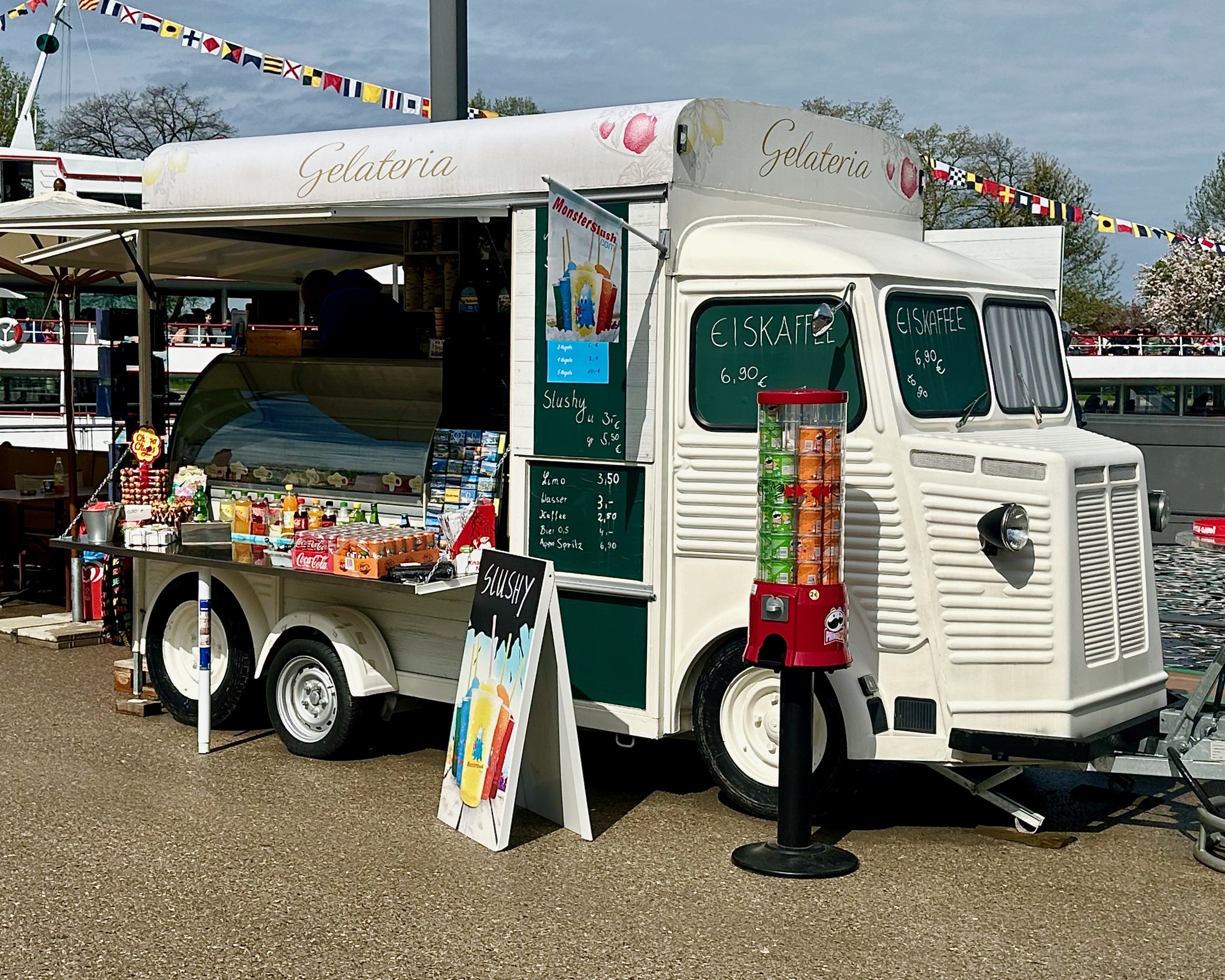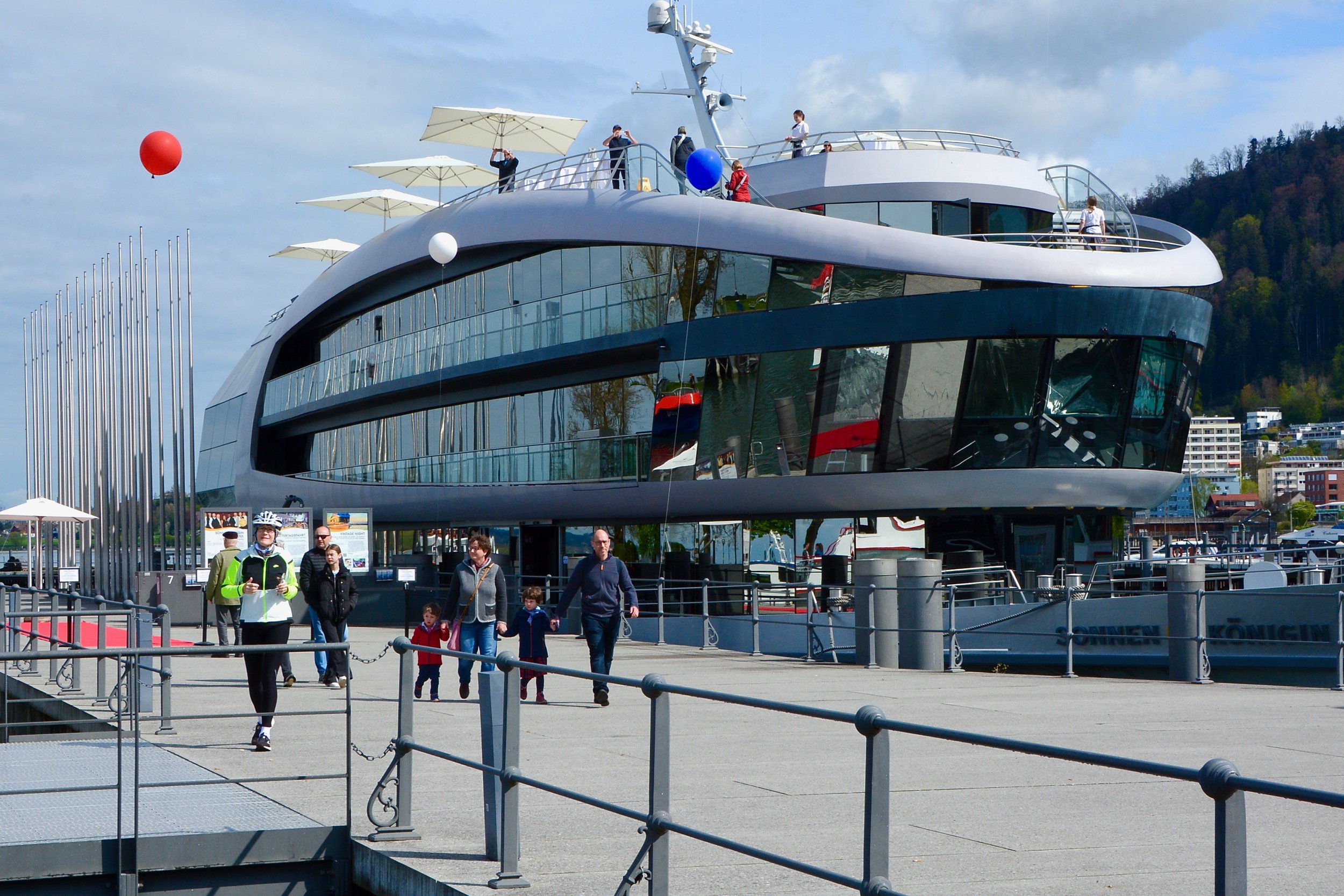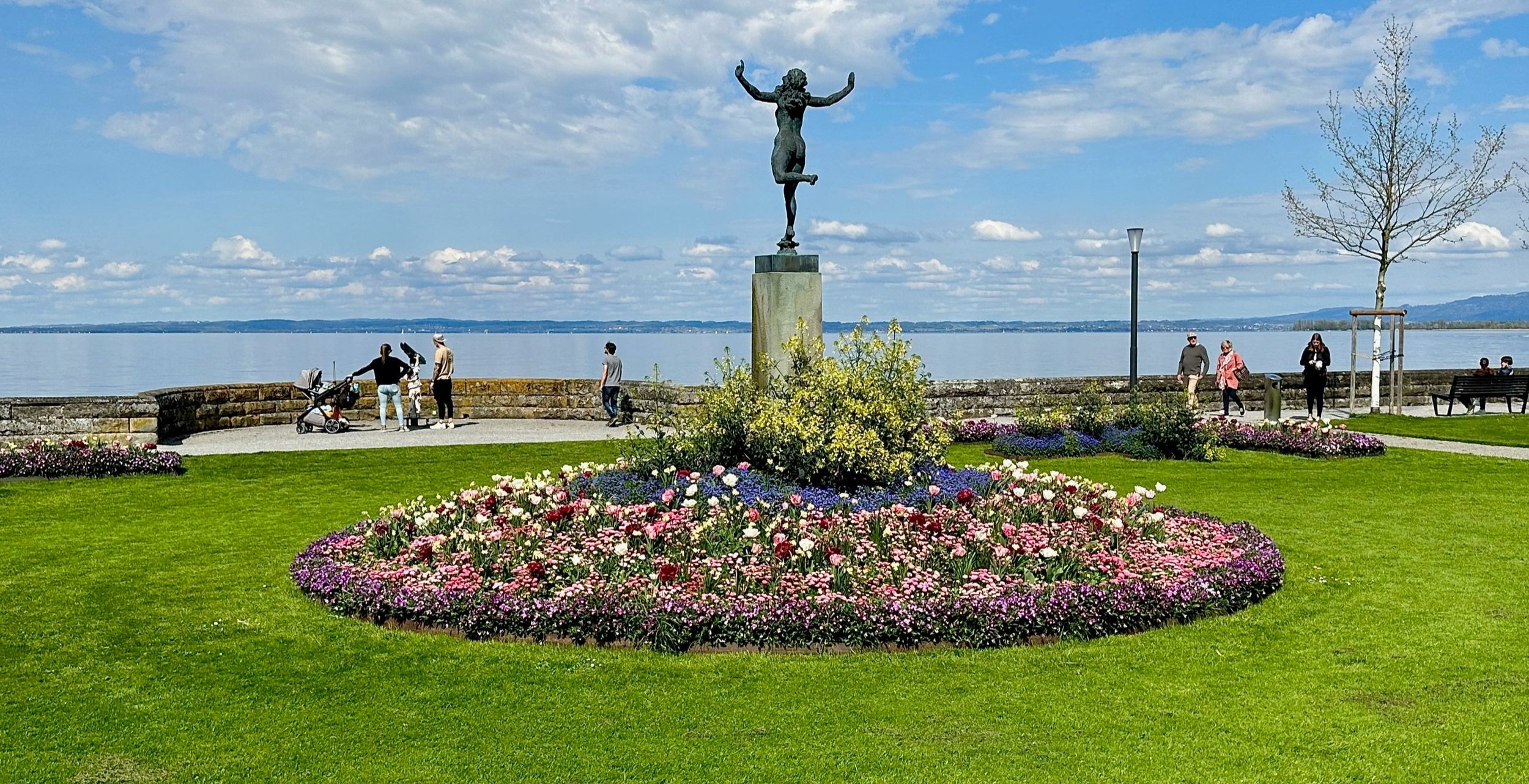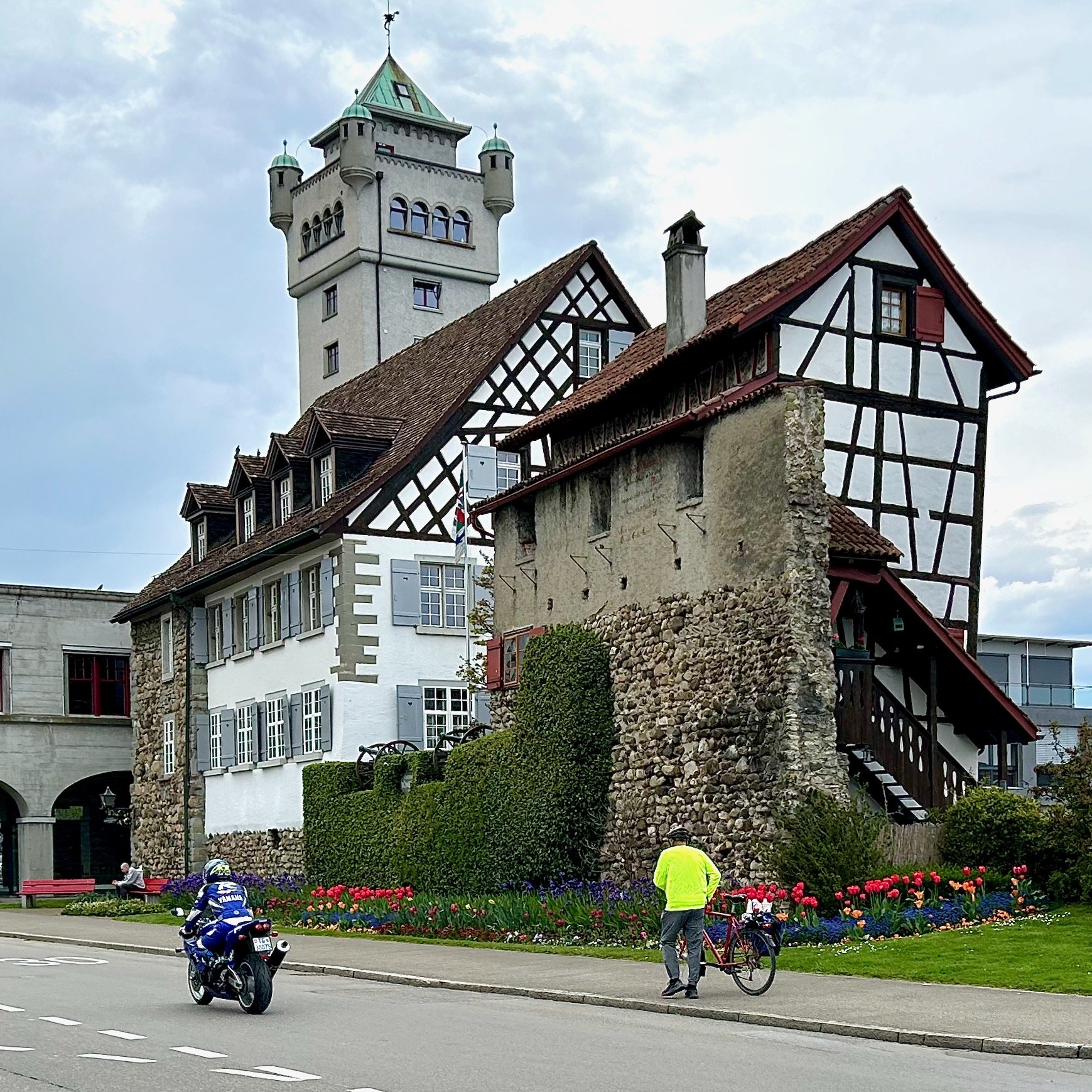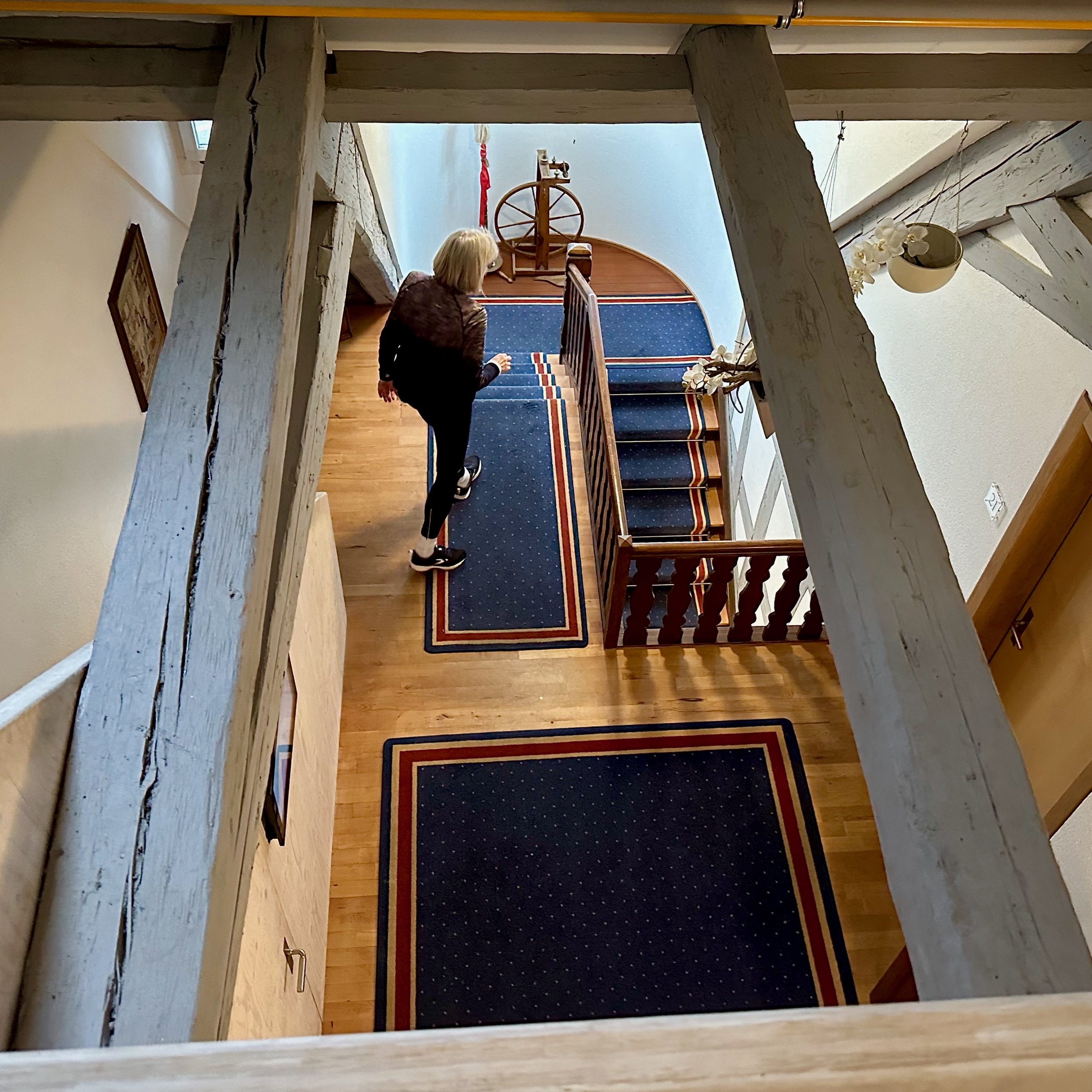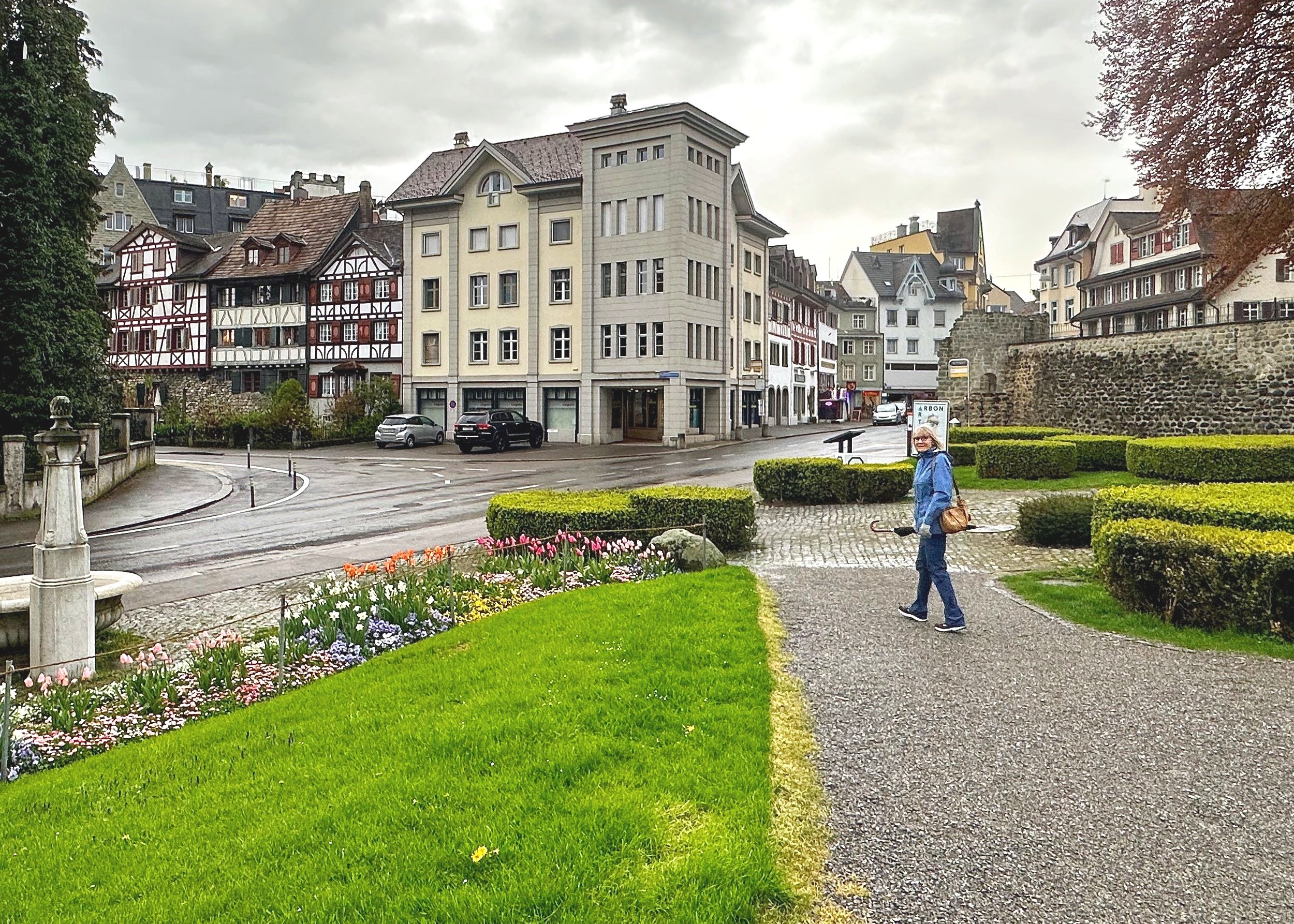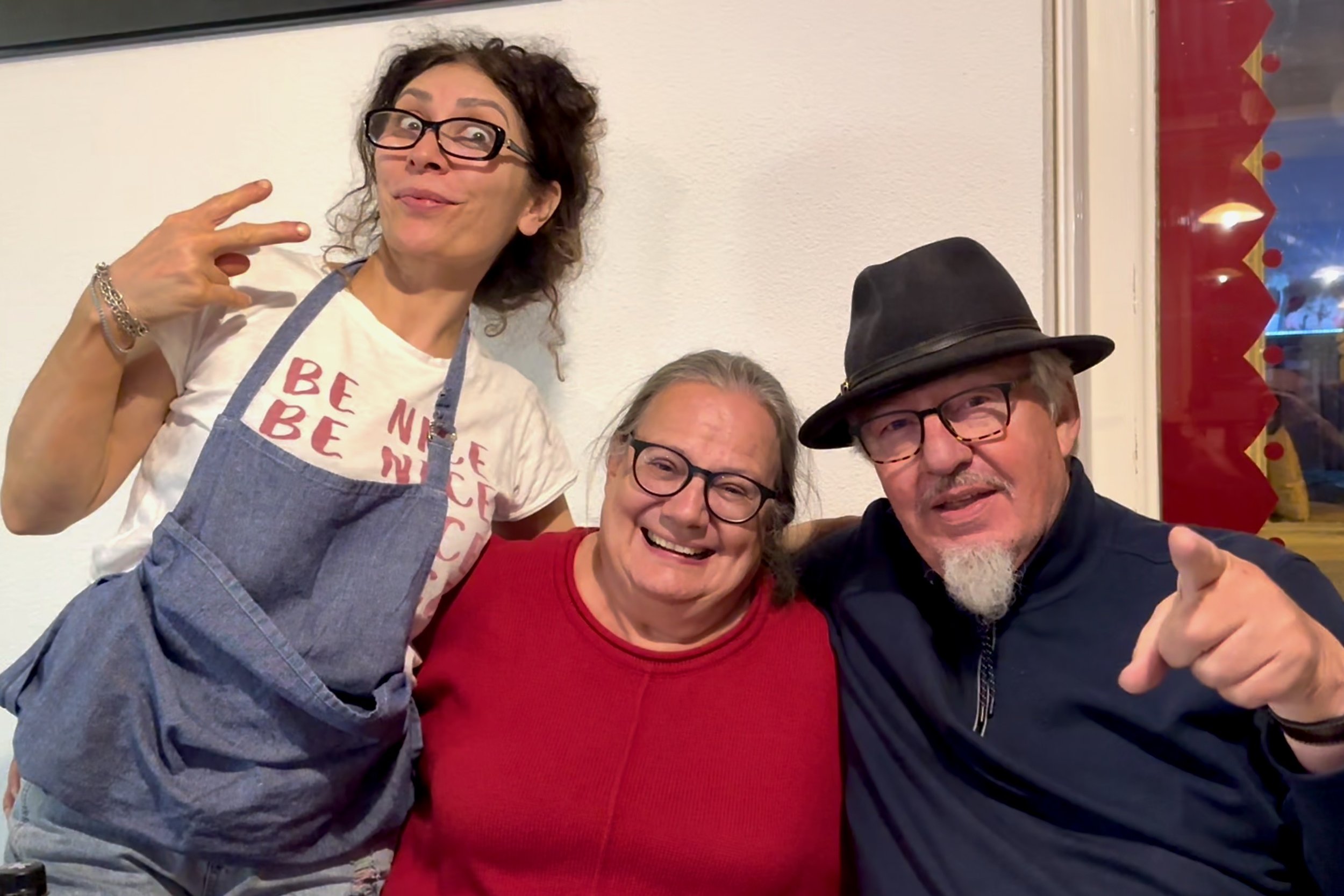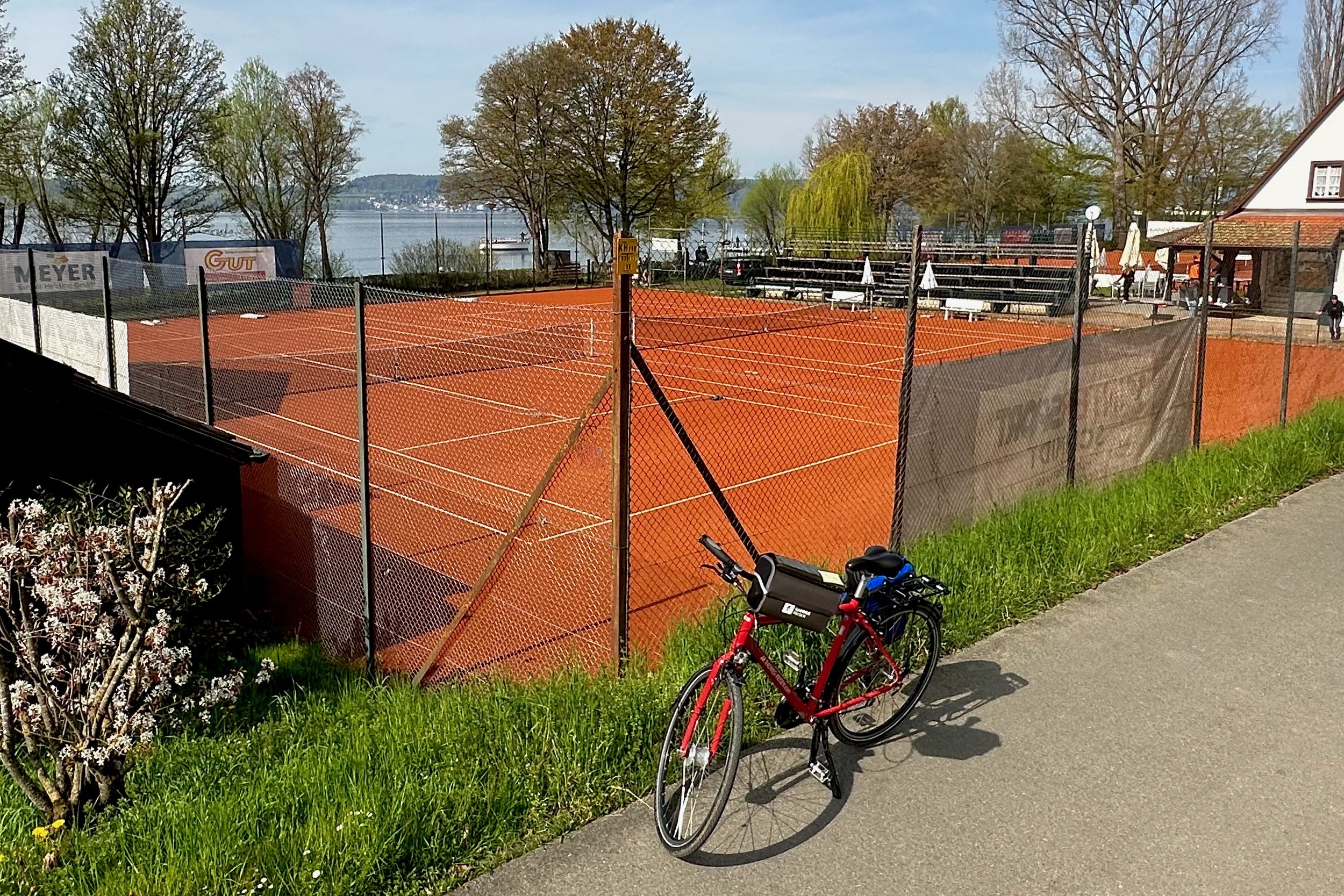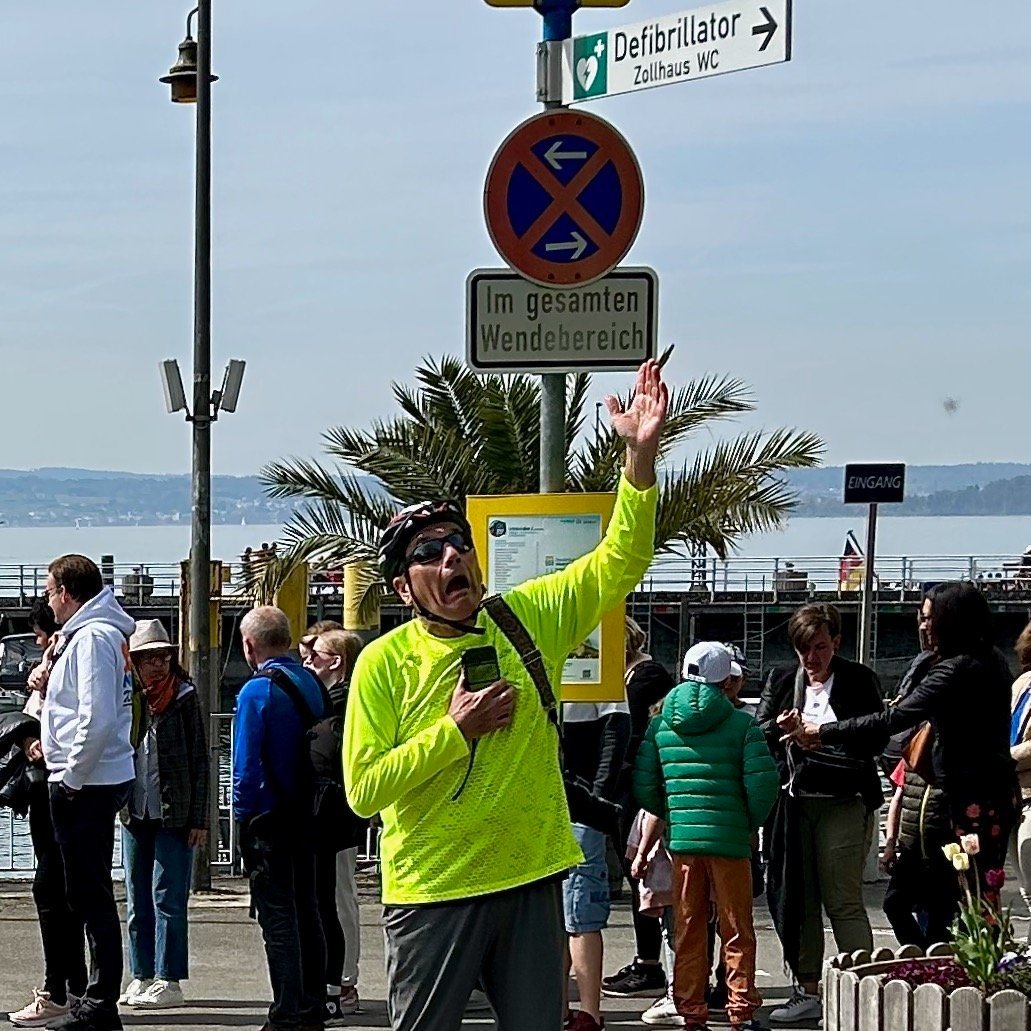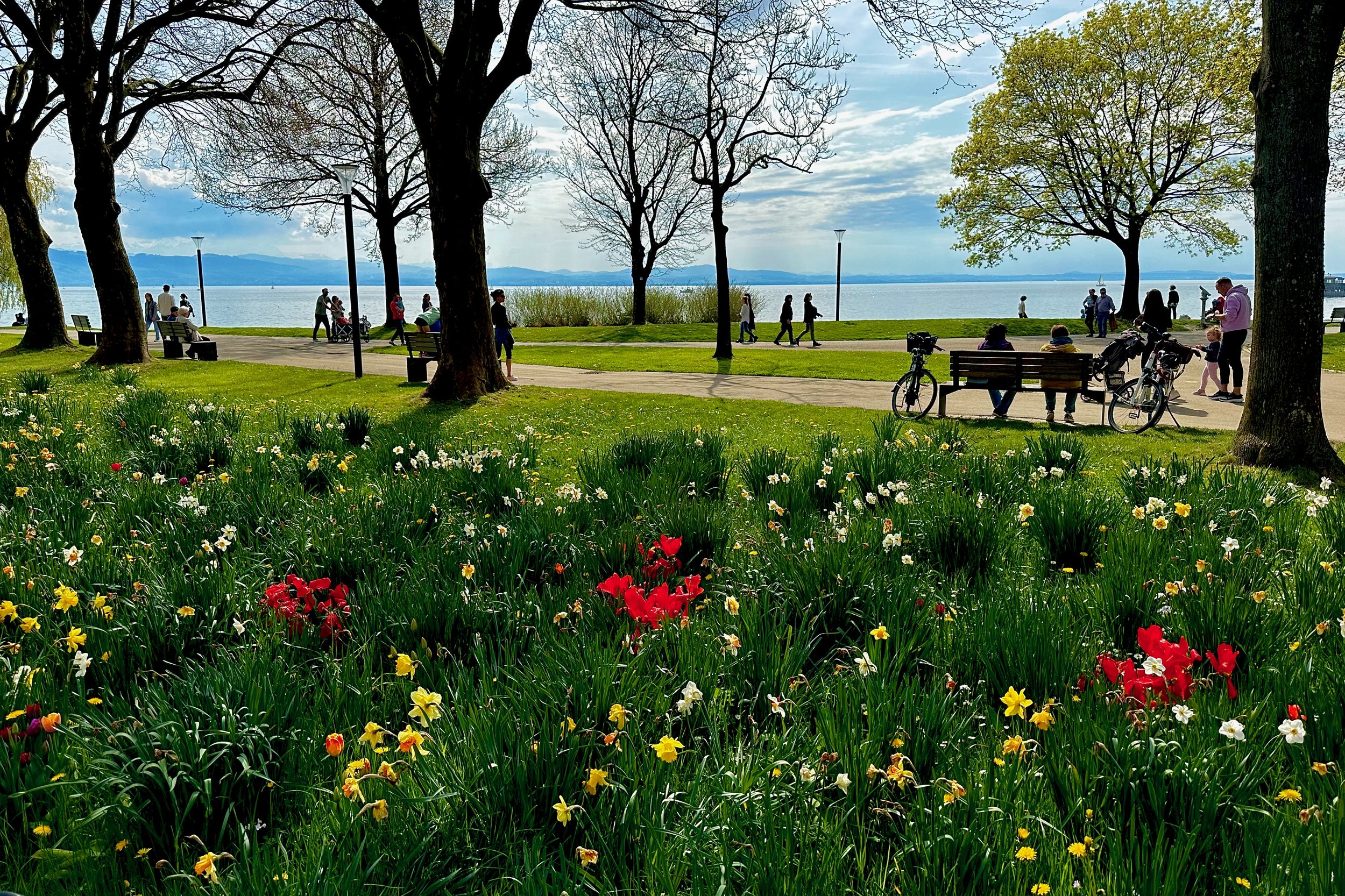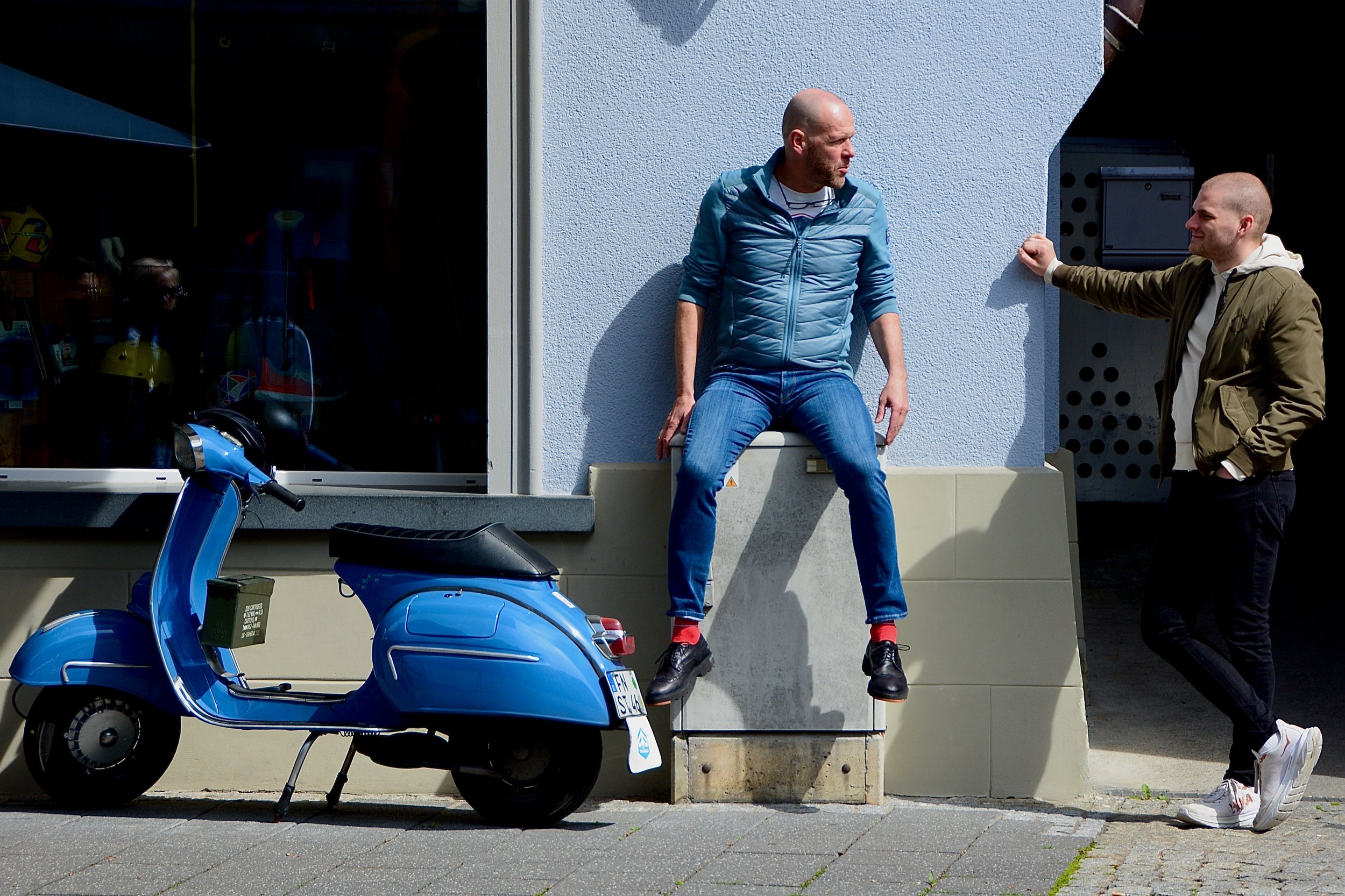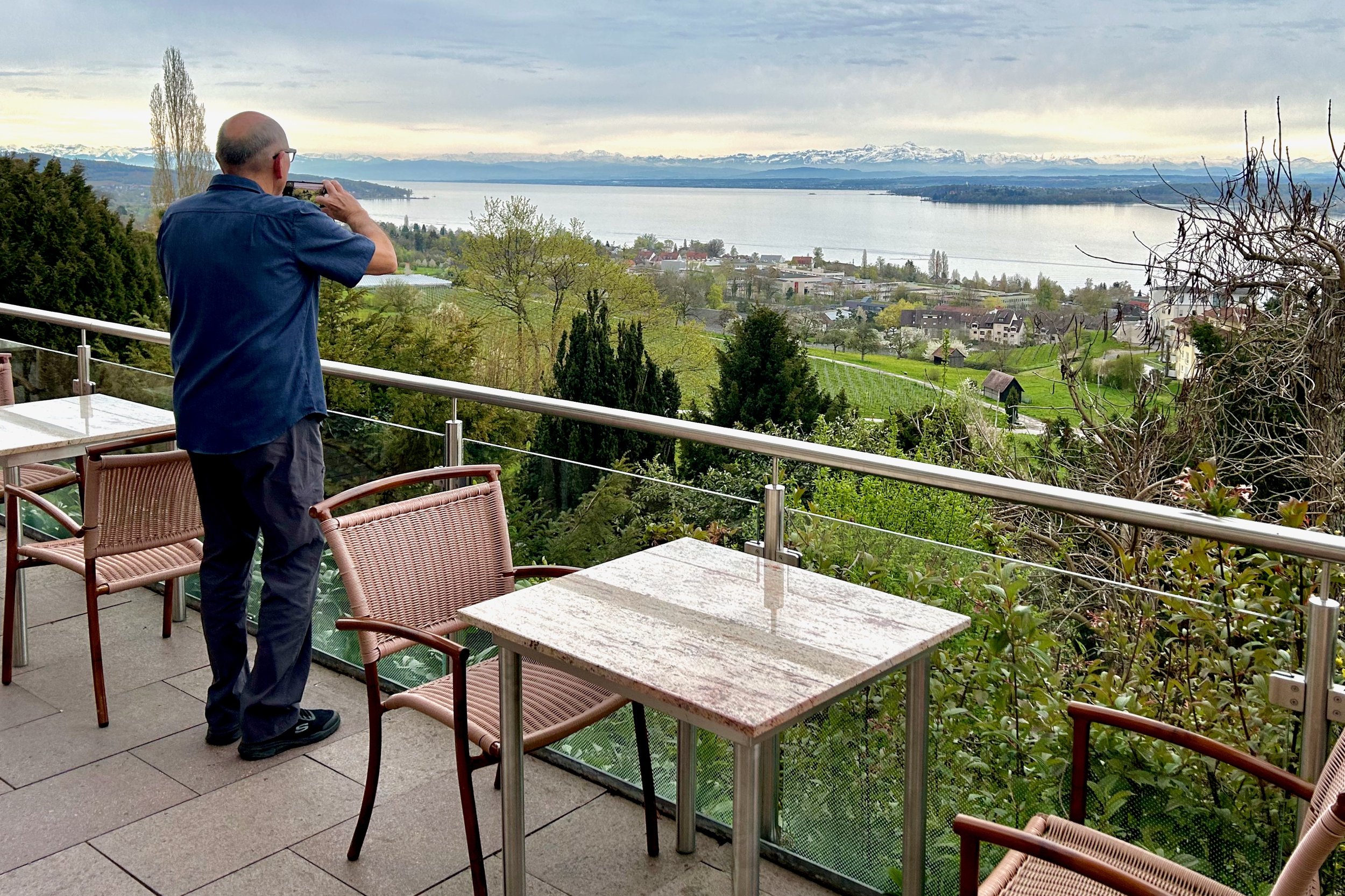Your Custom Text Here
#3 - Konstanz to Gailingen: All good things must come to a beginning (Copy)
We were finishing our breakfast. It would soon be time to hit the road and start this trip we’d been planning for about four years. But there were two problems: 1) It was difficult to say goodby to the elegant dining room and the fantastic breakfast at the Hotel Halm and 2) It was raining outside. Oh . . . and 3) It was 39 ° Fahrenheit.
Eager as we were to saddle up, we each got another cup of coffee, another pastry, looked at the map, looked at the clock, looked at the free admission coupon we got from the bike tour company for the Rosgarten Museum a couple of blocks away . . . and the next thing we knew we were at the museum, warm and dry and talking about how we had all day to get to the town of Gailingen.
Dining Room, Hotel Halm. See if you can find Mrs. Date back in the corner in the center of the picture.
It was a great decision. The Rosgarten Museum is in a lovely old building that features art and the cultural history of Konstanz and the area around the lake. An exhibit about National Socialism (Nazi) in Konstanz was particularly well-done, and featured a wonderful documentary film about the Nazis and treatment of Jews in Konstanz before and during WWII.
We enjoyed our FREE coffee at the Rosegarten Museum Cafe
A final look at Konstanz as we set sail on our trip around the Bodensee.
We could have spent half of the day in the museum, but after a couple of hours, high noon had arrived and we needed to hop on the bikes and get going. It was still raining, it was still only in the mid-40s, but the longest journey starts with a single . . . spin of the wheel?
The countryside was beautiful, the trails were generally well-marked, the rain was now only on-and-off, the wind was . . . let’s be honest, it was pretty uncomfortable. We started weighing our options if the rain got worse. Teddy at the bike shop told us that the bike route around the lake follows the rail line and you are never more than about five miles from a rail station and it’s easy to take bikes on the trains to the next town. So we had that.
Karen was better equipped in general for this kind of day — modern, layered fabrics, gloves, and a really nice waterproof jacket. But the rain was coming through the holes in her helmet and that was getting to be a major annoyance for her (my $15 CostCo raincoat had a giant hood that cover my helmet.)
We got to the town of Berlingen, it was time to fix Mrs. Date’s wet head. When in Berlingen, do what the Berlingeners do . . . put a DSW Shoe Warehouse plastic bag from The Mall of America over your helmet, of course. It not only keeps the rain off, but looks fantastic!
Loop those handles under your helmet’s straps and off you go — the talk of every town you visit.
Things went pretty well for a while after that clothing design breakthrough. But eventually, the wet cold set in to other parts of our bodies and those parts were beginning to turn colors that didn’t seem quite right. It seemed that hypothermia might be just around every corner. And then, the town of Stein am Rhein appeared. It’s billed as the “Best preserved medieval town in Switzerland”, but all we needed was a warm place with a hot drink.
Here’s a short video I shot (no audio) while riding into Stein am Rhein.
Stein am Rhein - an amazingly beautiful medieval town in Switzerland.
This town is beautiful, no doubt about it. But that wasn’t the most important thing — River Bike Cafe was the big hit with Karen. Hot chocolate and a (belated) birthday present of a rain cover for her helmet made this day bearable for the one with hypothermia setting in.
Coffee, cocoa and wool lap blankets and bike stuff!
Barbara, one of the owners of River Bike Cafe was only too happy to sell us some gear. She was very friendly and had a great sense of humor.
We loved this place, but we still had about 6 miles to go and with the late start this morning, the day was getting away from us. So, on to Gailingen, where our bags would be waiting for us.
Because of the late start and the cold, wet weather, it seemed like a long day of biking. But in reality, we only covered 29.5 miles on this first day. But we were tired, and glad to be dry and warm and reunited with our bags in our room in Gailingen, with the hope of a sunny day tomorrow.
Was it the N/A beer or hypothermia that was causing me to hallucinate?
Equal opportunity waiting
#21 - A reunion with some of my oldest friends
I graduated from Spring Lake Park High School in 1971. It’s only an 18-mile drive from where I live now, but that was a long time ago and that place sometime seems like a galaxy far away. I remember remarkable little from the days I spent in the classrooms of that school, but some of the the guys I hung around with (yes, only guys then — too afraid of interacting with girls) will be lifelong friends. A handful of us have gotten together occasionally over the years, but not nearly often enough.
Last June, one of my friends, Tom Oliverius, decided to do something about that. He invited us to stay at his cabin north of Brainerd, Minnesota. Since most of us are scattered far and wide now, we were only able to assemble four of the five old buddies for this little reunion. I was lucky enough to be one of them.
(L - R) Steve Date, Tom Breyen, Steve Laskey, Tom Oliverius (Unable to make it - Steve Erickson) - Yes that’s 3 Steves and 2 Toms!
A little background
While I was on the Jr. High and High School football and basketball teams, it was golf that I loved. The group of guys that became my best friends started forming in 7th grade, although I’ve known one of them, Tom Oliverius, since 4th grade. I went our for track in the spring of 7th grade, but didn’t enjoy it much (or do very well — although I did kind of figure our how to throw a discus about half-way through the season). So I tried baseball for about a week or so in the spring of 8th grade (again, mediocre at best) when my friends and I heard that one of the high school teachers was starting a golf team.
I had never actually played on a golf course, but I did have some clubs. I started watching golf on TV when I was 8 or 9 (what a weird little kid) and my Dad bought me a putter and a 7-iron for my birthday when I was 10. I putted in the living room and whacked the 7-iron around a nearby park. Three years later my Dad bought me a set of Sam Snead Blue Ridge clubs. He took be to a driving range a few times, and I was in love — not with girls, of course, but with Arnold Palmer, Gary Player, and a few other players of the ‘60s — but mostly with the game of golf as it appeared on our black & white TV.
So I had golf clubs. I knew the basics of how the game was played from TV. I was ready — and thrilled to hear there was going to be a golf team. Better yet, several of my friends wanted to try golf too!
We hacked and laughed our way through that first season. We were all beginners and it showed. But we had such a good time that everybody came back for another season in 9th grade, and we picked up a few more along the way. Because most of the guys on the golf team that first year were seniors who were mostly trying in just to screw around in their final weeks before graduation, that group of “seasoned” 9th graders pretty much became the SLP High School Golf Team for the next four years.
(Above) Tom Breyen (“honorary” golf team member) Here he’s standing — as usual — very close to the baseball coach.
(Left) 9 of the 10 guys on the 1971 Spring Lake Park Panthers Varsity golf team were Seniors.
We spent two nights at Tom O’s beautiful cabin on lake near Nisswa, Minnesota. We played a couple of rounds of golf on two great resort courses, The Pines and The Preserve — both Grandview Lodge courses. We had a great time together. It’s amazing how much we still have in common 52 years after graduating from high school and going our separate ways.
I hope we can do this again in 2024. It would be really nice to make this a yearly thing.
Tom O’s “cabin” is actually a mansion on the lake.
Neither one of them caught a fish.
(Left to Right) Tom Breyen, Tom Oliverius, Steve Laskey
It seems that some us have stayed in touch more than others . . . .
#20 - An evening at Crooners with Steve and Louann
We had a really nice evening of drinks and Jazz at Crooners Supper Club in Fridley, Minnesota. Crooners is one of the best places in Minnesota to see live jazz performances.
Our friends Steve Larson and Louann Denniss are jazz aficianados. They invited us to go with them to Crooners back in 2022 and we had a great time that night. So when they asked us to join them again to see singer Maud Hixon and pianist Rick Carlson for a show celebrating the music of George and Ira Gershwin, we jumped at the chance.
About Crooners: In the summer of 2014, newly married Mary Tjosvold, a Minneapolis businesswoman and Larry Dunsmore an accomplished jazz pianist decided to buy the Shorewood Bar and Grill building on Moore Lake, just outside the city limits of Minneapolis. In just a few months, they transformed the old Shorewood space into a top notch live music venue.
Sadly, Larry Dunsmore passed away from cancer less than a year later. Mary continued the development of Crooners and named the first music showroom the ‘Dunsmore Room’ in his honor.
This is not a great photo of Rick Carlson and Maud Hixon, but it does show what a nice space the Dunsmore room is.
From Maud’s bio: “Hailed as “gently virtuosic” (All About Jazz), singer Maud Hixson is a devoted exponent of great songs, ranging from the classic Great American Songbook to the often unsung or forgotten compositions awaiting rediscovery.
The music was great on this night. Maud Hixson chose a good mix of well-known and lesser known songs, which she interspersed with stories about the Gershwin brothers and the times they lived in, engancing our appreciation of the composers and their music.
It was a lovely evening in the company of lovely friends, Steve and Louann. Thank you for letting us tag along!
(It was so cute to watch Louann swoon while Steve crooned all the way home.)
Our big night out!
Have you ever seen a cuter couple?
CLICK HERE to see all our “70 Fun Things @ 70” blog posts (so far).
#19 - Open Window Theater: Never heard of it? Neither had we.
It’s usually fun to go somewhere you’ve never been before. And if that somewhere is a theater (and especially one you’ve never even heard of ) . . . well, that’s even better. Add bonus FunPoints™ when that theater surprises you with its professional-quality production and unique vibe.
I saw a post by a FaceBookFriend about the Open Window Theater in the outer Twin City suburb of Inver Grove Heights. I’d only met “FBF” Craig R. Johnson once in person before, but he’s a quite well-known theater director and actor in Minnesota. We know of him as the director of some plays at the Commonweal Theater in Lanesboro, Minnesota. (Turns out, he also lives in in our neighborhood!) He posted that he was in a production of ‘Our Town’ at the Open Window Theater, and I said to Karen (in my best Minnesota accent), “What the heck — let’s go see it, Hon.” So we called our friends John and Maureen Trepp, and off we went to the ‘burbs to see live theater.
The Open Window Theater is “atypical”. (Karen’s word) The first thing you notice is that it’s located in what used to be a store in a strip mall in suburbia. When you enter, you notice that the space is big, but also kind of a blank slate — no interesting architecture or ornamental decor here.
But the second thing you notice is that the lobby area is filled with cool stuff — stuff to look at, to buy, to eat, lots of art on the walls, books to read, funky furniture to sit on, but most “atypically”, there are a bunch of game tables that invite you to have some fun before the show. There are board games, a pool table, chess table, foosball table, and a table for playing cards.
There’s something else about this place that sets it apart from most theaters. There’s a religious air about it that gradually becomes apparent as you move around the lobby. The candles, the alter-like tops of cabinets . . . the paintings of Popes (?!?). Turns out, it DOES have religious undertone, and in particular, a Catholic one. The season lineup, posters of past plays, the sponsorship section in the programs, all point to a heavy Roman Catholic influence. But I was surprised at how it didn’t creep me out a bit because I was having fun and the production of “Our Town” was so good.
The theater auditorium is also a large, plain room. Like the lobby, it has been made to feel more cozy and intimate when the lights go down. Even though ‘Our Town’ has played on virtually every stage in America, it was the first time we’d seen it. This production was very good — acting, staging, lighting — all receiving high marks from our group.
Most of the actors came out to the lobby and mingled with the audience after the show, which was very nice. I asked (FBF) Craig about this theater and told him I’d never heard of it before. His response surprised us when he said with a laugh, “Neither had I until I got this part”. I don’t pretend to be a theater expert, but I thought I at least knew about most theater companies in the Twin Cities area that were of this quality.
Pope (and Saint) Jean-Paul II smiled down on our 3 of our 4 foosball players — although now it seems he was looking at me. Yikes!
Craig was terrific in the role of Dr. Gibbs. Here’s an excerpt about his performance in a regional review from the website Talkin’ Broadway. “Craig Johnson offers an excellent portrayal of Doctor Gibbs as a trustworthy and sensitive man. When he conveys his disappointment to George for not doing his part to help his hard-working mother with household chores, he does so with an authority based on love, not on force. It is one of many deeply moving scenes in Wilder's play, and superbly acted.” (Read the full review of Open Window’s ‘OUR TOWN’ HERE.)
The Open Window Theater has been around for about a dozen years. (Again - who knew?) Jeremy Stanbary is the Executive Artistic Director, Vice President of the Board of Directors, and played the part of the Stage Manager (i.e. narrator) in this production. He is the driving force behind this faith-based professional theater company. The theater’s mission statement begins with, “Open Window Theatre was founded in May 2011 for the purpose of bringing multigenerational professional theater with a redemptive vision to the Twin Cities. We focus on telling relevant stories of faith, hope, and reconciliation in an intimate and immersive environment.”
Let’s hope Jeremy and the rest of the Open Window company continue to stage these meaningful, important stories in such a wonderful way and provide audiences with these memorable theater experiences.
Jeremy Stanbary speaks to the audience after the show.
To see all of our “70 Fun Things @ 70” posts (so far) CLICK HERE.
#18 - Shoreline Restoration 101: A crash course for Clamshell Beach
In September, 2020, we bought the first of two 1/10 shares of a cabin property at Clamshell Beach Resort on the Whitefish chain of (13) lakes in northern Minnesota. A few months later, we bought a second share, which means we have use of the cabin 10 weeks per year. On our first stay at Clamshell that fall, I picked up a brochure in the resort. It was from the “Whitefish Area Property Owners Association” (WAPOA) an environmentally conscious group of home, cabin, resort, and business owners. A couple of months later we joined WAPOA.
WAPOA exists for the purpose of raising awareness about our lakes, rivers and streams, and maintaining properties in environmentally sound ways. Their mission states: “to conserve and improve the quality of our waters, shoreland, fishery, wildlife resources, and general welfare for the benefit of present and future generations.” Their main areas of focus are shoreline management, water quality, and invasive species.
Our cabin is part of a home owners association (HOA). But until about two years ago, most of the membership (including us) had been . . . let’s just say underinformed and underengaged about understanding our rights and responsibilities as owners. That in itself is a long story, but during the summer of 2022 Karen and I began noticing a marked deterioration of the stone shoreline wall that was built in the 1930s. Years of waves and freeze/thaw cycles were taking a toll on the wall. Large cracks were forming and waves were undercutting the bottom layer of concrete, causing the soil to leak through into the lake. This in turn resulted in large holes in the landscaped area that a small child could fall into. It was starting to appear as if parts of the 4-foot high wall could collapse at any time.
June, 2021 - This section of our shoreline wall showed cracking and undercut erosion during our first summer week at the cabin. But it got much worse over the next year. (See photos below)
October, 2022 - Sections of the wall were separating
Behind the wall - troubling effects of erosion
We wrote to the HOA Board about it in August, but they didn’t act on it right away. At the December 2022 Board meeting the resort manager reported that he had obtained 3 bids on rebuilding the wall and that it would likely cost around $100,000 to rebuild it.
At that same meeting, I became a Clamshell HOA Board member. Because Karen and I were WAPOA members, we knew that they sponsored a lot of shoreline projects, putting home owners in touch with experts in the fields of engineering, landscaping, construction, shoreline restoration, as well as helping find financial funding sources. Plus, they are also willing to orchestrate the whole project with owners who are willing to work with them on environmentally sound projects that protect the quality of our lakes.
It seemed like a no-brainer to encourage the Board to ask WAPOA to look at our shoreline situation and find out what they might offer in the way of advice, planning and financial assistance. This idea was embraced by the new Board. I contacted Kristi Roedl, the WAPOA Board Director who chairs the Shoreland Restoration Committee. We were now on Kristi’s radar and the wheels began to turn.
On May 20, 2023 Karen and I attended WAPOA’s annual Open House, held this year at Camp Knutson on Whitefish Lake. “Camp K” is already partnering with WAPOA and the above-mentioned experts to restore their eroded shoreline. The 2023 Open House theme was Shoreline Restoration. There were 6 presenters, all describing different shoreline situations. Every one of their talks connected in some way to our problems at Clamshell Beach. (See several photos from the Open House below.)
WAPOA Board member Kristi Roedl facilitated the Open House activities.
Natasha Bartolotta, Stewardship & Outreach Manager from the National Loon Center (scheduled to open soon in Crosslake, Minnesota) gave a presentation about how we as cabin and home owners can create shoreline habitat that encourages Loons (our State Bird) to nest and protect their eggs. CLICK HERE for more information about the National Loon Center.
Kristi Roedl (green t- shirt) led a walking tour of the shoreland restoration project in progress at Camp Knutson.
WAPOA Board President Anthony Coffey handed out bundles of sapling trees in exchange for donations to the organization.
Shortly after the WAPOA open house, Kristi Roedl came over to Clamshell for an informal site visit to get a first-hand look at what we were dealing with. She encouraged us to look at this problem in new ways that were in alignment with DNR and Crow Wing County environmental guidelines.
The current Board chose to fully engage with WAPOA and the first site visit by a team of representatives from WAPOA, the County, the DNR, a landscape project manager and other entities was scheduled for July. The newly formed Maintenance and Reserve Committee was given the task of communicating with the County and making recommendations to the board about the project. I’ll post more about the progress on the Clamshell Beach shoreline restoration project later.
A quick update. (December, 2023)
We obtained four bundles of saplings from the open house (20 - 25 trees per bundle of Norway Pine, Black Cherry, Serviceberry and Birch) with the intention of planting them somewhere on the Clamshell Beach Resort property. We wanted to be thoughtful about plantings and include more people in the decision-making, so we decided to take the baby trees home with us and create a makeshift tree nursery between the back of our garage and the alley. We lost a few during the summer heat, but most of them are still OK. Now we’ll see if they stand the test of a Minnesota winter. We hope to plant them at Clamshell in the spring of 2024.
To see all our “70 Fun Things @ 70” blog posts CLICK HERE.
#17 - Celebrating Momma Karen
We arrived home from Europe on the Friday before Mothers Day. Karen’s daughter, Kayci, came over for the afternoon on Sunday.
What you see in the photo below is mostly what they did all day . . . which looked and sounded to me like a perfect way to celebrate Mothers Day.
Mom and daughter have been able to spend a lot of time together over the past few years — including during Covid. Because Kayci was working from home and ordering virtually everything she needed online, she became part of our “bubble”.
During a time when many parents and their adult children were not able to be together, Kayci and Karen were fortunate to be able to maintain their close connection in-person.
Mothers Day - 2023
In July of 2020, when Covid was raging, Kayci joined us for a visit to what would become our cabin a couple of months later. She’s spent at least a couple of weeks each year up there. It’s earned her our Clamshell Beach Resort “Frequent Flyer” award. Here are some photos of K and K having a great time at the cabin.
July, 2020. Covid Schmovid! Let’s crack a couple of cold ones and go for a boat ride! This was our first time on Clamshell Lake. We stayed at Luke Johnson’s cabin on Lower Hay Lake while we were looking at buying something at Clamshell Beach Resort. Luke let us use his boat and we buzzed over to Clamshell for a look. It sealed the deal for us.
To see all of our “70 Fun things @ 70” posts CLICK HERE.
#16 - Zurück ins schöne Zürich
We ended our Alpine adventure by returning to where we began — in Zurich, Switzerland. Since we’d only spent one jet-lagged night there before heading for Konstanz at the beginning of the trip, we wanted to at least devote a full day to this city. That was a good choice, as this city on the northwestern end of one of Switzerland’s lovely lakes (Zürichsee) truly is beautiful. (A little German wordplay: the title of this post translates in English as “Back to beautiful Zurich”!)
The Limmat River flows out of the Zürichsee, through the center of the city of Zürich, northward to join the Aare River which flows into the Rhine at Koblenz.
The city center is compact and most of the older, more interesting buildings and churches are near the river. The weather on our day there was variable, but even when it was raining, the compact old city was pleasantly walkable. We found it fairly easy to find refuge from the rain.
The Grossmünster Church is one of the four big churches in the city center. We climbed one of the towers for a panoramic view.
From the Grossmünster tower you can see where the lake stops and the river begins.
Across the river from Grossmünster is St. Peter, another prominent Protestant church. You can also see the growing area of modern buildings outside the historic center.
The most striking feature of Grossmünster is its collection of windows. German artist Sigmar Polke crafted seven windows from agate, which he cut into thin slices that would let light pass through them. The brilliantly colorful result was then expanded with five brightly colored glass windows.
We walked around the old streets on both sides of the river for several hours — every corner seemed to bring a new perspective.
We made our way a steep hill on the west side of the river to a pretty park called Lindenhof. The views are wonderful.
Not sure, but this might be the Zürichers’ version of the “secret handshake”.
The Lindenhof also has another very cool feature — several giant chess boards, where people strike up a game with strangers and other strangers stand around and watch them play. Here, an old fart was beating a young hot-shot player in front of his buddies.
The house in the foreground has a gorgeous patio (with a trampoline even!) that overlooks the city and the river.
Gee — can you tell what country we’re in? They do love their flag here.
We ended our 26-day trip feeling very good about the whole thing. A late-arriving luggage snafu in Zürich that made for a troublesome first night of the trip had faded into the distant past, overtaken by 99% positive memories of biking, driving, boat-riding, and of course walking in this part of the Alps where Germany, Austria, and Switzerland converge.
Our AirBnb and hotel experiences were generally excellent, and provided a lot of wonderful memories of their own. The idea of staying in strangers’ homes when vacationing is not something that would have appealed to me 20 years ago. But we have found that it enriches our travel experience so much that we rarely travel now without including at least some AirBnb nights.
We met many wonderful people along the way — from some who we were with for hours to others that were no more that a 10-second exchange of pleasantries. Some day, many of those encounters will fade from our minds. But until then, we’re going to try to grab them and hang on any way we can. It’s one of the main reasons for this “70 @ 70” blog. It explains why I take so many photographs. Creating the memories is the fun part, but many (most?) of those moments are ephemeral. So the hard part — and of course ultimately the impossible part — is the preservation of the memories of our lives.
I think all of us who take photographs, or write journals, or draw, or paint, or create images are striving for the same thing.
But we know that just because it’s impossible doesn’t make it pointless. Our memories are precious. They’re worth trying to save. So we keep trying, don’t we?
We flew home the next the morning. — a long day in the air with plenty of time to start planning our next big trip.
Next post: Back in the states and up to the lake!
#15 - In memory of Karl Fuchs
Our idea for this blog was for it to be about “fun” things. This post is not fun in any way. In fact the story I’m going to tell you sickens my stomach and breaks my heart. One of the biggest reasons to travel is to learn about the place you are visiting, and something about people living different lives than ours. Sometimes one of these learning experiences smacks you in the face in a way that brings you to tears.
With only a few days left in our trip to Europe, we returned our rental car back in Konstanz, Germany, where we had picked it up 15 days earlier. The AirBnb where we stayed that night was an older apartment building — actually a series of apartment buildings strung together to form a triangular block. We thought we’d be sharing it with Arthur, our host, but it turned out that he was busy for the night and we had the place to ourselves.
As we we entered the building, we took notice of the small, brass plaque outside the door. On previous trips to Europe, we had learned about these markers, known as Stolpersteine, or "stumbling stones”. They are placed outside the doorways of the homes of people who were deported and killed by the Nazis. This project was started about 30 years ago by Gunter Demnig. So far, over 100,000 of these memorials have been placed in 26 European countries. Watch the short video below for more information.
Stolperstein, or "stumbling stone” (see red arrow on sidewalk in front of our apartment)
This is the Stumbling Stone in front of our door, along with the English translation.
As I mentioned, we had been seeing these memorials all over Europe. We don’t always stop and read them (sometimes there are a half-dozen or more in front of one doorway) but they constantly remind us of what happened here. While there are those who disagree with the idea of embedding these plaques into the sidewalk, where passers-by literally walk on them, we have found them to be powerful reminders of what terrible things can happen to a country when . . . . I’ll leave it at that.
On this particular evening I decided to look deeper into the story of Karl Egon Fuchs, a child of age 7 or 8 (depending on his birth date) who was taken from the apartment where we were staying — and ‘relocated’ to a place called Grafeneck and murdered there on the same day, August 29, 1940. Here’s some of what I learned.
What was Grafeneck?
(Paragraphs below are excerpts quoted from the Holocaust Encyclopedia. Read full article HERE.)
“In October 1939, the Nazis transformed Grafeneck Castle from a care facility (for male patients with disabilities) into the first centralized killing center within Aktion T4 (the Nazi Euthanasia Program). The goal of this program was to kill patients with mental and physical disabilities living in institutional settings. In the Nazi view, the T4 program was meant to cleanse the “Aryan” race of people considered both genetically defective and a financial burden to society. By killing patients who had disabilities in Germany, the Nazis aimed to restore the racial "integrity of the nation.”
“When T4 operatives began to identify sites to serve as killing centers for the euthanasia program, they first chose the Grafeneck complex. The isolated location of the castle in the hills of the Swabian Alb appealed to their need for secrecy. The surrounding forest shielded the site from public view and only two entrances led to the facility. Grafeneck was the first functioning T4 killing center. Its operations commenced on January 18, 1940. From this date until December 1940, personnel killed patients by means of gassing on an almost daily basis, excluding Sundays and holidays.”
“In December 1940, the killings at Grafeneck came to an abrupt end as the clandestine activities at the castle began to attract public attention. In response to public pressure, euthanasia officials hastily deactivated the killing center. The last gassing of patients and the cremation of their remains took place on December 12–13, 1940.”
“According to internal statistics kept by the T4 program, 9,839 patients were killed at the Grafeneck facility. During a trial in 1949, however, West German authorities established that the number of victims was higher than wartime records showed, with 10,654 persons murdered at the facility.”
“Both Grafeneck medical directors, Dr. Horst Schumann and Dr. Ernst Baumgard, continued their murderous work at other killing centers.”
“After the war, The perpetrators of the “euthanasia” killings at Grafeneck were not immediately called to account for their crimes. After the German surrender in May 1945, the Allied occupation left euthanasia offenses—a German-on-German crime—to newly reconstructed German courts. In the early postwar years, West German courts pursued such cases diligently.”
Grafeneck "euthanasia" killing center (early 1940)
The Stumbling Stone in front our our apartment didn’t give a lot of information about the life of Karl Egon Fuchs, but in a very few words it told a lot about how and why he died.
He was 7 or 8 years old when he was taken to the killing place called Grafeneck. He was taken there because he had a disability. The vast majority of Stolpensteine commemorate Jewish people who were taken to concentration camps by the Nazis and killed there. But little Karl’s story adds another dimension to the horrific truths of the holocaust that I wasn’t aware of. That is, the Nazis designed and tested their killing methods (specifically gas chambers) on victims who were not Jewish. In fact, the victims in the initial wave of mass executions were considered “Aryan” and were murdered in an attempt to weed out “genetically defective” human beings from the German population.
I never met Karl Fuchs, but I’m here to tell you he was not defective. He was a beautiful young boy who was loved by his parents, his siblings, and his grandparents. He was murdered. He was murdered by a government that was allowed to grow like an untreated cancer.
Karl, I want you to know that Karen and I stayed in your house. Perhaps we slept in the room where you slept. We think about you all the time. We love you. We weep for you. We are sorry your short life had to end this way. We will never forget you. And we will do everything we can to try to prevent this from ever happening again.
Ruhe in Frieden, mein kleiner Freund.
UPDATE: MORE ABOUT KARL FUCHS
My old friend and neighbor, Harry Adler, saw this post and sent me what he found about Karl Fuchs on a site dedicated to telling the stories of the people commemorated by Stolpersteine in the city of Konstaz, Germany. There’s even a photo of Karl and his mother, Anna Fuchs, when he was a baby. (see photo)
Thank you, Harry. This is wonderful to find out more about Karl, and even see a photo!
Here are some facts from the article:
Karl Egon Fuchs was born on Feb. 26, 1932 as the son of Anna and Karl Fuchs in Konstanz. He had five other older siblings.
Little Karl never learned to speak properly. This speech disorder was probably the reason why he was admitted to the St. Josefsheim Herten children's home near Lörrach on April 8, 1937, just over a month after his fifth birthday.
An official form dated September 5, 1940, was sent to Karl’s family from the head of the Grafeneck State Nursing Home. The following words were inserted using a typewriter: “Karl Egon Fuchs, faithless, resident of Grafeneck, died on September 5th at 4 a.m.” and further under the item Cause of death: “Diphtheria, toxic heart muscle weakness” . Both the date and cause of death are fictitious, even the word “without faith” was a lie, as the boy was baptized as a Catholic in Herten on December 24, 1938. Grafeneck was a killing center and not a state nursing home and the patients never lived there but were cruelly killed. Karl Egon Fuchs was murdered in the Grafeneck gas chamber six days before this letter was dated.
Karl was murdered because he had a speech disorder.
Anna Fuchs, holding her son Karl. Anna died in 1975. She suffered greatly from the fate of her little son, whom she affectionately called “Karlemännle”.
#14 - How do you get to Liechtenstein?
(This post by Karen Date)
I’ve always been interested in going to Liechtenstein. I don’t know why, exactly, but probably because it’s a tiny country with a funny name — and well, I was curious and just wanted to see what it was like!
So we went to Liechtenstein from northern Italy. But on the way, we did quite a bit of driving through Switzerland.
This short landing strip in the town of Quinto would make for a thrilling flight, whether you’re coming or going.
On our way from Lake Como, we drove through Luzano (in the Italian part of Switzerland). We’d been told that Lucerne was a beautiful city, so we thought we’d spend most of a day there.
Yes, Lucerne IS beautiful, but it rained almost all day. We cut our time short after managing umbrellas and wet feet for a few hours. It’s a place we both agreed that we’ll return to and spend more time the next time we’re anywhere near there.
We stayed at an AirBnb about 15 miles outside the city of Lucerne.
Covered bridge in Lucerne
The sun came out the next day, as we motored for several hours through some stunning mountain and lake landscapes as we headed east toward that mysterious little mini-country of Liechtenstein.
We went through the town of Mols which is on a lake named the Walensee. There was a particularly unique, ornate old house by the road painted bright yellow. We stopped to take some pictures and perhaps find out more about the house. I started talking with a woman walking on the path (see photo below left) who was the nanny for a cute two-year old girl.
The woman, who has lived in this area her whole life told us about the yellow mansion. It was originally built by a wealthy man. Somehow, it became a home for immigrants for quite a long time. Recently it’s been restored to its original grandeur by another rich guy.
Next stop . . . Liechenstein!
This country really is tiny — barely 20 miles long by about 5 or 6 miles wide, it’s wedged into a Rhine River valley between mountain peaks. This country of only 39,000 people is the 4th smallest in the world (62 sq miles — think Washington D.C.) and has the highest per capita income in the world at $176,000 per person (man, women, child).
Liechtenstein is the little pinkish splotch.
We looked for a place to have picnic lunch in Vaduz, the capital city. We stumbled on the perfect spot — a cute city park with picnic tables, kids playing, free toilets, a kiddy zip line and views of the mountains in all directions.
How’s this for clever — (clean and mirrored) public toilets on one side and a climbing wall for kids on the back!
And while we’re on the subject of toilets, I was impressed by this this stately church in Vaduz, where unlike many other European countries, they leave their public bathroom doors unlocked — and they are free! And clean!
We thought we were being being adventurous, wandering Europe in a teeny Fiat on a zillion mountain roads (with a stick shift) in 5 countries . . . and then I met Alexandra, a 33 year-old woman from Poland and heard about her travels! (See the short video below.) I spoke with her in the ladies room under this church in Vaduz — behind the scary gargoyle(s). She was doing a little personal spiffing up :)
I’ll leave you with a couple of videos that I did in Vaduz. The on on the left is in Women’s bathroom under the church where you’ll meet Alexandra, the young woman solo hiker from Poland, as she tells me about her current voyage (totally on foot) across Europe. At this video’s end she talks about her walk last year — 5,000 km from Poland to Spain, ending with walking the entire Santiago de Compostela . (That 5,000 km walk equals 3,100 miles !!!)
And finally, on the right is a little video of my reactions to finally making it to Liechtenstein. Once again, it’s not so much about the destination as the people you meet along the journey!
#13 - Lake Como
Karen taking in a view town of Bellagio and wishing she was in Las Vegas . . . . NOT.
One of the pitfalls of an overseas vacation is the temptation to plan to do too much — visit too many places in too little time. I’ve been guilty of this many times. It’s a natural thing when you think about it. There are so many famous and interesting places to go to and you want to see everything. We’ve tried on the past few trips to slow things down a bit and sometimes stay a few days in one place. In 2019, we stayed for a week at an AirBnb apartment in Amsterdam. It was a great, because we had a chance to get to know that city in a way you can’t in a one or two day visit.
There are several beautiful lakes in northern Italy and a lot of possible places to settle into for more than a couple of days, but we chose Lake Como. We booked 4 nights in an AirBnb in the village of San Siro on the western shore of the lake. (See map)
It was a good choice. We wish it had been longer.
Raffaella, our host was wonderful — friendly, funny, helpful and kind-hearted. We would stay here again in a heartbeat.
Our AirBnb was high above the lake. When we first arrived, Raffaella told us to “make 9 turns” on the drive up the hill and she would meet us at the top. Those “turns” were switchbacks, which took us up a steep rise in elevation.
Our apartment was the middle level of a 3-story building built into the mountainside. So after parking the car, you had to walk about a block and then go down 56 stairs (photo on the right) to the patio and then back up another set of 12 stairs on the lake side of the building to the apartment.
Raffaella and her family also own the pink building and rent it out as well. These are all spacious apartments at very reasonable prices — less than $100 / day when we were there.
Riding the ferries around the lake
Visiting other towns along the lakeshore is easy by boat — much quicker than driving all the way around the lake to the other side. Driving has its advantages, though, as you can hug the shoreline as you go through the many quaint villages at slow speeds. There are also beautiful walking paths providing stunning views and a close connection to the water.
We chose a daily boat pass that goes to the 3 most popular tourist towns - Menaggio, Varenna, and Bellagio (yes, the casino in Las Vegas is named after it).
These 3 towns are all near the center part of the lake — the “crotch” area of the running man shape of the lake (see map again). We embarked in Menaggio, which was on our side of the lake and not far from where we were staying. It was fun to be on the water and visit these 3 gorgeous towns.
The ferry leaves Menaggio and heads across the lake for Varenna, in the distance.
View of Varenna from the ferry
Varenna
A very nice table for lunch, eh?
Varenna
Beautiful old cemetery on a hill high above Varenna
Bellagio - would you rather be in Vegas?
From Varenna — Menaggio is across the lake
Let’s pause for a Minnesota connection FunFact: The OTHER Lake Como
Anybody who lives in the Twin Cities area of Minneapolis and St. Paul, Minnesota (as we do) has probably been to Lake Como — but not the one the rest of the world knows about.
Charles Perry, a native of the Swiss-Italian Alps, homesteaded some farm land in what is now St. Paul, in 1848. The city named the nearby lake after the one he knew in Italy. The Minnesota Lake Como and the land next to it was set aside for a recreational park, including a zoo, a golf course, a pavilion and a small amusement park along with hundreds of acres of green space.
Old postcard caption: “St. Paul, Minn. Boats and Pavilion, Lake Como”
Driving around Lake Como
Domaso, near the northern end of the lake
In addition to the ferry rides, we did some driving around the lake. To put it in perspective, it’s about a 100 mile drive around the shoreline of the lake. However, they are generally slow miles. There are highway/tunnel options if you need to go fast, but for sightseeing, take the shoreline roads and expect to spend a lot of time. There are also car ferry options, which could allow you to do half the lake very slowly and still get back home quicker. (For a nicely written, detailed guide for driving around the lake CLICK HERE.)
The northern end of the lake was windy, but sunny when we motored through there. Views of the snow-covered Alpine peaks are striking, as you’re closer to the mountains up here. Wind surfers were having a great time, as you’ll see in the video below.
Walking by the Lake
There are many walking trails on Lake Como. Raffaella, our AirBnb host, recommended the Greenway Trail, which hugs the western side of the lake between the towns of Colenno and Griante. It’s only about 6.5 miles long, but a 13-mile round trip walk could fill a day, with all the places you could stop.
The Lake Como Greenway website is a great place to get a sense of what it’s like to walk this beautiful trail. CLICK HERE for more info.
View from the Greenway - a rainbow over Bellagio
The photos below give a sense of what you see while walking the Greenway. Examples of La Dolce Vita are everywhere.
The Lake Como Greenway walking path (green line)
A cup of caffè and a gelato al cioccolato seemed like a good idea.
Sometimes the walkway REALLY hugs the shoreline.
We did NOT stay at this place, although the two goons on the right who worked there seemed snooty enough to make it tempting.
How about a little Prosecco from the from the lake that looks like a Dr. Seuss drew it?
These four days were wonderful. We only partially succeeding in spending more time relaxing, but it was nice to have a home base to come back to for four nights. Next time it will be at least a week. Maybe a month. Who knows? If the 2024 election goes badly (and one of us inherits a bundle from a rich uncle that we don’t yet know about) this lake could become home. We hope you’ll come and visit us.
Two views of our final aperitivo on Lake Como — Karen made the Bruschetta and I poured the Aperol Spritz and Fake Beer.
Salute!
#12 - Verona
“In fair Verona, where we lay our scene . . .”
Well, since Mr. Shakespeare never actually went to Verona — or to anywhere in Italy, for that matter — his “fair Verona” was mostly an imagined city of family feuding and romance.
But before we get to Verona, I’d like to show you a picture from the beautiful drive southward from the Dolomites (SEE PREVIOUS POST).
The Adige River Valley, near the town of Besenello, Italy, a little south of Trento.
Also before we get to Verona, “We lay OUR scene” is near Caselle, a small farming town a few miles southwest of Verona. We stayed in a delightful four-room hotel called B&B Corte Caselle. Located in the middle of farm fields, this brightly colored former horse stable jumps out and demands your attention. (We saw this unusual striped color scheme on a couple of very old buildings in the area, so it’s not just a wacky guy with a paint brush, as we first thought.)
The owner of this wonderful place is a friendly young man named Danielle. He told us about how he bought this former equestrian stable along with the attached house and designed his dream Bed & Breakfast. He converted the stable into 4 bedrooms and an office/lobby and added a gorgeous sunroom with huge windows on three sides for serving breakfast and coffee. He also recommended a nearby restaurant called Ristorante dal Corso that was fantastic.
We can’t let such a wonderful breakfast go by without getting a picture. This buffet-style sunroom had lots of delicious foods.
Danielle (right) is the owner of B&B Corte Caselle. The young women with him is his employee (We forgot her name, sorry!). She takes care of breakfast among other duties around the house.
Verona today lies mostly inside a loop of the winding Adige River in the flat agricultural valley just south of the foothills that lead to the Italian Alps. It has become one of Italy’s most visited cities, and therefore is pretty touristy. Because Shakespeare set his story of Romeo and Juliet there, it’s a brand of tourism that’s heavy on the romance theme. Juliet’s porch was added on to an old building in the 1930s as a draw for tourists. Few seem to care that Juliet did not live there or that the balcony is not the real thing. When in love (or when being a tourist), the truth seems to count less that the opportunity for posting an Instagram photo of such a magical, mythical place.
Like virtually all Italian cities that are on the tourist path, Verona offers history, fashion, food, people-watching — with a little raunch sprinkled in. Oh, and did I mention money? There are a lot of people with serious amounts of disposable income around here.
Piazza Bra is the biggest piazza in Verona. It’s sort of the main entry point into the Centro Storico (historic center) of the city. It’s a huge open square with outdoor cafes on one side and the Roman Arena in the middle.
Arena di Verona is the Roman Amphitheatre in Piazza Bra. It was built in 30 AD, and is still in use today. It’s one of the best preserved ancient structures of its kind. In ancient times, the arena's capacity was 30,000. Today it seats about 22,000, most often for opera perfomances.
In case you’re wondering . . .
Piazza Erbe, originally the Forum during Roman times, is now kind of the central square in Verona. There’s always a lot of activity, including shopping, eating and drinking.
Here we get a glimpse of the Roman streets buried under today’s city.
Which is Yin and which is Yang?
Romeo & Giulietta are still here.
Somewhere between fashion and the bit of raunch I told you about earlier. I think they’re checking their appointment calendars.
More Casanova than Romeo, this fellow. “You had me at the sweatshirt”, says the young lady.
Karen’s choice for my next pair of shoes.
Karen makes a friend — Italian style.
A two-scoop Gelato for a weary tourist (even though he doesn’t look like a tourist at all).
We end this post with our highlight of the day.
We were sitting on the stairs of a church eating our lunch of bread and cheese when a ball that some little kids were playing with came rolling up by our feet. The young man in this photo came over to pick up the ball and throw it back to the kids. Our eyes met and we said hello to each other. He asked where we were from and when we told him the U.S. he got very excited and started asking us questions.
Marco told us he was 10 years old and he was in Verona for the day with his mom (who was standing about 20 yards away while we talked). We complimented him on his English skills. He thanked us and said he studies hard and is one of the best English speakers in his grade — and he’s obviously proud of that. He was so fun to talk to, and was clearly enjoying the conversation as much as we were.
We motioned for his mom to come and join us. Her English was limited, but (as we always do) we told her that her English is far, far better than our Italian. Marco told us all about his school, his friends and the small town he lives in about an hour’s drive away. He asked us about the U.S. and and our families and what kind of jobs we did.
He wants to visit the U.S. some day and see the Grand Canyon, New York City, and Disney World. Our 20 minutes with Marco and his mom will always be in our memories and our hearts. A chance conversation with a wonderful kid and his proud mom because of a stray ball rolling past us is more memorable than anything else we did or saw that day.
Marco’s mom finally told him they had to go home and flashed us a smiling “he could talk to you all day” look. They walked away and we went back to eating our sandwiches and watching the people relaxing and kids playing in the little piazza.
The more we travel, the more we realize that wherever we go, it’s really mostly about the people we meet.
To see the other posts in this “70 @ 70” blog CLICK HERE.
#11 - The Dolomites
The next “fun thing” on our trip to Europe was a visit to one of the most beautiful mountainous areas anywhere. I had driven through the Dolomites in northern Italy many years ago, but Karen had never been there. It was a ‘must-return’ place for me, and she loves mountains even more than I do, so off we went through Austria and into Italy in our little blue Fiat.
What are the Dolomites?
Located in the north eastern part of the Italian Alps, The Dolomites are an area of uniquely beautiful mountains, known for their craggy, colorful rock peaks.
In 2009, the World Heritage Committee added the Dolomites to the World Heritage List, citing the beauty of their unique landscape and geological features. Their name (Dolomiti, in Italian) is taken from French geologist Déodat de Dolomieu, who studied these mountains in the late 1700s and was the first geologist to distinguish dolomite from limestone. They were originally called “The Pale Mountains”.
This part of northern Italy is an interesting mix of Italian and Germanic cultures. The architecture reflects more Swiss, German, and Austria influence than Italianate. German is commonly spoken in this area, and signage is commonly written in both languages.
We drove through fog and light rain on our way south from Salzburg. We got our first glimpse of the Dolomites through the clouds near the town of Dobbiaco, Italy.
A few miles later, as we drove into the city of Cortina D’Ampezzo, the sun was starting to break through the clouds and the Dolomites provided a beautiful backdrop.
Fun Fact: Remember the original Pink Panther movie (1963)?
Cortina D’Ampezzo was one of the shooting locations for that iconic first of the Pink Panther films, starring Peter Sellers, Claudia Cardinale and David Niven.
Our lodging for the next two nights was the most unique and memorable of the whole trip. Get this — the house is over 400 years old. Yes, it’s been updated, refurbished, re-sided, etc. but the bones of the house date to the around 1600. It’s located in a village called Sottoguda-Palue in the Territory of Rocca Pietore. The photo below shows the valley and the string of villages that lead up to where we stayed.
The bed had several layers of thick blankets.
Our hosts were Danilo and Jasna. Danilo grew up in this ancient house and has deep roots in this valley. His wife, Jasna, is from Croatia, but seems to have become “Italianized” in many ways. Unfortunately, Danilo was off working in a town over 40 miles away and we never saw him. But Jasna was wonderful to us. She greeted us warmly and took a lot of time to tell us all about the village, about these really cool old houses, and about her family’s life “in the middle of nowhere”, as she put it.
The Dolomites, while definitely a tourist attraction are fairly remote by European standards. There aren’t any large cities nearby and springtime is kind of quiet. Locals are hard-working people trying to scratch out a decent living by doing whatever they can. Danilo has a good job with the forestry service, but a recent promotion has put him in an office job pretty far away. One of their daughters chose to go to a high school in the town where her dad works because many of her friends were going there and she thought it to be a better school. So Danilo got an apartment there where the two of them stay during the week and come home on weekends. Mom stays in the house with the younger child. They’re making it work.
Jasna was so nice to us. She brought some home made wine (which Karen says was delicious) and surprised us with a hot risotto dish waiting for us when we returned home one night.
Just like breakfast at home.
This over-the-sink cabinet design is genius. Wash your dishes, put them away, and let them drip-dry over the sink!
Here’s a video tour of the house we stayed in — filmed and narrated by Karen Date, using our new GoPro camera that we got from our kids as a 70th birthday present! (Note: No sound for the first 49 seconds.)
We stayed in the the Village of Sottoguda-Palue. Ours was one of the very old houses that have been made-over and updated (see the ones farther down by the road) and others have retained most of their orginal look.
During our one full day in the area, we choose to do a little road trip loop that is famous among both skiers and serious cyclers called the Sellaronda. Since we were there at the tail end of the ski season, we were able to see both biking and skiing happening at the same time. Sellaronda a 51.5 kilometer bicycle route with a total ascent of 1691 meters. 25.4 kilometers of the tour are uphill — REALLY uphill. And the downhills are REALLY downhill. One pair of bikers passed us on twisty-turny downhill stretch and quickly went out of sight ahead of us . . . and we were going over 40 miles per hour!
Rifugio Marmolada is one of the system of more than 1,000 rifugios (refuge, or shelter, in English) in the Dolomites. They range from small huts to large hotel-like rooming houses. Hikers and climbers can find good food and a place to sleep at a reasonable price, in what are invariably visually stunning settings.
Here’s where we had our lunch. Not a bad place to eat a sandwich.
Here’s another video (shot and narrated by Karen Date) that shows you what it’s like to drive the twisting mountain roads of the Sella Ronda bike route through the dolomites. The new GoPro does it again!
The town of Colle Santa Lucia
The “dead tree” in the photo above is, in fact, a unique sculpture, only 3 years old. It’s called “Challenge”. The artist is Valentino Moro. The previous evening, our host, Jasna told us about a terrible storm in late October of 2018, called the “Vaia” storm which she said was “ a hurricane”, that blew through this area and caused the destruction of millions of trees on these mountainsides. (Read more about the Vaia Storm HERE.) A quote from the plaque near the sculpture: “Poised between the earth and the sky, a severed trunk, sturdy and gnarled stretches out into the void. A new life, a larch, rises from the branch of the stunned stem, symbolizing the triumph of the instinct to survive in every condition and circumstance.”
Looking at dead-tree art is a quiet and lonely pursuit, so after a few minutes, Karen latched on to the only other human in sight (other than the photographer). This friendly woman had just stopped by to take in the view of some of “her mountains” after spending the day skiing on some of the runs that were still open. She was so friendly, and loved talking about living in this amazing part of the Alps.
When we got back to our village, the sun was already going behind the mountain tops. But Jasna had told us about a nice hike up to an old village and we decided to try to make it there and back before dark. The hiking trail was fairly steep in parts, but we made it up to Antico Villaggio Sofedera. We found a cluster of old houses — Some that look lived in (but nobody home), some abandoned, and a few that were just crumbling walls.
You can have “The Hills are Alive” moments even when you’re not in Salzburg. The Italian Alps have their own music.
Our stay in the Dolomites was fantastic, both for the scenic beauty and for the people we met who make the area their home. After two nights in our historic mountain home, we headed southward through the foothills toward Verona and the Veneto.
But first, one last stop for Kaffee und Strudel in the Dolomites in the town of Castelrotto (Kastelruth) .
This cemetery in Kasteluth is one of the most ornate we have ever seen. The metalwork is incredible, the photos capture moments in time and they often include stories of the departed.
#10 - Salzburg
If you think Salzburg is all about Mozart and The Sound of Music, you’re wro . . . well, you’re kind of right. But it doesn’t have to be that way.
Mozart and Julie Andrews history aside, Salzburg, Austria is a fantastic city to just walk around in. Most of the city center is between the river and the Hohensalzburg Fortress on the hill in the photo above. It’s the biggest fully preserved castle in Central Europe. On the other side of the fortress are large parks and a beautiful residential area with lots of trees, flowers and views of the Alps.
It seems like the fortress is visible from everywhere in the area.
Salzburg is one of those cities where you know there’s a lot of money being thrown around by tourists. You can smell opulence in the air. High-end clothing stores abound, and the well-to-do tourist is well served. But the fashions for children were the most memorable. It was spring and the number of window displays of expensive children’s clothing that would be worn once (at most) was staggering. The “Oh look at that — how cute!” reaction is pretty quickly replaced by “WTF!?! That much for lederhosen?”
One of those fancy sun-dial type clocks that nobody understands how to use.
A shop that’s trying to make a few Euros from the tourists on a back street leading up to the Fortress.
Cafe Mozart (touristy) and Cheese & More (touristy PLUS cheesy) = a lunch stop for us. Karen latched on to these two young women in the Mozart Cafe who broke apart from their main tour group in Munich and took the train here for a day. Turns out they were adopted from China, not Korea, like her daughter Kayci is. She hit it off with them nonetheless.
As you can see, shopping, eating, people-watching and coffee-drinking are always just around the corner.
Guess what part of the Fortress this is? Yup — where you go to get locked up.
A travel photographer at work
The walk up to the Fortress is a little strenuous, but there is a funicular for the older folks (like maybe 71-year olds and such). The Fortress museum is interesting, but the views from the top are the big show, in my opinion. We didn’t eat at that Cafe, but there’s always next time, right?
Have you noticed that I’ve barely mentioned The Sound of Music so far? Well, don’t worry, I haven’t forgotten. The above photo is the beginning of our “TSOM”-related stuff. The red arrow points to Hellbrunn Palace, Captain Von Trapp’s mansion from the movie. You might remember the boat-tipping scene in the lake by the mansion. As you can see from this photo, it’s really more of a pond.
The hills really are alive. Go ahead and sing now if you wish!
The Abbey (where Maria had so much trouble fitting in with that particular girls’ club) and the cemetery, (where she and the Von Trapps hid from the Nazis) are near the bottom of the hill under the fortress. We stopped there before walking to the mansion. Those scenes were not actually filmed here, but were shot on sets built to look similar to these locations.
The cemetery is where the nuns helped the Von Trapps hide as they escaped during the applause for their winning of the talent show. It looks a lot different in the movie because it was filmed on set somewhere that only roughly recreates this place.
Mountain view on our walk to the Von Trapp mansion.
When we got to the mansion where the outdoor shots were done (the “I am 16 . . .” song gazebo, the kids overturning the boat, etc.) we found that we couldn’t get near the place because a private party was blocking off entry to the grounds. So we walked around to the other side of the little lake and had a nice view.
Hellbrun Palace with the Fortress visible on the hill behind.
So THESE are the rich people that rented the whole place and prevented us from getting closer! Wedding - Schmedding!
One more photo from our walk. (Those little huts behind the railing are like the Schrebergärten we saw and wrote about in Germany. CLICK to read that post.)
Okay, one more. Last one. I promise.
The Do Re Mi song, filmed in the Mirabell Gardens, provided some corny/fun opportunities for us, although Karen couldn’t figure out a way to get up on the balcony to get the Pegasus Fountain shot right.
This is really a long post, but I need to mention what a great family we had as hosts in our AirBnb. Rasa and Wolfgang are a friendly, knowledgeable couple with two adorable kids. They love their city, but they’re also interested in travel. Wolfgang is a lawyer — a public prosecutor who works for the city. Rasa is a professional opera singer (Yes, you read that correctly! We saw the grand piano in their apartment.)
Wolfgang has spent quite a lot of time in the U.S. (including college at the University of Virginia, where my daughter went). He’s a people-person and LOVES America and Americans. He chatted with us in the hall on our first night there. On the second night, he tapped on our door at about 9:00 pm. We were in our pajamas, lounging around and talking about our day. We opened the door and he told us he’d been at meeting of a volunteer group that maintains a hiking trail around a nearby mountain. He said, “Do you want to come over and have a cup of tea with me? My wife is putting the kids to bed.” We of course said yes, and went over to their place in our pjs. He told us all about his time in the U.S. and how he loved being there — how he likes American western movies and the whole lifestyle that Americans have. We had great conversation and could have talked all night, but his wife had given him 10:00 curfew.
They own the second floor of 3-story apartment building at the bottom of the hill under the Fortress. It’s on a quiet street, but perfectly located for walking the city. They live in a larger apartment on the same floor. They are a wonderful family, and we hope we can see them again on a future visit.
Those cute kids!
A little snacky-lunch in our apartment
#9 - Innsbruck
Innsbruck, Austria is one of those cities I remember hearing about as a kid, but I only had a vague conception of what it really looked like. When the 1964 Winter Olympics were held there, I was watching on TV. The Winter Olympics returned again in 1976, but I know I wasn’t paying much attention by then. As we left home on this trip, I knew Innbruck was famous, knew it was going to be near the mountains, and suspected it was going to be beautiful . . . but you never really know what is special about a place is like until you go there.
After leaving St. Gallen, we drove up into the Alps and were met with a brief, but serious, afternoon blizzard as we went up and over a mountain pass. Off and on white-out conditions, a two-lane winding road, and a lot of fast-moving big trucks provided for a couple of hours of firmly gripping the steering wheel.
A ski jumper soaring over Innbruck at the 1964 Winter Olympics (Ralph Crane - Life Magazine)
Innsbruck sits in a valley between several snow-covered mountain ranges. As is always the case in the mountains, elevation is everything when it comes to weather, and our descent from the snow storm down into the valley brought warmer temperatures and then sunshine. We arrived at our AirBnb late in the afternoon. It was a very nice, suburban home with friendly hosts, a couple of miles outside of the city center.
We walked around the old city the next morning, enjoying the architecture, people watching, and soaking up the sunny-spring-day vibe.
The Inn River (which I’d never heard of) flows through the city. It starts near St. Moritz, Switzerland (another Winter Olympics site) and winds its way through the Alps for over 300 miles until joining the Danube in Passau, Germany.
The city is beautiful — vibrant in colors and activity. People were out walking, biking, and lounging around just enjoying being outdoors. My big take-away memory of Innsbruck will be the views of the mountain when looking down streets in almost every direction. It’s as if they planned the streets to frame the best views of the mountains.
I don’t know how many Austrian animals gave their lives (or at least fuzzy parts) so diners and drinkers could enjoy sitting outdoors in cool weather . . . but these kinds of chairs and blankets are everywhere.
Thought I’d grab a photo of an typical Innsbrucker — who is either calling his broker or asking his wife what to pick up at the store on the way home.
Cafes are every where. As Karen might say in her Mr. T voice, “I pity the fool who doesn’t like Kaffee und Apfelstrudel.”
Steve (with his green backpack) joins the other movers and sitters enjoying Springtime in the Alps.
Next stop, Salzburg: birthplace of Mozart and the city of “The Sound of Music”. These hills are alive! See you there soon.
#8 - St. Gallen Abbey Library: one of the oldest libraries in the world
By Karen Date
No matter how much you plan for a trip like this, real joy comes from meeting someone who lives in the place you are visiting and recommends that you see something you didn’t know about. That’s exactly what happened when we ran into Christine at the Kebab Shop in Arbon, Switzerland (see previous post). When we told her we didn’t have the rest of the trip all mapped out yet, she got excited while telling us all the places we should go in Switzerland. One of her “hot tips” was the Library of St. Gallen in the nearby city of the same name just a few miles south of where we were on yesterday’s final day of biking.
Karen walking near the Abbey in St. Gallen
The Cathedral is the center of the Abbey complex. The Late-Baroque style is stunning in its colorful, ornate details. It was built over a 12-year period, completed in 1767.
After visiting the St. Gall Abbey, we headed to the library, which has the distinction of being the 3rd oldest library in the world! The St. Gallen Abbey Library began in the Middle Ages, on the site of the monastary community founded in 612 by St. Gall, a hermit monk from Ireland.
A concise description of the history of of the Abbey and the Library from the Weltkulturerbe Stiftsbezirk Museum website.
After trying on all these slippers, Karen finally found a pair that were suitable. (To keep bacteria out of the library, everyone has to wear felt booties.)
The library has 30,000 books and manuscripts on display and another 140,000 in storage. This all start over a thousand years ago with the monks collecting and preserving these religious and secular documents of the written word back to the Middle Ages. It took one guy a YEAR to just make the labels for what is on display!
Also, they have one of the first world globes ever made . . . so old that North America is incomplete and Australia/New Zealand hadn’t been discovered yet! (This one is actually a duplicate. In 1712, Swiss forces raided the Abbey, stole many manuscripts as well as the famous globe, which now resides in the Landesmuseum in Zurich.)
in 1954, twelve keystones from the Renaissance library were found in the wall of today’s library wing. They bear an inscription and the coats of arms of the abbot and monks, the Empire, and the master craftsman. These keystones date to the year 1553.
This space delights the eye from floor to ceiling.
Steve is trying to find Minneapolis on the big globe. This globe is actually a copy of the original which was stolen by Zürich soldiers in the 1700’s and now resides in the Landesmuseum in Zürich.
Workers are re-staining some of the shelves on the upper level.
Every book in the library has a hand-written label. One man spent an entire year labeling all the books!
Remo was a great source of information . . . the large manuscript behind him is made from the skin of 250 cows!
The collection currently encompasses 2100 hand-written manuscripts (half of which are from the middle ages), 1650 incunabula (prints up to 1500), early prints (printed 1501 to 1520) and around 170,000 printed books.
In 1983, the Abbey complex and library were designated as a UNESCO World Cultural Heritage Site.
We had no knowledge of this place and no plans to come here, but the chance encounter with Christine in the Kabob Shop in Arbon piqued our interest and reminded us why we enjoyed talking with local people when we travel.
This unique place, where religion and science cohabitate, is one of the most significant discoveries we’ve made in our travels. It makes you wonder about how many other awe-inspiring places there are that we don’t know about.
We would love to come back to this place some day.
#7 - Arbon back to Konstanz: Wrapping up the bike trip
The home stretch of the bike trip was here, but first things first. We still had one more fantastic breakfast to eat. Even though we were the only guests in the hotel (and the only people in the whole building overnight) a wonderful young woman showed up in the morning to make breakfast for us. What was on the menu? Anything we asked for!
The skies looked a little unsettled as we left Arbon, but since the last leg was the shortest, we weren’t terribly concerned.
The day was both gloriously sunny and foreboding as we made our way into a stiff headwind through the last part of Switzerland, toward Konstanz, Germany, where we began.
These tiny cabins seem like they’d be a nice, inexpensive place to spend a couple of nights by the lake.
The lake was almost always in view. It was nice to maintain the connection to the water.
“So if we keep heading that way, I think we can outrun the rain.”
Just after I shot the photo above from the other side of the tracks, I hopped back over to shoot the little video below. These Swiss trains not only run on time, but they’re quiet, fast, and frequent. Watch this exciting video of Karen’s encounter with a train.
Of course the rain caught up with us a short time later. We were approaching town of Egnach as the dark clouds approached rapidly from the northwest. I suggested we take a little ride around the town before the rain and find a place to duck into or a roof to stand under when it hit. We made it to a train station shelter just in time.
The wind and rain lasted only a few minutes, but we were glad we stopped.
I feel liking I was rockin’ the Cub Foods bag headgear from Minneapolis. I think you’ll agree I look better with it than without it.
Romanshorn is a cute town with a very nice harbor called Seepark. We stopped to walk around a bit. I took our new GoPro (birthday present from our kids) out for a stroll on the sea wall.
Karen is outstanding! (Out standing on the tracks again.)
The fifth day of biking was also the shortest leg of the trip (about 29 miles), but the wind and rain made it seem longer. We finished a little wet and a little tired, but this trip was a great experience. We hope to do another one some day on a different route. Radweg-Reisen did a great job of choosing hotels for us, providing good maps, and offering sturdy, smooth-riding bikes.
We had a nice dinner with new friends Christine and Dieter (see the previous post) at an Indian Restaurant in Konstanz.
Looking happy at Radweg-Reisen after returning our bikes and downing two cups of coffee and a couple more of those complimentary ice cream bars.
Hotel Halm, Konstanz, Germany
The biking was over, but we were just getting rolling on the whole trip. We said goodbye to Konstanz and took off by car for 15 days of driving around in the Alps.
In the next “Fun Thing”, we visit a library at an old Abbey in Switzerland that blew us both away with its beauty, historical significance and an unusual blending of religion and science. (How’s that for a tease?) Maybe you know about it . . . but neither of us did. But, we took the recommendation of our new friend Christine and she didn’t let us down.
# 6 - Lindau to Arbon: 3 countries in one bike ride
We really got used to these wonderful Frühstücke (breakfasts) on this bike trip. In some European countries — Italy, France, Spain, for example — breakfast is a minor meal, often just a small pastry and even smaller cup of coffee. But the hotels we were booked into on this bike trip (in German-speaking countries) really poured it on with big buffets of breads, pastries, sliced meats, cheeses, cereal, fruit, and often cooked eggs and sausage or bacon. If you choose right, you can eat a lot and still eat healthy. We usually didn’t need to eat much for lunch on the trail. (We both actually lost a few pounds on this trip!)
The fouth day’s bike route took us from Lindau, Germany, through the western tip of Austria, and into Switzerland.
Schrebergärten
The Radweg (bikepath) often runs alongside rail lines. Riding southeast from Lindau, we went past an area that had a long row of small huts along the tracks, each with a little garden area, where people had various things planted — flowers, shrubs, vegetables, etc. Some were tidy and cute, while others . . . well they kind of looked like a shack next to the railroad tracks.
Finally we stopped and asked a man to explain what these were. He told us they’re called Schrebergarten. They are small plots of land owned by the railroad that people who generally live in cities or more populated areas rent for a relatively small fee. Some people just come out and spend the day with their plants while others spend nights in their little cabin. It’s a summer outdoor getaway option for those who might not have yards or gardens where they live.
The idea dates back to the 1860s, and the plots are named after Dr. Moritz Schreber, a University professor specializing in Children’s health, who strongly believed that children who lived in cities would be healthier if they were able to get outdoors and out into the country. Here’s a nice blog post by “German Girl in America” about the history and purpose of these little villages.
The border isn’t what it used to be. When biking from one EU country to another, you have to be paying attention or you don’t even realize when you’re crossing an international border. Here, Karen stops as she leaves Germany and enters Austria (Österreich).
Near Bregenz, Austria
Bregenz - a vibrant Austrian city on the Bodensee
The annual Performing Arts Festival in Bregenz (Bregenzer Festspiele) is a very big deal. The Vienna Symphony Orchestra and the Opera are the main attractions, making use of a large floating stage that is transformed each year into the set of a different opera production. (You can see the irregular line of the stage for Puccini’s Madame Butterfly to the right of the seating area in the photo above.)
The famous Bregenz floating stage set included a giant animated clown head for the 2019 production of Puccini’s Rigoletto. That year’s opera was the backdrop for an episode of “Murder by the Lake.
We first learned about Bregenz about 3 years ago. We watch a lot of European TV shows (especially murder mysteries) and the Bregenz festival and opera are the setting for one of the more memorable episodes of “Murder on the Lake” (Die Toten vom Bodensee).
The opera stage was also featured in a pivotal scene in the 2008 James Bond film, Quantum of Solace.
Bregenz is a lively city on the lake, with a definite international festival vibe. Although we were only there for a couple of hours, you can tell it’s a place that always has a lot going on.
The waterfront is the hub of activity with many types of watercraft to hop on and get on the lake. Everything from paddleboards to giant excursions boats that look like they could take you on an ocean cruise are available.
A funky Gelateria on wheels.
Bregenz, Austria
Bregenz — Now that’s a boat!
Shortly after leaving Bregenz, the Ragweg passes through a variety of terrain, including farms, ranches and some wildlife preserve areas. Watch this video (starring Karen, The Goat Whisperer) for a glimpse of all of this.
You don’t have to bike into the Alps to enjoy the views.
The Rhine River flows into Lake Konstanz from the distant mountains.
Switzerland, near the town of Rorshach (no test required).
Rorshach — Flowers everywhere.
Rorshach
Will there be room at the inn?
We had beautiful weather all day, but as we neared Arbon, Switzerland, our destination for the night, ominous clouds were moving in. It began to rain just as we made it to the Römerhof Hotel. This historic hotel is actually two very cool old buildings (dating back to the 1500s!) kind of oddly surrounded by modern buildings. We were excited about staying at this unique place.
But there was one problem. The parking lot was empty and the door was locked. We called the number for the hotel, but were greeted with a rather lengthy recording — 95% of which I couldn’t understand. I left a phone message saying that we were booked at the hotel we were waiting by the door. It was a Sunday night and we had no idea if anyone was even listening to the messages. I then called the tour company. They didn’t answer either, so I also left a message there.
After a few minutes, the rain drops turned to a shower. We wedged ourselves and our bikes under a small portico at the hotel entrance. As the shower erupted into a torrential downpour, we began to think about the logistics of possibility having to find another hotel for the night.
Then a Radweg-Reisen van drove up with our bags. The driver didn’t know anything about why the hotel was locked and said they were going to drop our bags off and leave. We said, “Hey . . . wait a minute!” (or something to that effect).
To make a long story . . . well, less long . . . everything worked out. The person who was supposed to answer the phone called back and gave us the code to get in the door. Turned out we were the only people staying at the hotel that night. It was technically closed, but they make exceptions for the bike tour company.
We stayed at the Römerhof Hotel in Arbon, built in 1567!!!
Not one, but TWO cannons on the patio. We felt safe from invaders from the lake.
This is the view the ghosts have from above the stairway.
“Ahnold” the noisy neighbor
We brought our bikes inside and down to the basement during the rain and hail storm. A little later, Karen went down to get some things from the saddle bags. Since we were the only people staying in the building, she was surprised to hear someone making noise down the hall. It was the restaurant’s chef, Gerald, who had stopped by to check on some things.
As they chatted, Gerald told Karen that he lived close by. When he found out she was American, he lit up and said, “You might know my next door neighbor. He’s a California Governor.” She said, “Gavin Newsom?” Gerald told her that Arnold Schwarzenegger owns a place next to him. He said that he sometimes makes a lot of noise in his garage. One day, before he knew it was Arnold, he went over to talk to him about the it. Karen asked him if he confronted Arnold about the noise. Gerald answered in a not-surprisingly natural Arnold accent, “No . . . I did not want to get terminated.”
We walked around a very quiet Arbon in the subsiding rain, looking for a place to eat dinner.
Some food and some new friends
We needed to eat something for dinner. The restaurant Gerald suggested was closed, as were many others. (a Sunday night before the summer season) We wandered back to a kebab shop we had seen lit up earlier. As we were reading the overhead menu, the woman in front of us in line offered some suggestions and helped with translation. We began chatting and continued after her take-out order was handed to her. Christine joined us at a table and pulled french fries from a bag she was supposed to be bringing home to share with her husband. We kept eating and talking . . . and about an hour later, her husband walked into the restaurant, shouting, “There you are!” Then, Dieter sat down and started talking also. We discussed everything — world politics, our economies, health care, US vs Swiss quality of life. Dieter went and got a map and they showed us places to go in various parts of Switzerland.
Chistine and Dieter, joined by the cheerful and friendly young woman who was working at the Kebab Shop
Eventually, Dieter became understandably hungry and wanted to eat his dinner at home as planned. But all four of us wanted to continue the conversation. So they offered to drive to Konstanz the next night and meet us for dinner after our next day’s ride, which would be our fifth and final day on the trail. More about that in the next installment of 70 Fun Things @ 70.
#5 - Überlingen to Lindau: The German side of the lake
DAY 3: Überlingen to Lindau (41 miles)
Day 3 of biking began with another great breakfast. The food was delish at the Park Hotel dining room high above Überlingen. The view from the terrace was still fantastic this morning, but as was becoming the norm, there was not much time to relax. We wanted a good look at the city because of yesterday’s 6:00 pm arrival, so we took off right after eating
As we began our descent down the hill that seemed like Mount Everest last night, we stopped to look at our map of the city. A friendly older gentleman (about 70 - ha!) also on a bike, asked where we were trying to go. When we told him we wanted to explore the waterfront a bit, he offered to lead us down there on the route he takes. So after following our gliding guide down some steep streets and many turns, we waved a “thank you” and then spent a little time near the lakeshore.
Überlingen is a beautiful city. And as you will see, spring had sprung. Every town we went through was going crazy with flowers.
Frühstücksraum im ParkHotel, Überlingen
Lakeside promenade, Überlingen
I think I might like to stay at the Hotel Seegarten next time.
Karen pretending she belongs to one of the Vespas
Quirky and amusing fountain art abounds in this part of Germany.
A few section of the trail are not paved, but they’re pretty smooth.
Clay courts + lake view = dream come true for Karen
Meersburg, Germany
The Zeppelin Museum (The one and only, I’m Guessing???) is in Friedrichshafen
This little guy has his hands full of Zeppelin.
Where’s the defibrillator in this town!?? (Oh, I see, it’s right over there.)
Karen has a way of finding the party wherever we go. These happy gals celebrating a bride-to-be offered her a drink.
Napping in a hollow log, Friedrichshofen, Germany
Birnauer Oberhof
Unteruldingen, Germany
Uhlenplatz, Langenargen, Germany
You get to the old city of Lindau by biking across a causeway to what used to be an island. The city has a small harbor, which creates a unique lakeside atmosphere. We had sunny weather all day today and the 41 miles seemed relatively easy.
Lindau, Germany
Lindau
Lindau
I think this gesture means, “Stop taking pictures, we need to get something to eat.”
In this part of Germany, pizzas are called Flammkuchen. We had a white sauce one with salmon and a tomato one with ham and onions. Aperol spritz for the lady and fake beer (on tap!?!) for Mr. Date.
Three days of biking down — two to go. I can see already that I’m going to miss being on the bike trail. Tomorrow we’ll pedal through a short stretch in Austria and then into Switzerland. Auf Wiedersehen!
#4 - Gailingen to Überlingen (Love those lingens!)
The second day of our bike trip was sunny and bright. We left Gailingen and headed back along the Rhine River to REvisit the gorgeous town of Stein am Rhein, stop at our favorite Cafe/Bike shop again for a hi-tech bike shirt for Karen.
The Lake Konstanz bike trail goes through a variety of terrain — some old cities, farmland, forests, wetlands, orchards, and vineyards. One of my favorite things about it though, is biking through residential neighborhoods. It gives you a feel for what it would be like to live there. In many places, such as in this video below from the town of Öhningen, Germany, it’s like biking through people’s back yards — all with the lake in view.
On my 70th birthday I was gifted a GoPro video camera by my kids and grandkids, which was a PERFECT present. We used it a lot on this trip. THANK YOU, to my Fam!
I had to ask my Facebook friends what this was, but as usual, they came through and identified it as a Scottish Highland cow.
Near the town of Horn
Coming into Stahringen, near the western end of Lake Konstanz.
Our first view of the Alps in the distance
It was a steep climb on bikes (full disclosure, we walked a lot of it) from the lake up to the Park Hotel in Überlingen, but the view was fantastic.
We arrived at the hotel around 6:00 and by the time we cleaned up and got ready for dinner, there was not much time for lounging around. But I could easily spend a day on this terrace.
Überlingen is a fairly large, but charming town on the lakeshore. While we didn’t have much time to explore it before we climbed up to the hotel, we did do a little sightseeing the next morning. More about that in the next post about the third leg of the bike trip.
Gute Nacht, angenehme Träume. Bis morgen!
#3 - Konstanz to Gailingen: All good things must come to a beginning
We were finishing our breakfast. It would soon be time to hit the road and start this trip we’d been planning for about four years. But there were two problems: 1) It was difficult to say goodby to the elegant dining room and the fantastic breakfast at the Hotel Halm and 2) It was raining outside. Oh . . . and 3) It was 39 ° Fahrenheit.
Eager as we were to saddle up, we each got another cup of coffee, another pastry, looked at the map, looked at the clock, looked at the free admission coupon we got from the bike tour company for the Rosgarten Museum a couple of blocks away . . . and the next thing we knew we were at the museum, warm and dry and talking about how we had all day to get to the town of Gailingen.
Dining Room, Hotel Halm. See if you can find Mrs. Date back in the corner in the center of the picture.
It was a great decision. The Rosgarten Museum is in a lovely old building that features art and the cultural history of Konstanz and the area around the lake. An exhibit about National Socialism (Nazi) in Konstanz was particularly well-done, and featured a wonderful documentary film about the Nazis and treatment of Jews in Konstanz before and during WWII.
We enjoyed our FREE coffee at the Rosegarten Museum Cafe
A final look at Konstanz as we set sail on our trip around the Bodensee.
We could have spent half of the day in the museum, but after a couple of hours, high noon had arrived and we needed to hop on the bikes and get going. It was still raining, it was still only in the mid-40s, but the longest journey starts with a single . . . spin of the wheel?
The countryside was beautiful, the trails were generally well-marked, the rain was now only on-and-off, the wind was . . . let’s be honest, it was pretty uncomfortable. We started weighing our options if the rain got worse. Teddy at the bike shop told us that the bike route around the lake follows the rail line and you are never more than about five miles from a rail station and it’s easy to take bikes on the trains to the next town. So we had that.
Karen was better equipped in general for this kind of day — modern, layered fabrics, gloves, and a really nice waterproof jacket. But the rain was coming through the holes in her helmet and that was getting to be a major annoyance for her (my $15 CostCo raincoat had a giant hood that cover my helmet.)
We got to the town of Berlingen, it was time to fix Mrs. Date’s wet head. When in Berlingen, do what the Berlingeners do . . . put a DSW Shoe Warehouse plastic bag from The Mall of America over your helmet, of course. It not only keeps the rain off, but looks fantastic!
Loop those handles under your helmet’s straps and off you go — the talk of every town you visit.
Things went pretty well for a while after that clothing design breakthrough. But eventually, the wet cold set in to other parts of our bodies and those parts were beginning to turn colors that didn’t seem quite right. It seemed that hypothermia might be just around every corner. And then, the town of Stein am Rhein appeared. It’s billed as the “Best preserved medieval town in Switzerland”, but all we needed was a warm place with a hot drink.
Here’s a short video I shot (no audio) while riding into Stein am Rhein.
Stein am Rhein - an amazingly beautiful medieval town in Switzerland.
This town is beautiful, no doubt about it. But that wasn’t the most important thing — River Bike Cafe was the big hit with Karen. Hot chocolate and a (belated) birthday present of a rain cover for her helmet made this day bearable for the one with hypothermia setting in.
Coffee, cocoa and wool lap blankets and bike stuff!
Barbara, one of the owners of River Bike Cafe was only too happy to sell us some gear. She was very friendly and had a great sense of humor.
We loved this place, but we still had about 6 miles to go and with the late start this morning, the day was getting away from us. So, on to Gailingen, where our bags would be waiting for us.
Because of the late start and the cold, wet weather, it seemed like a long day of biking. But in reality, we only covered 29.5 miles on this first day. But we were tired, and glad to be dry and warm and reunited with our bags in our room in Gailingen, with the hope of a sunny day tomorrow.
Was it the N/A beer or hypothermia that was causing me to hallucinate?
Equal opportunity waiting


